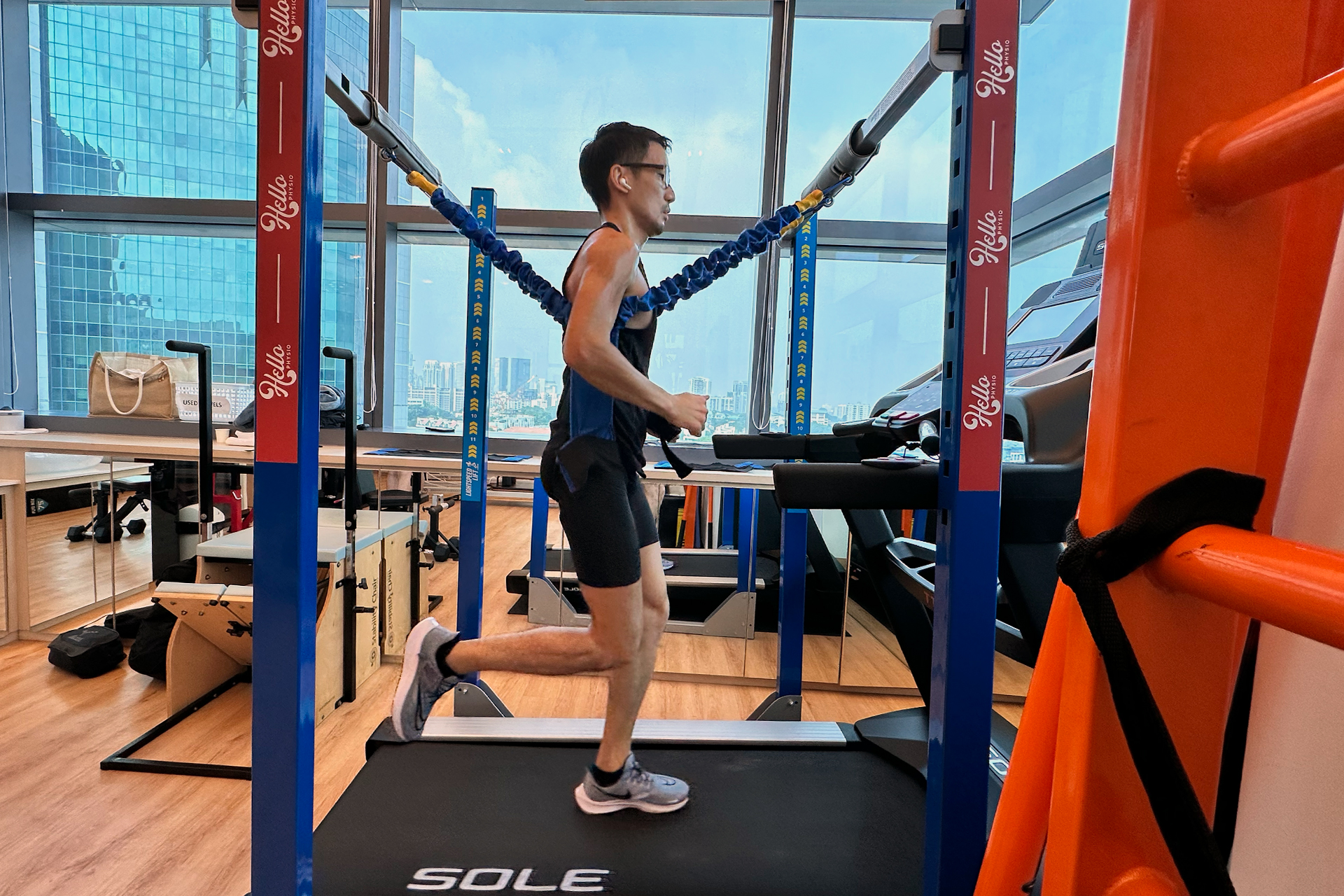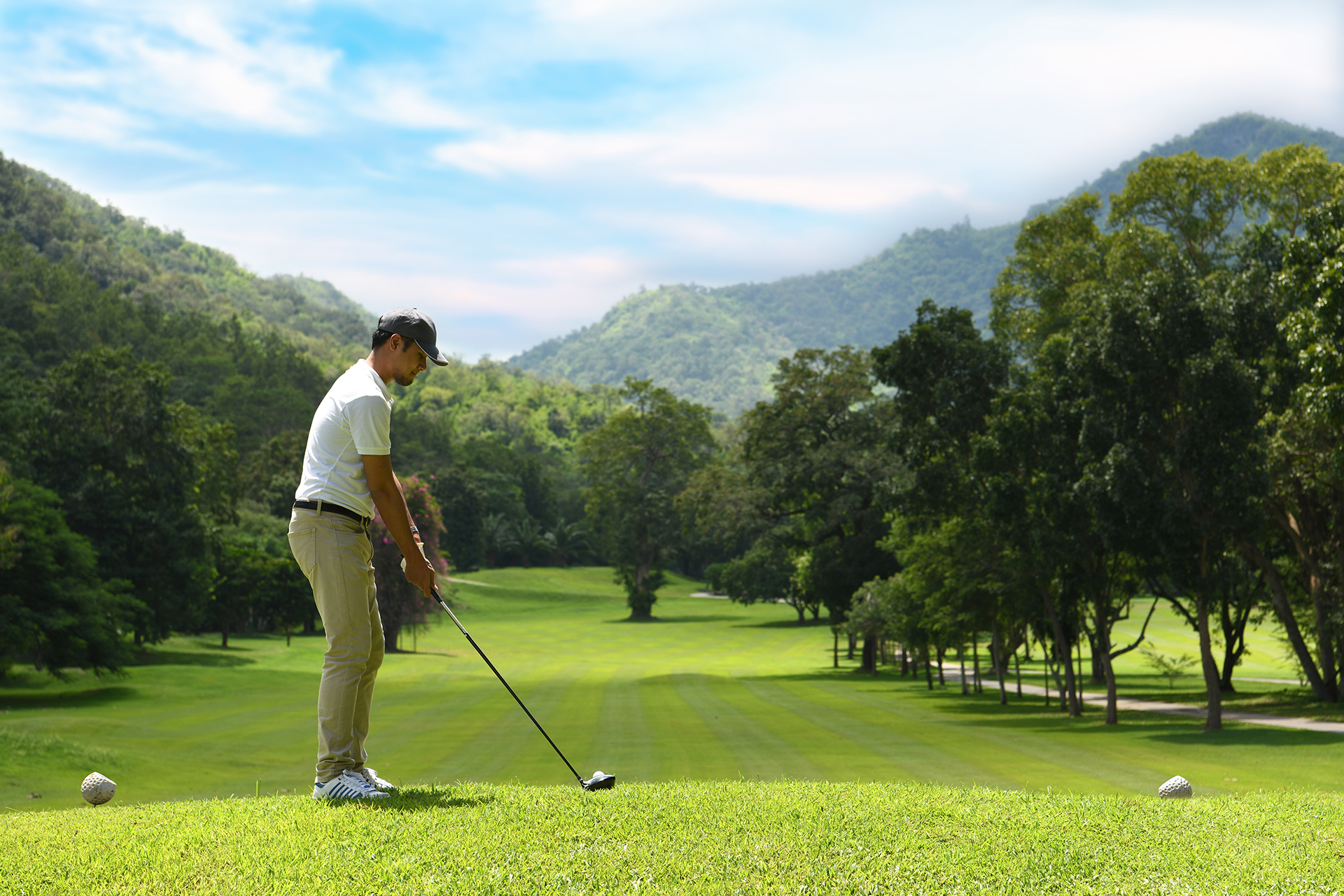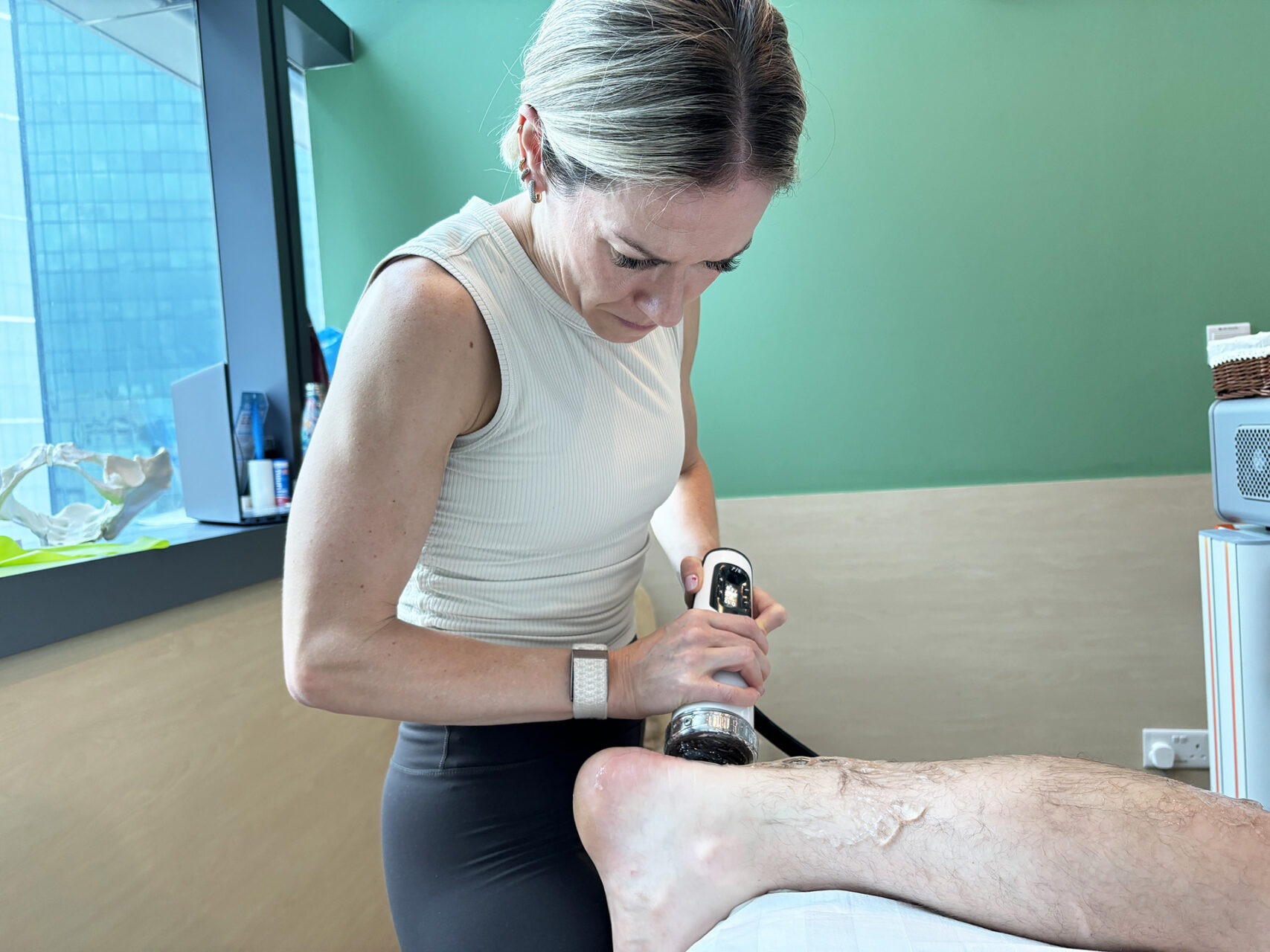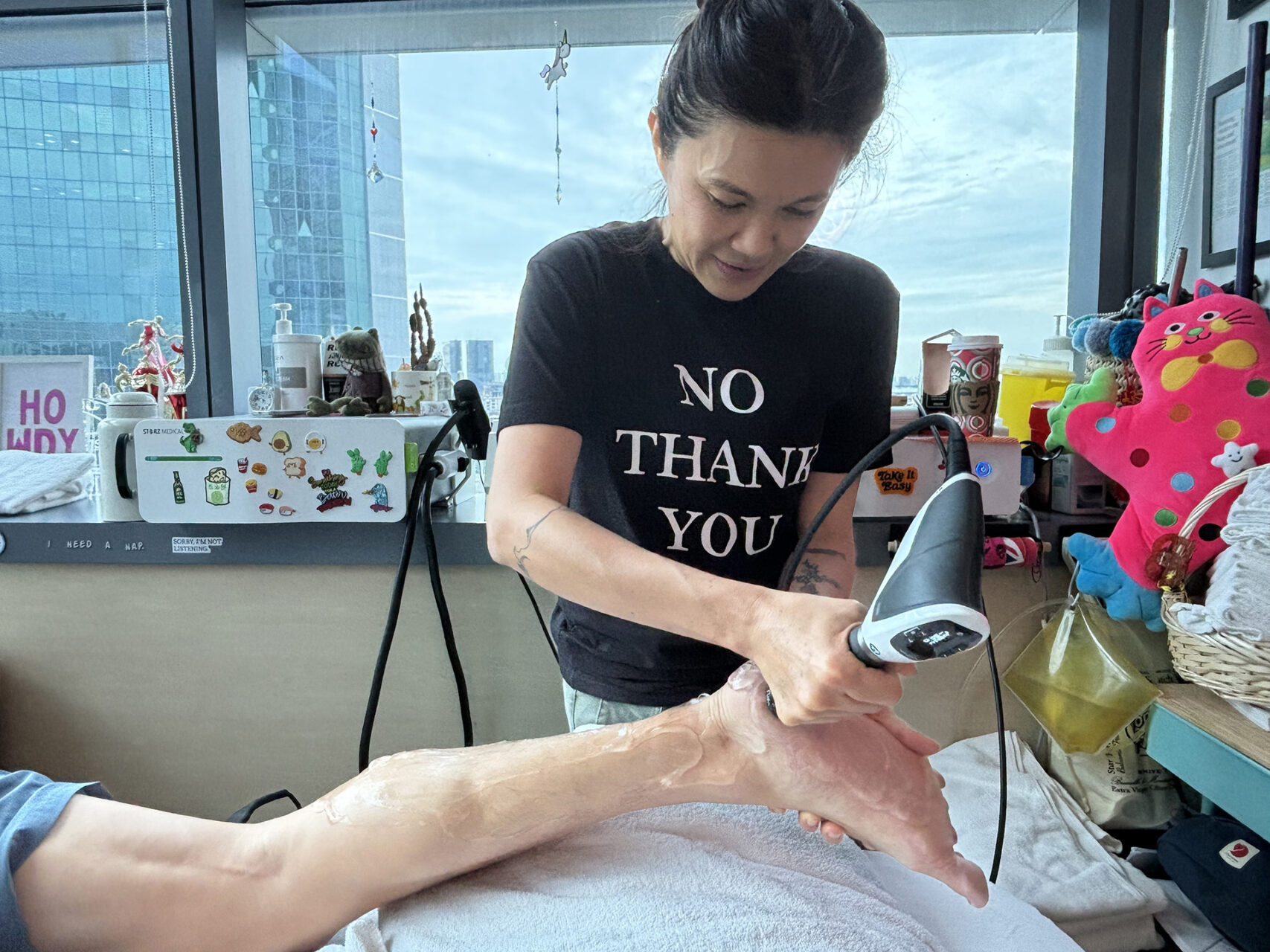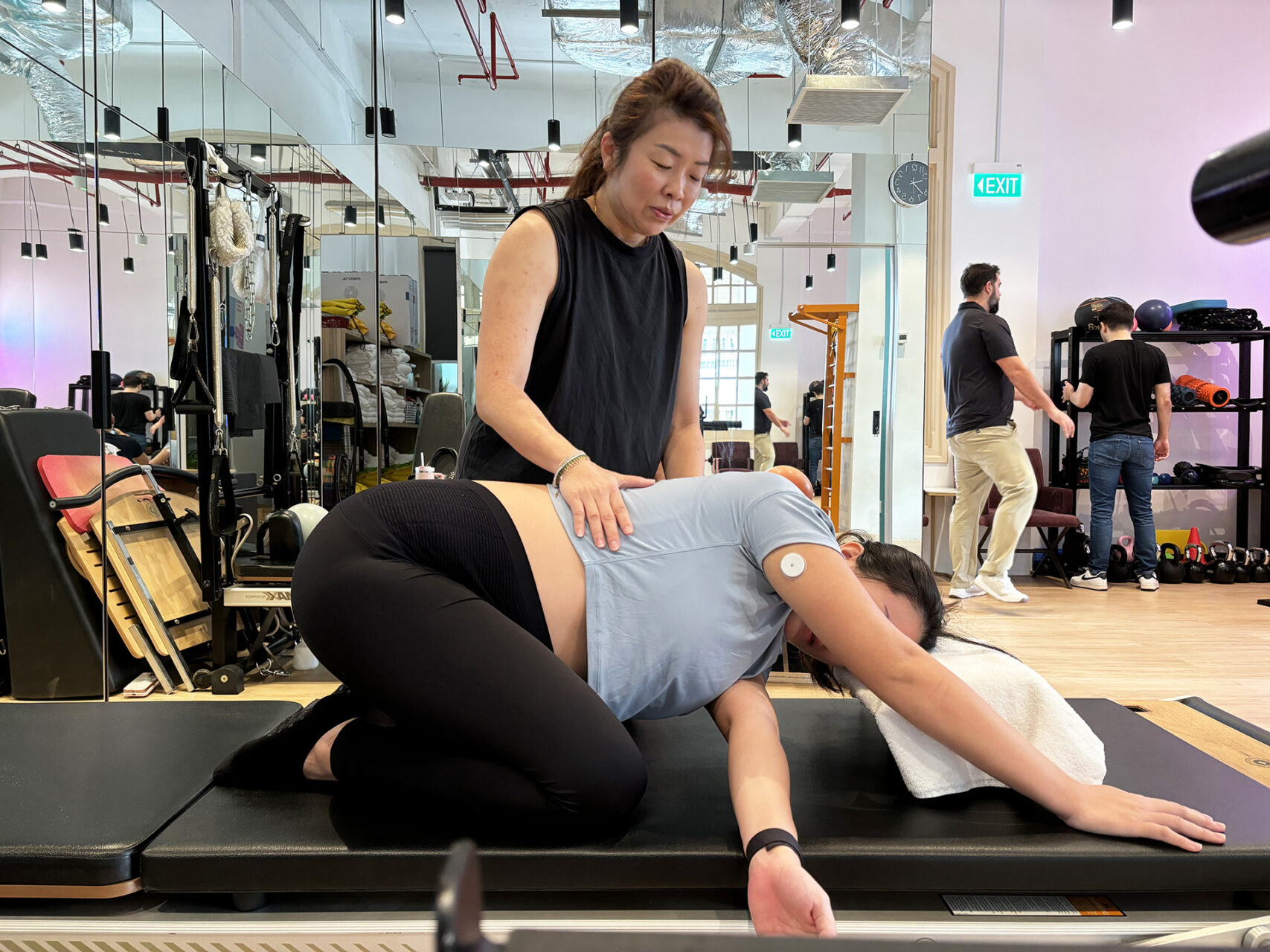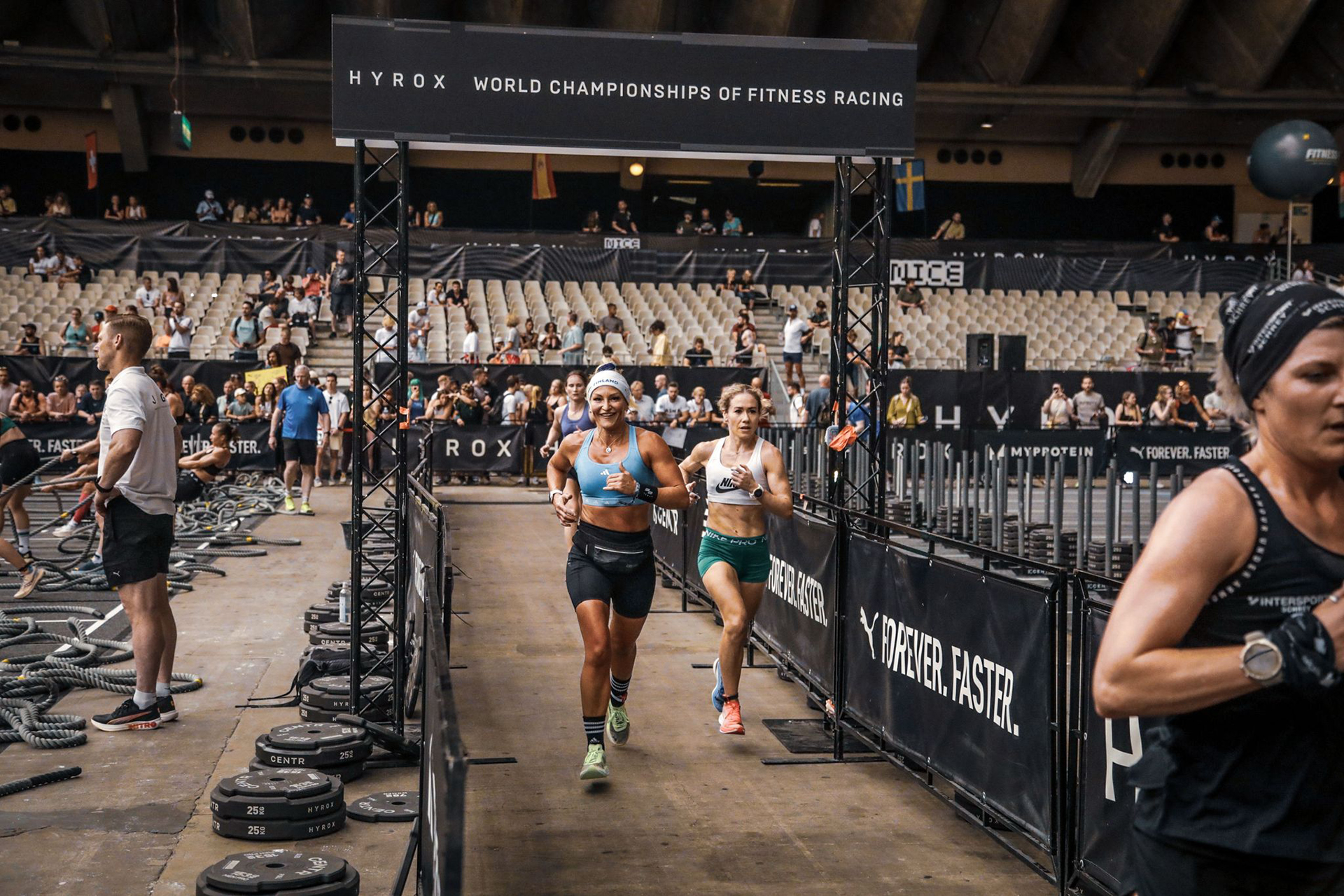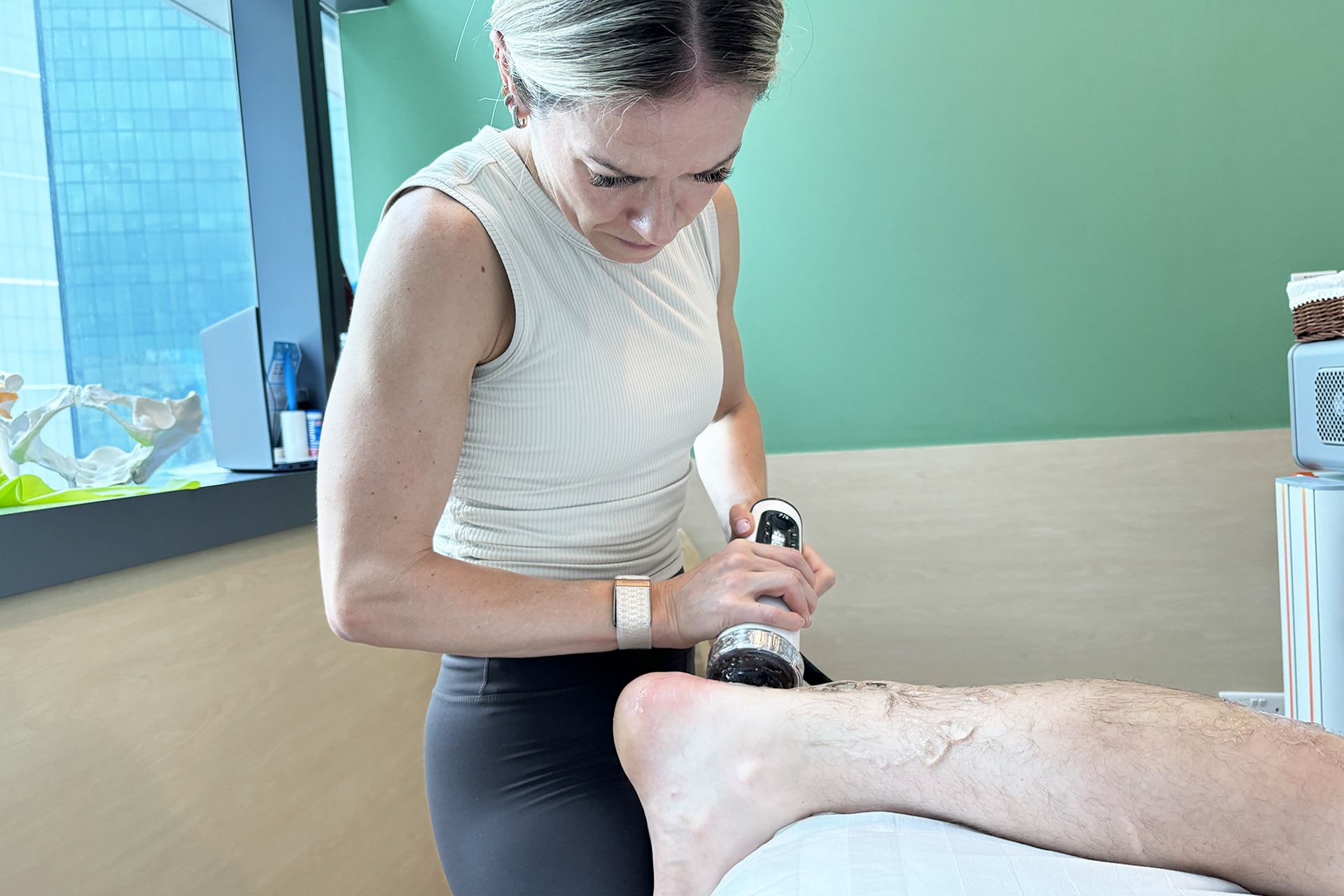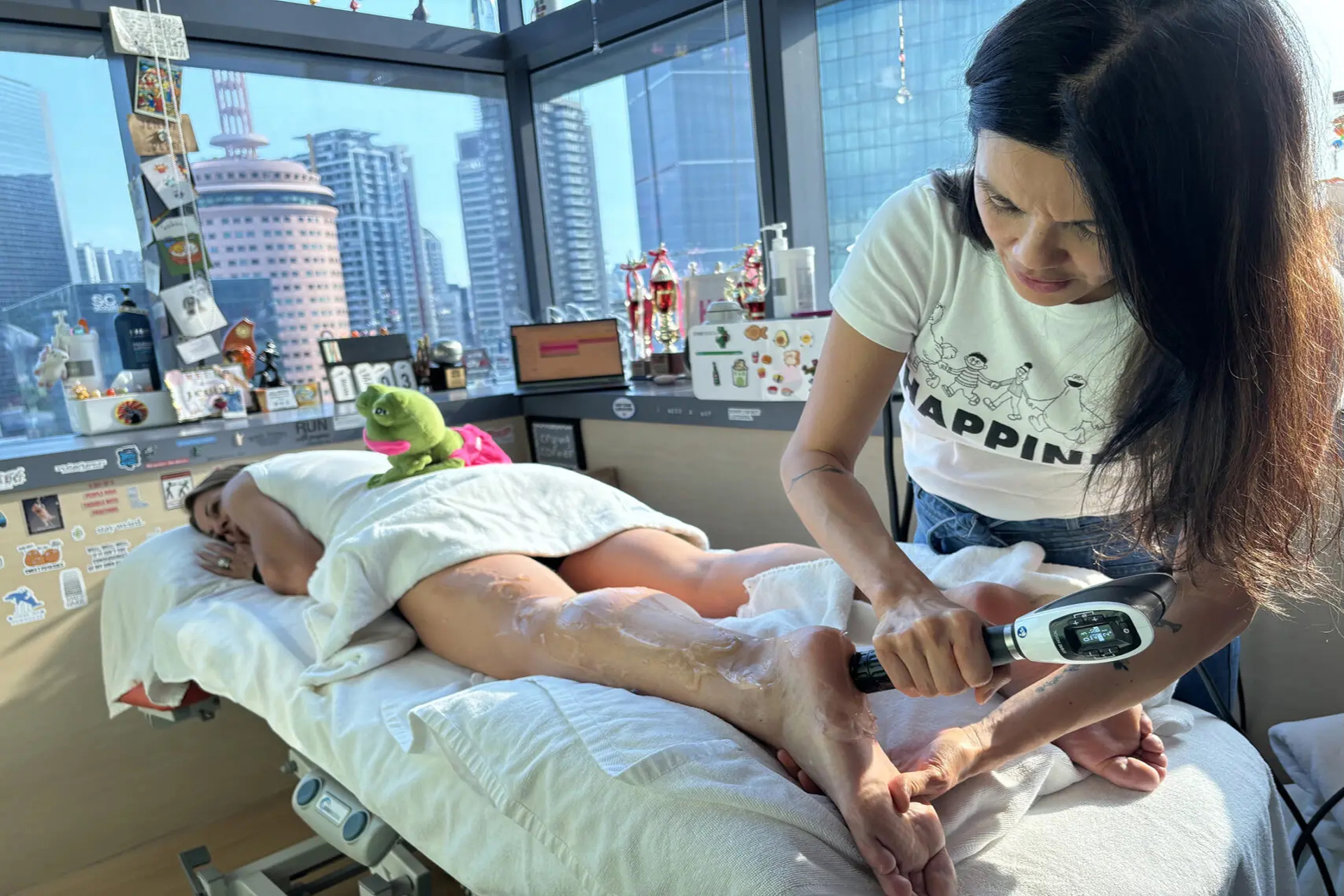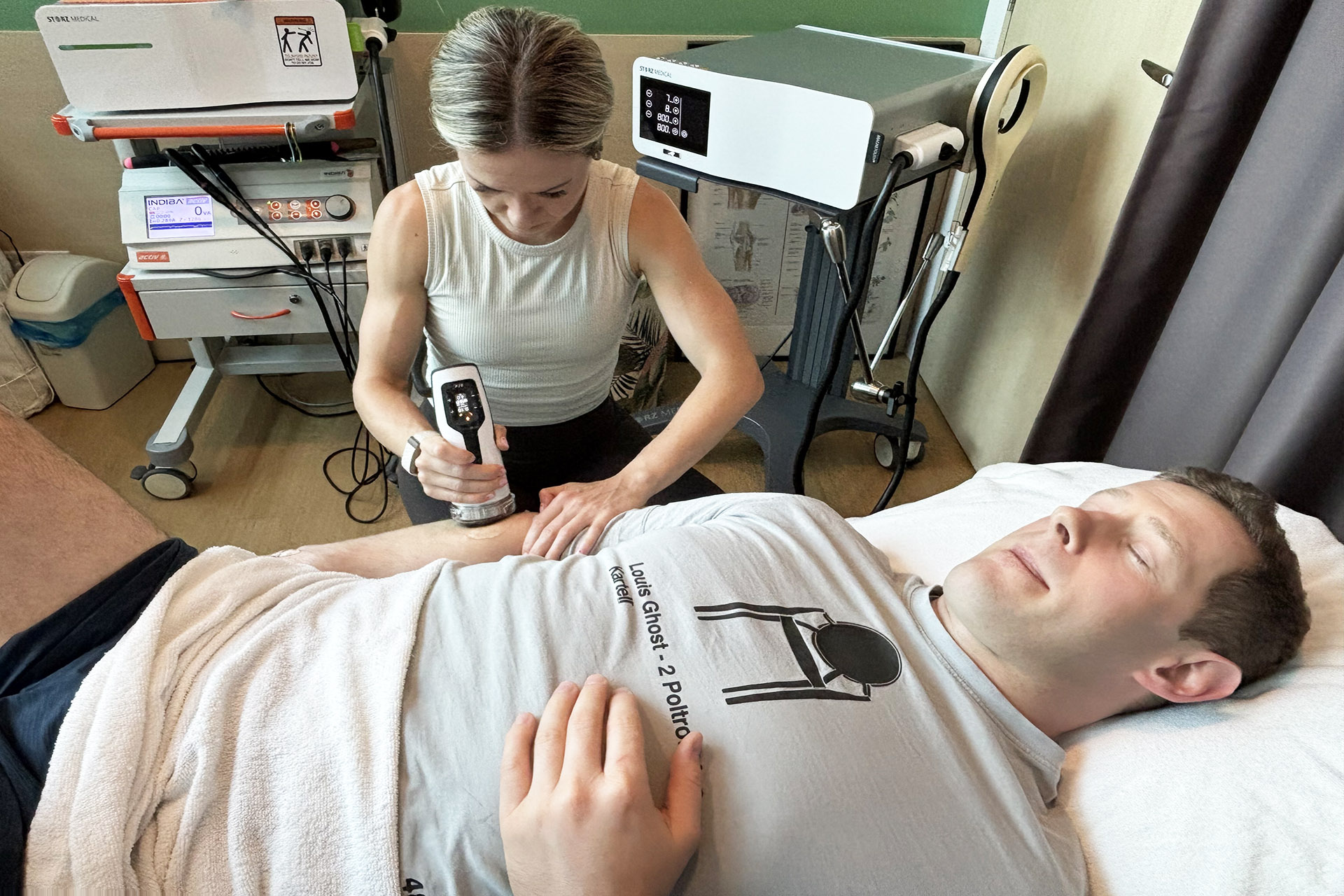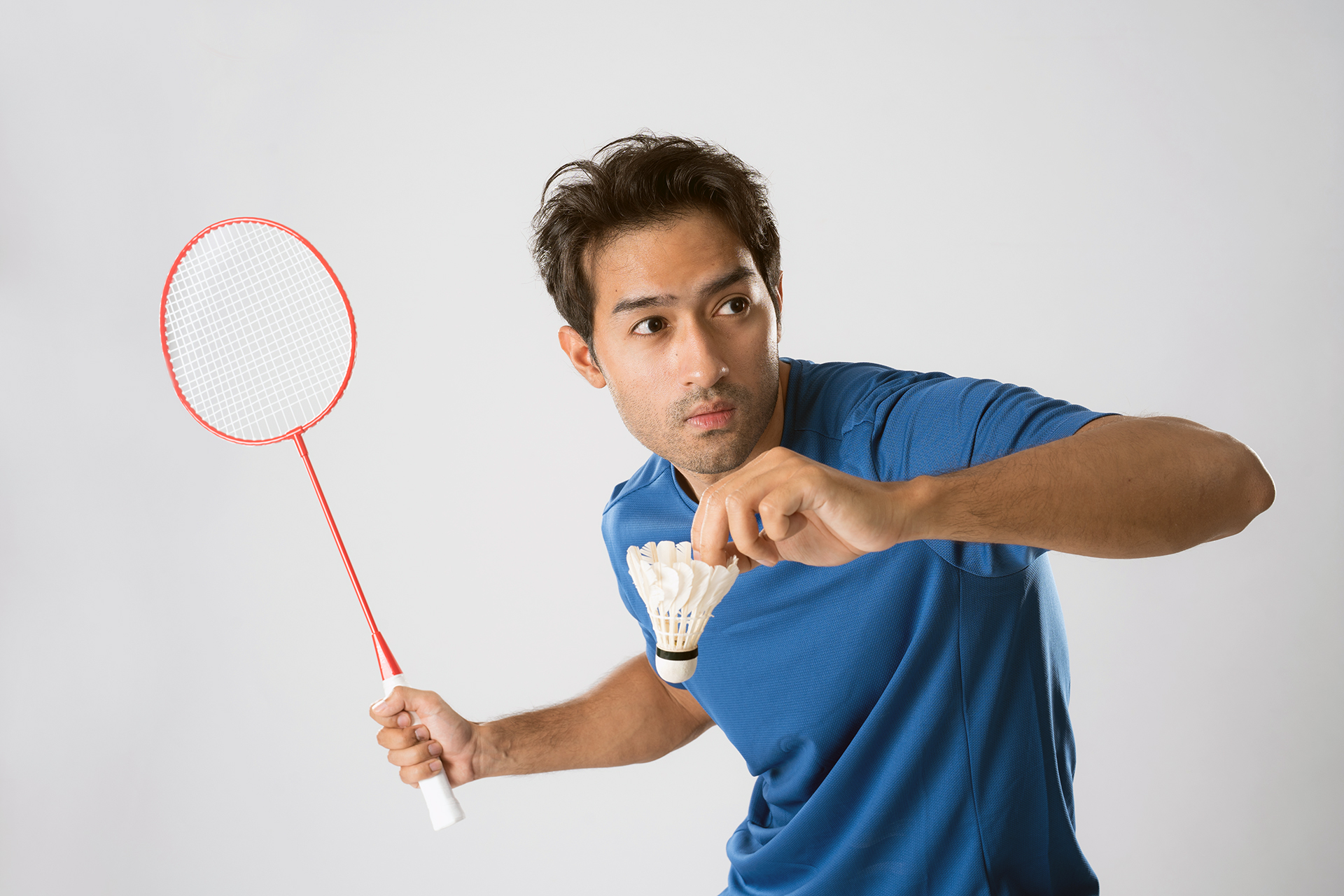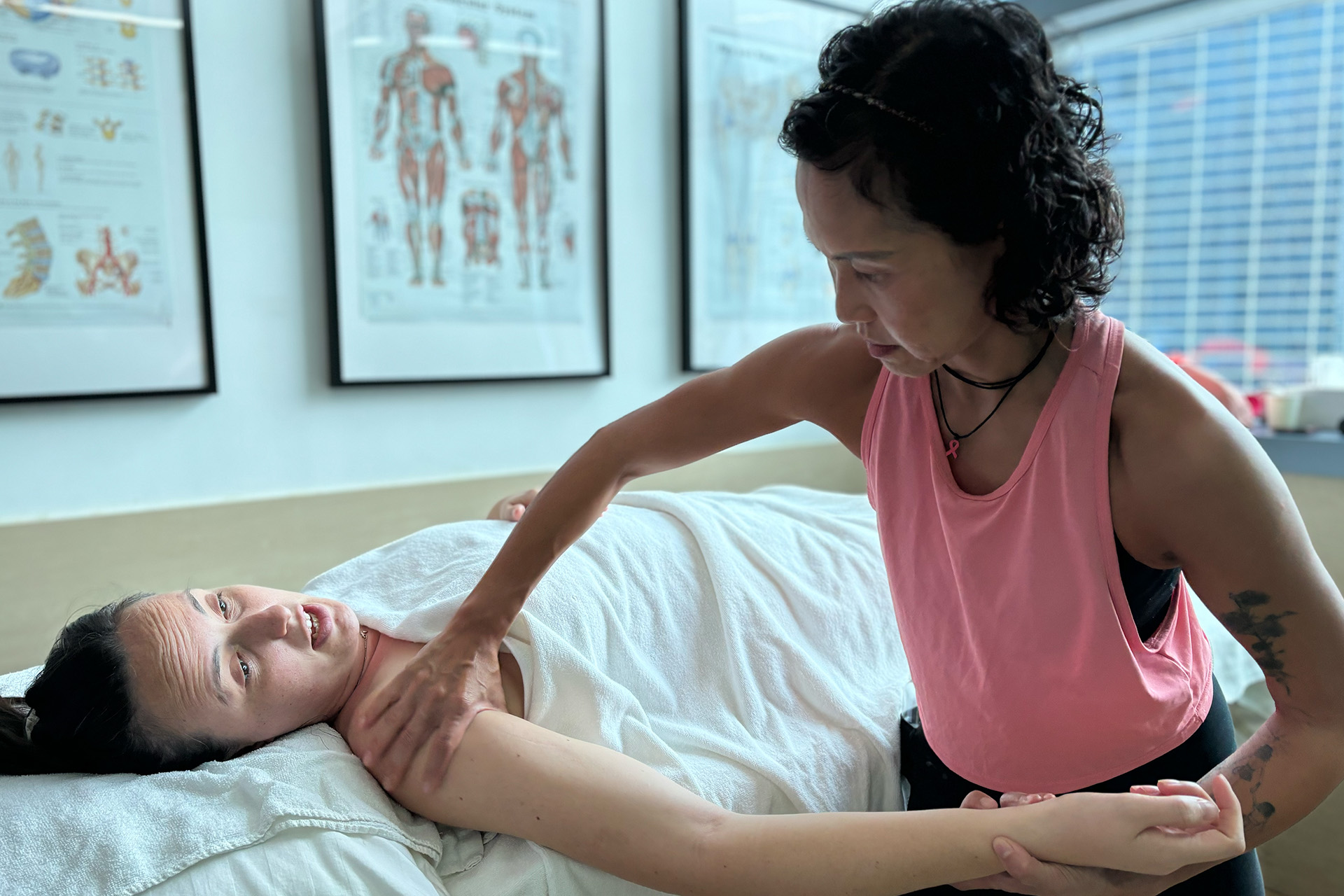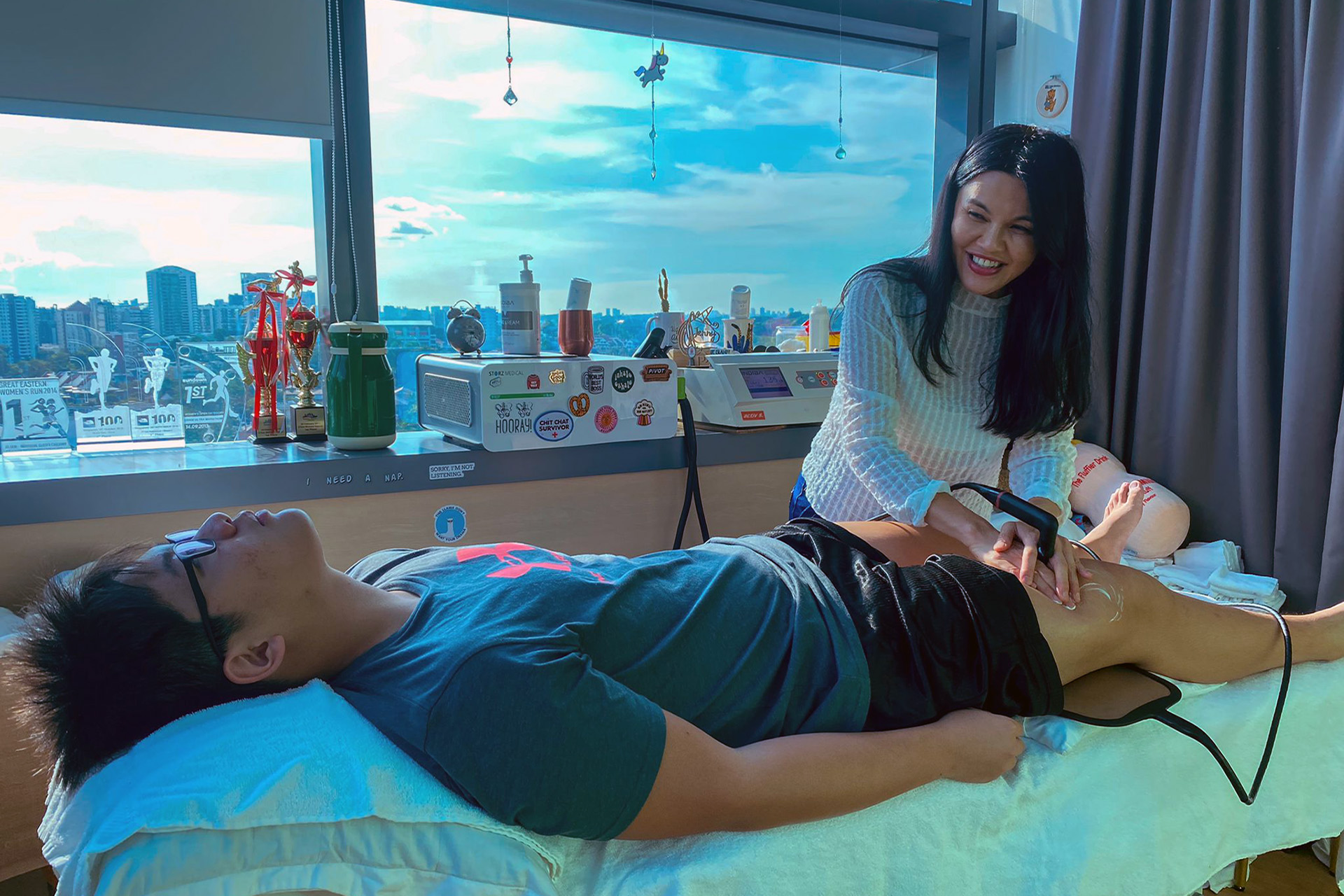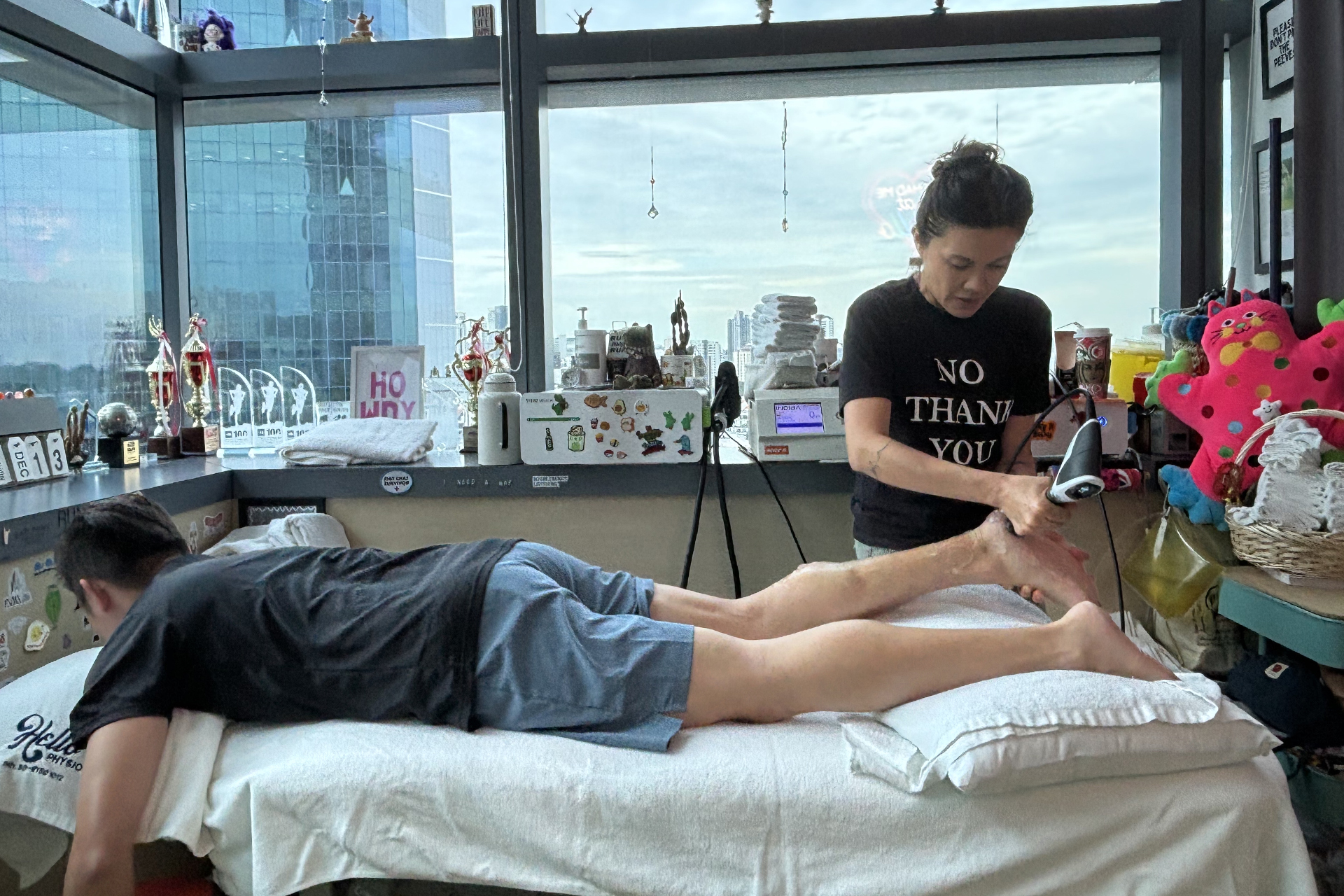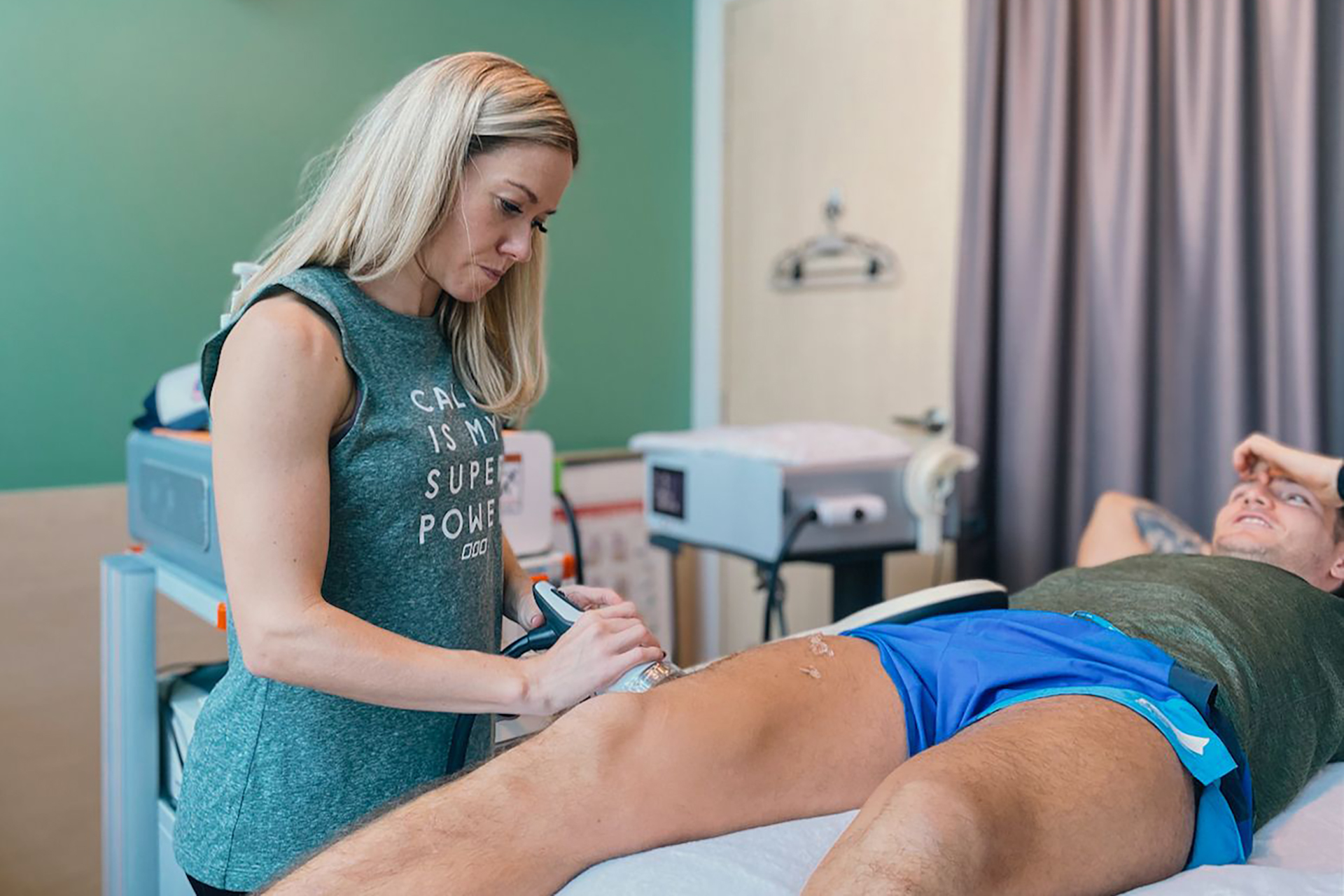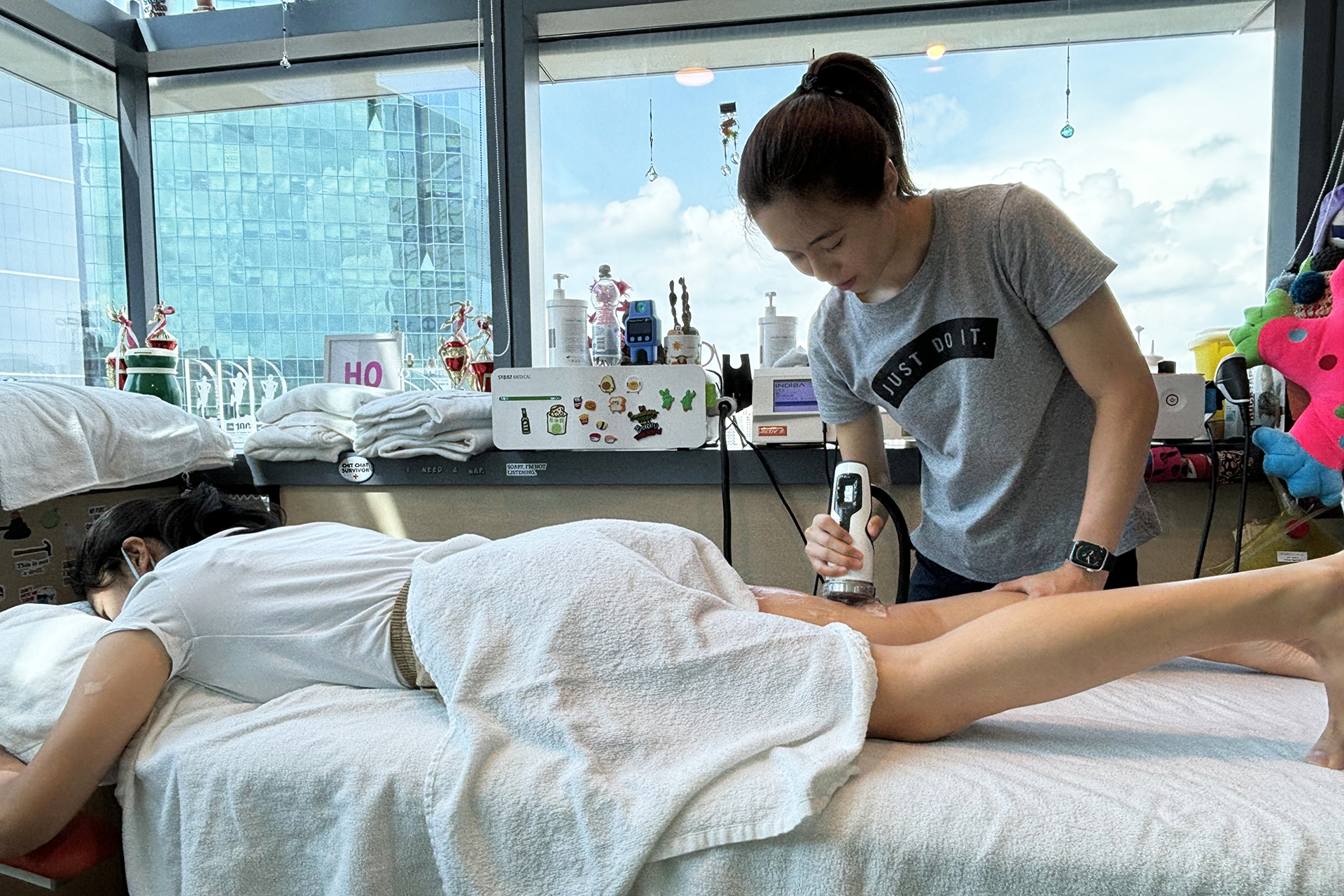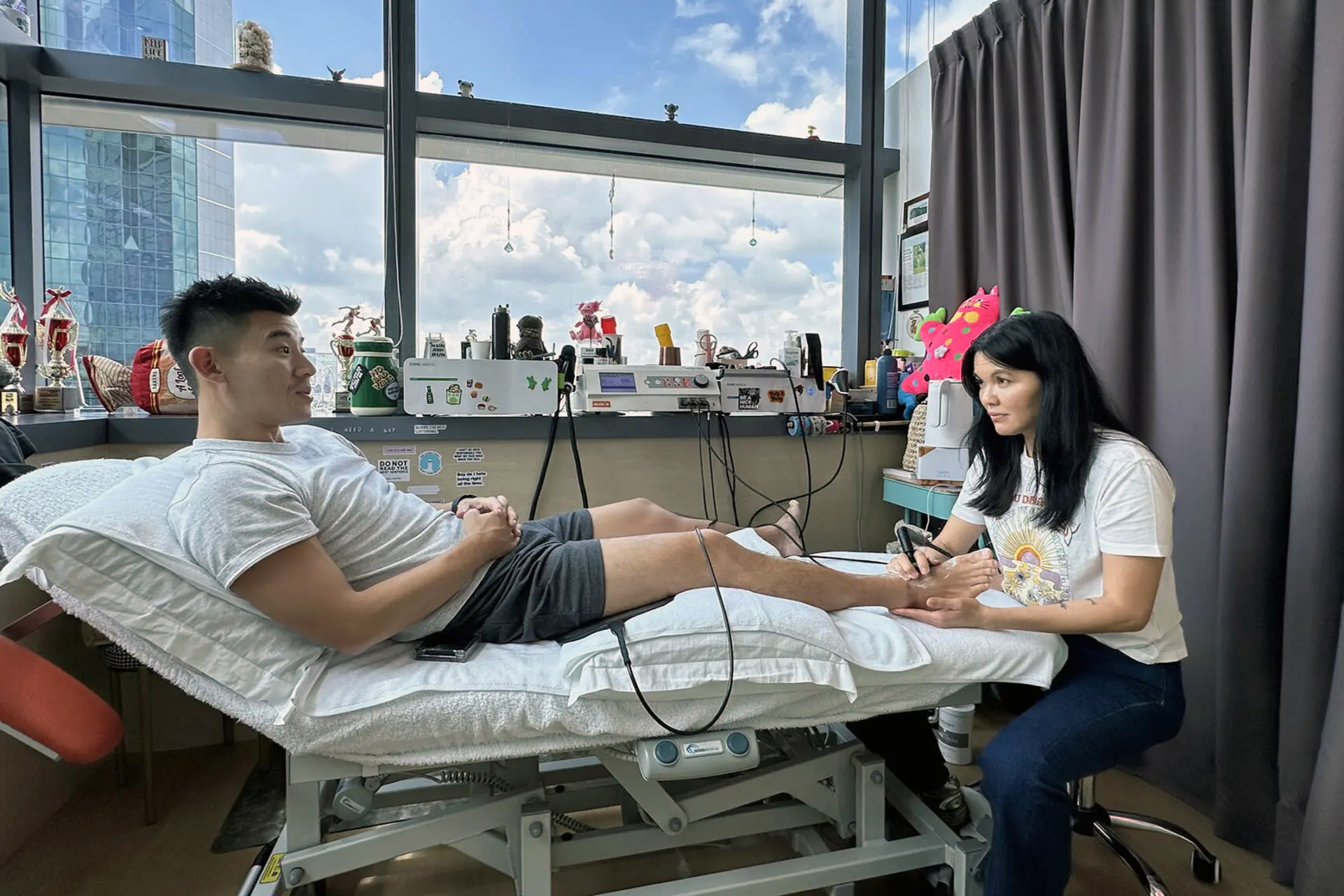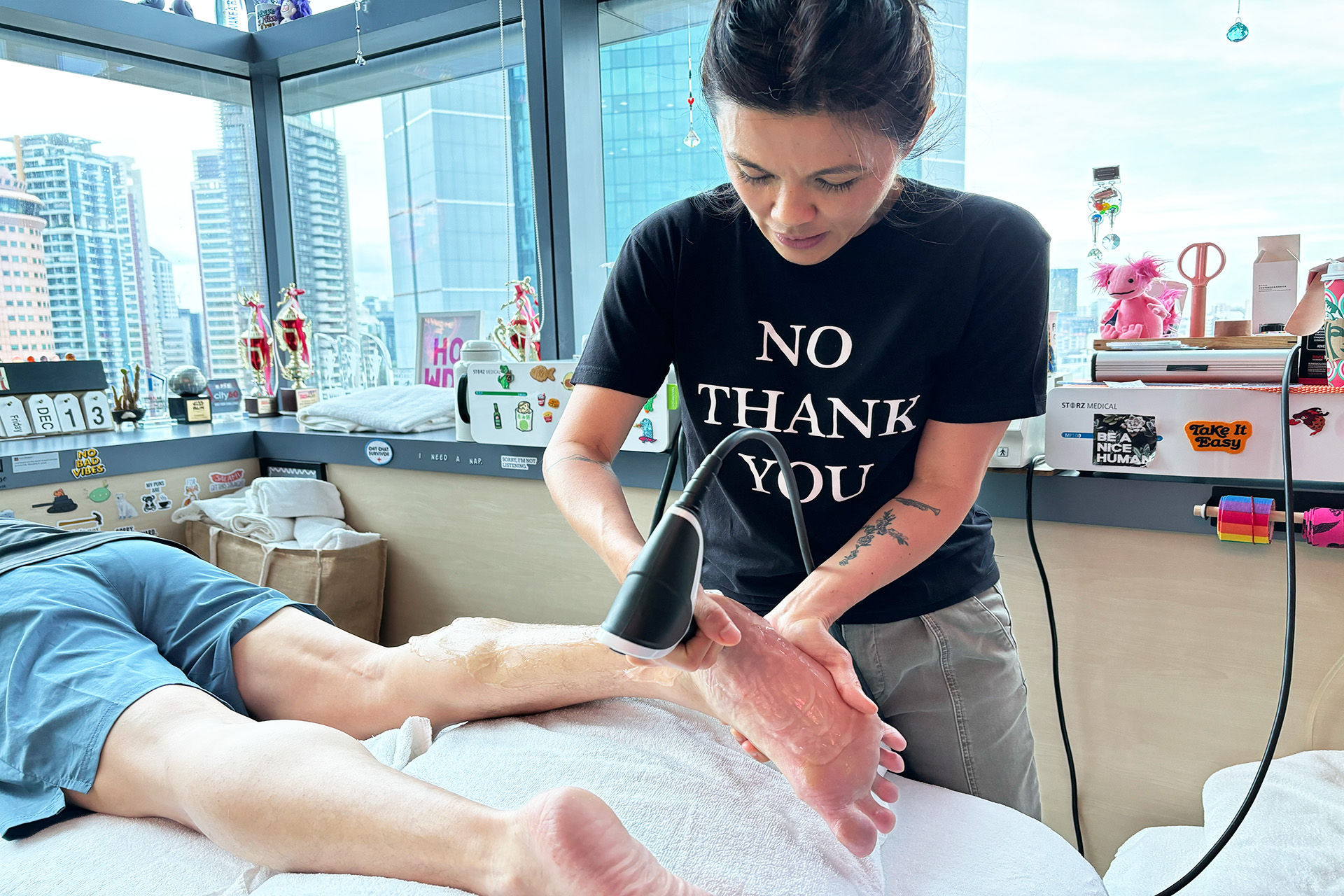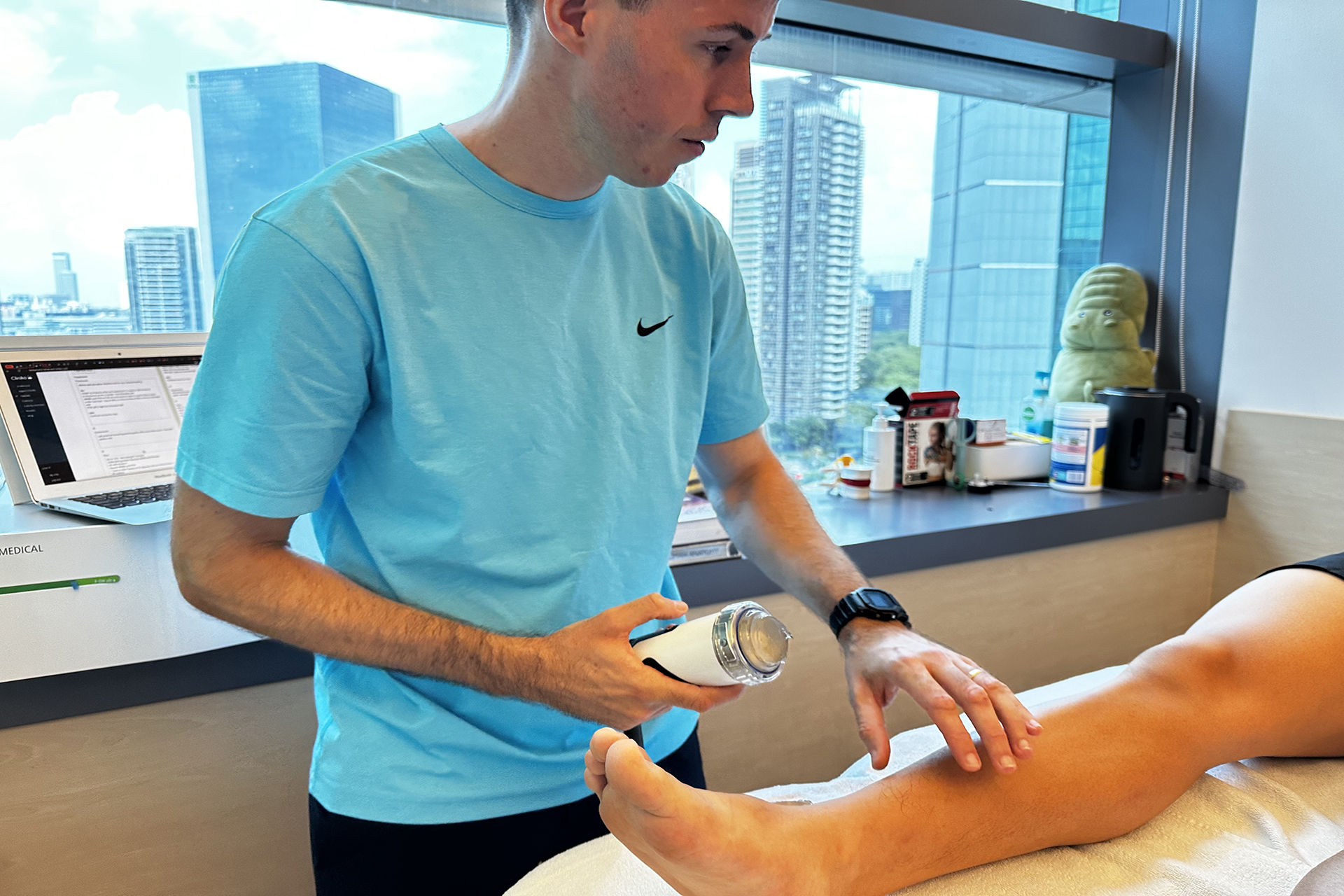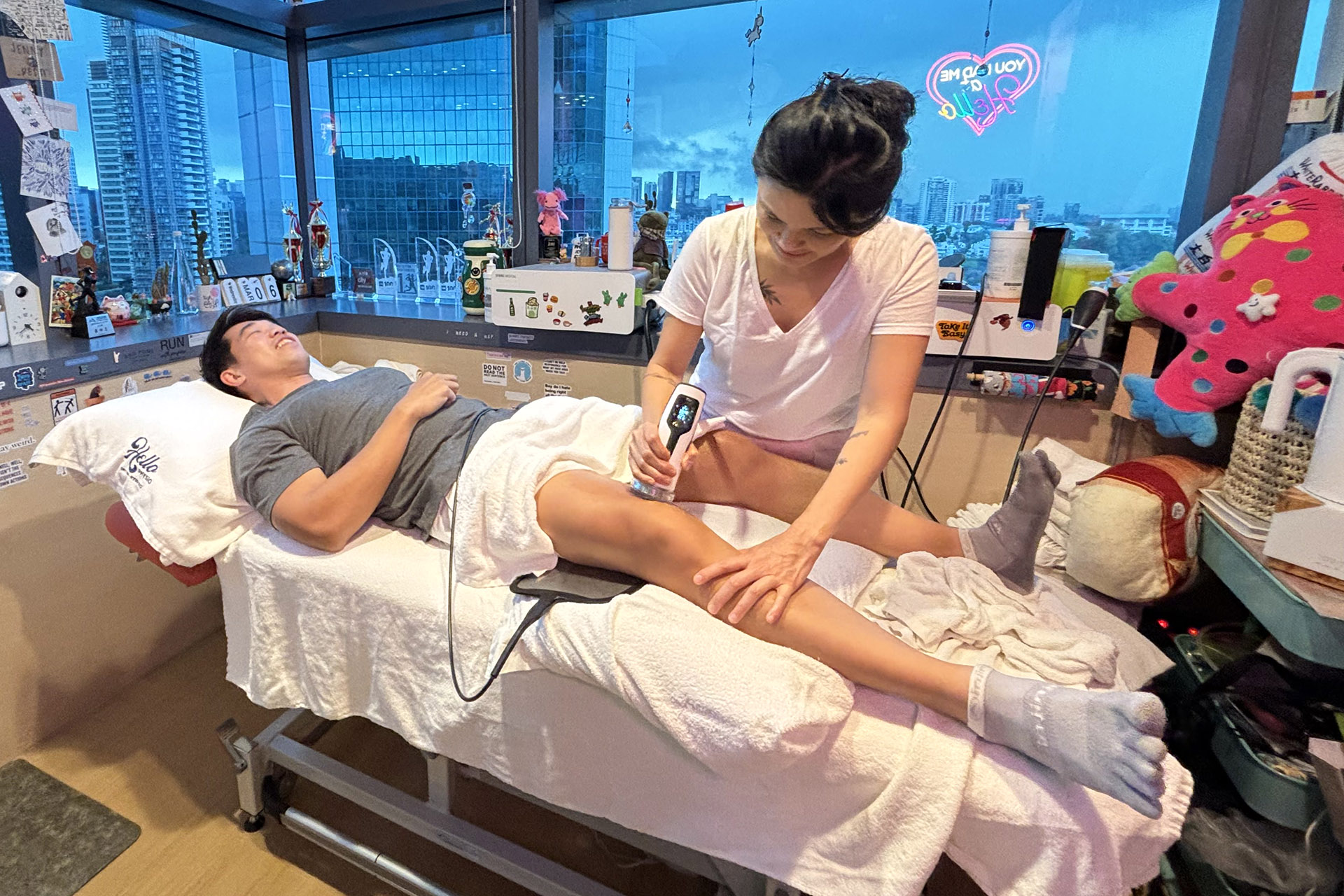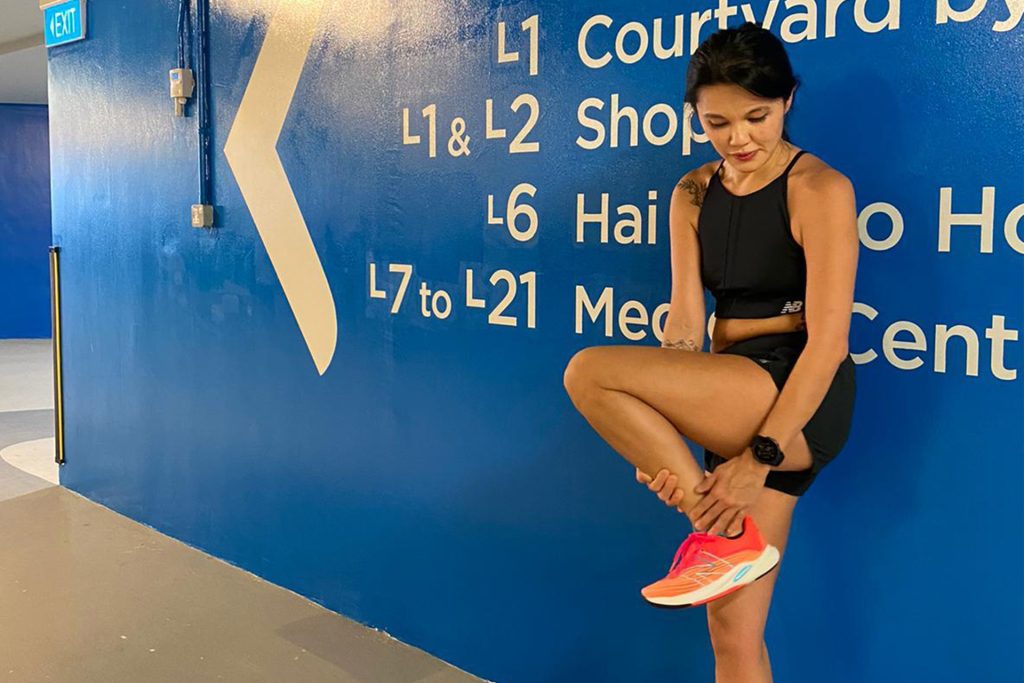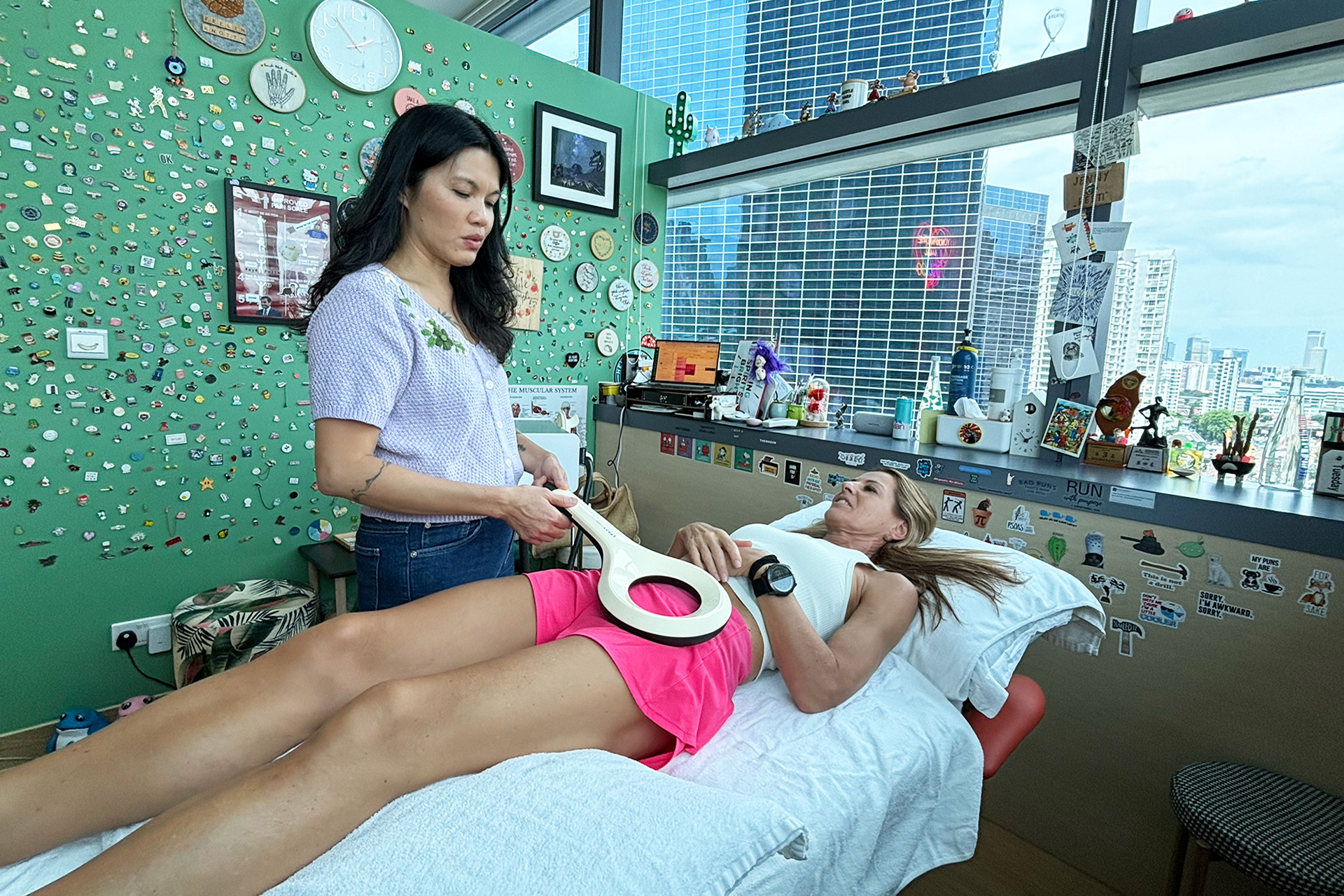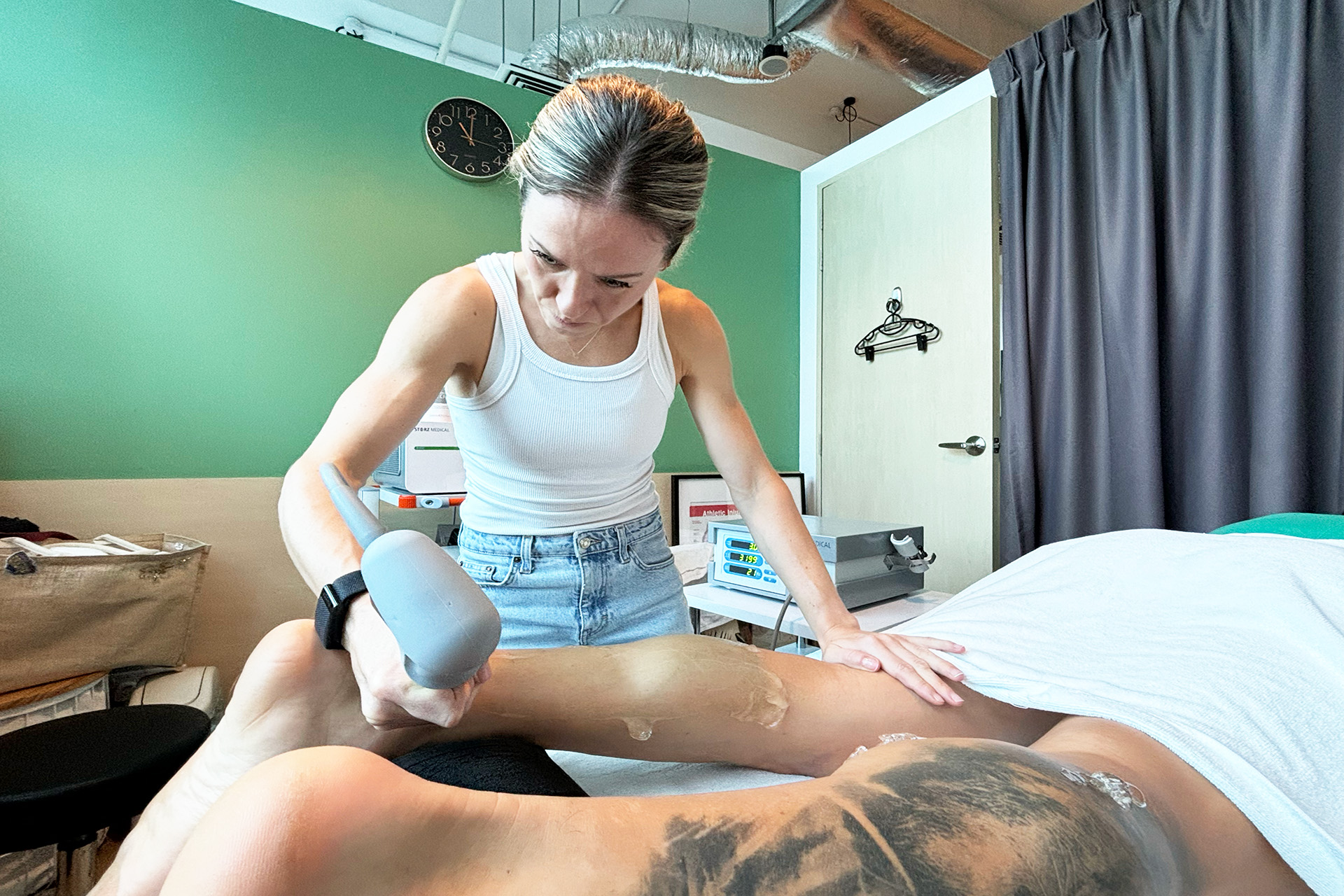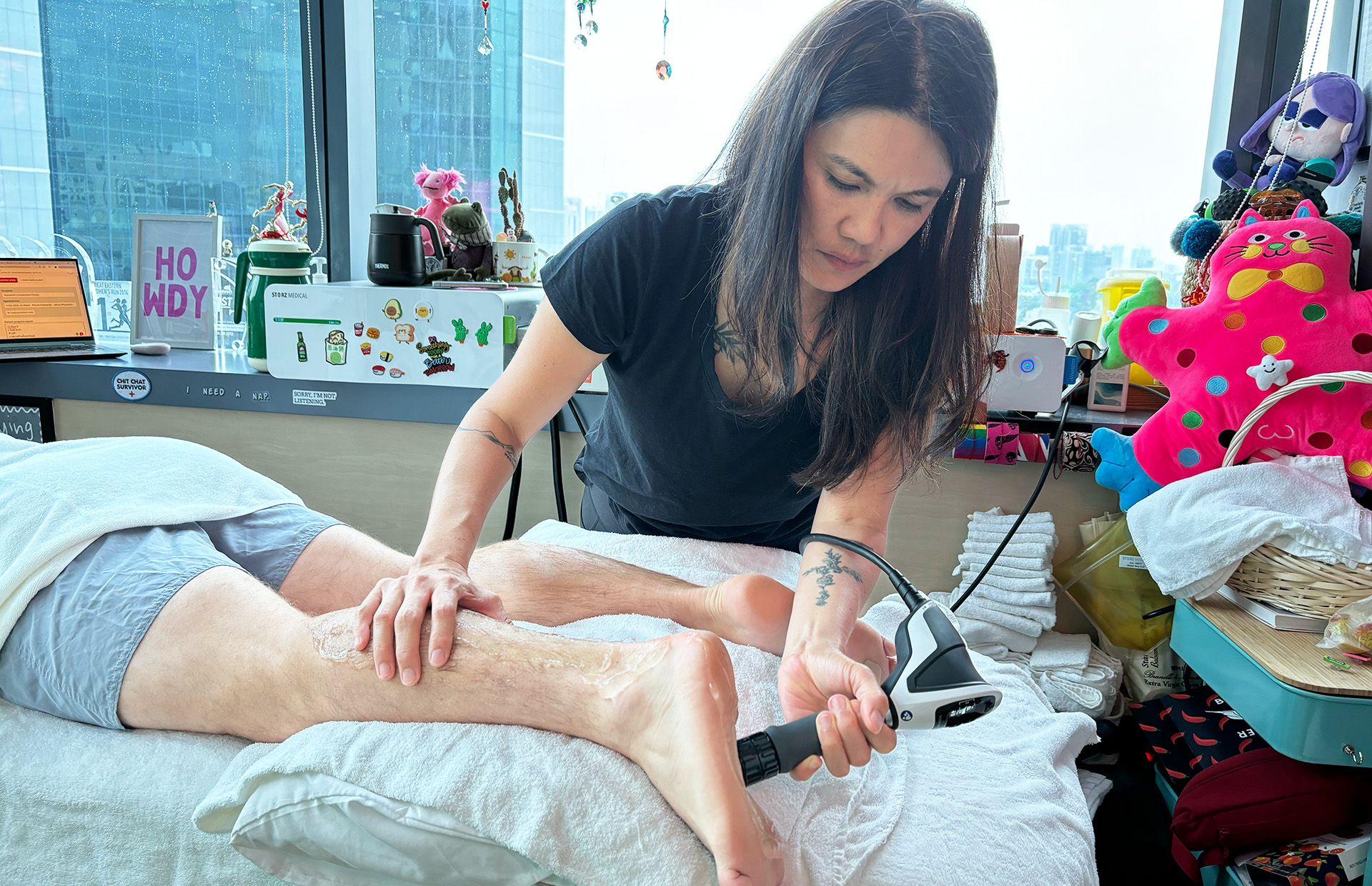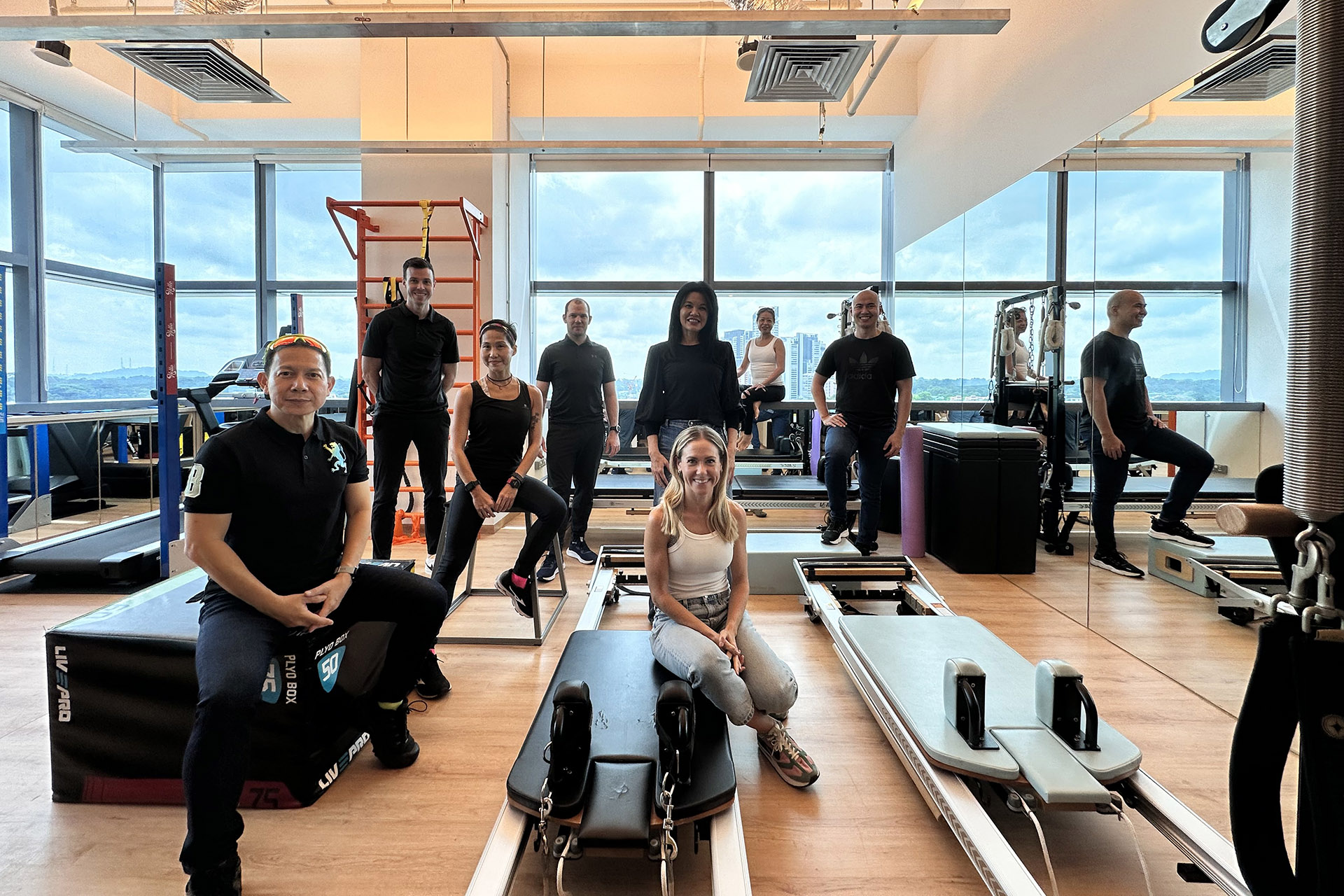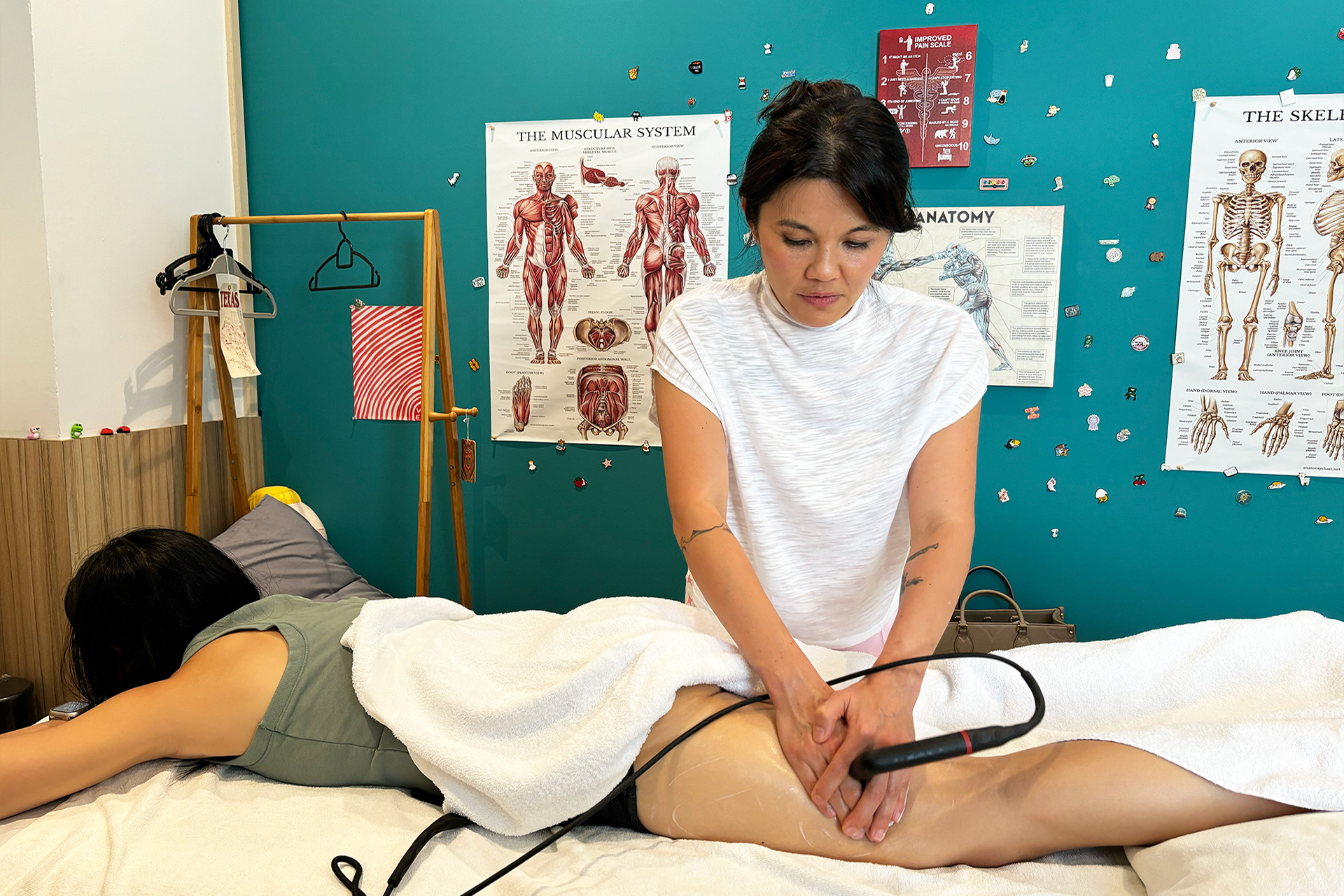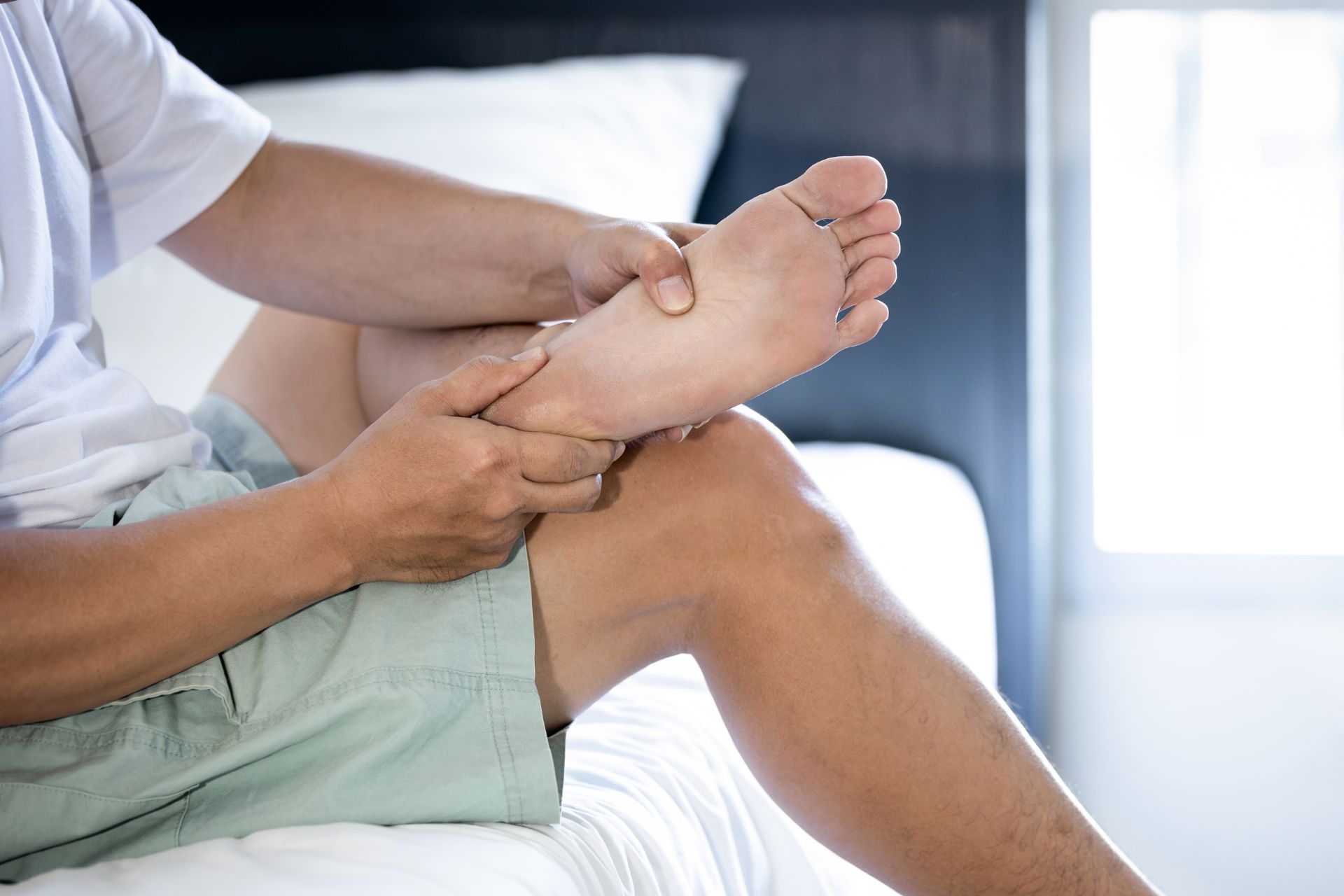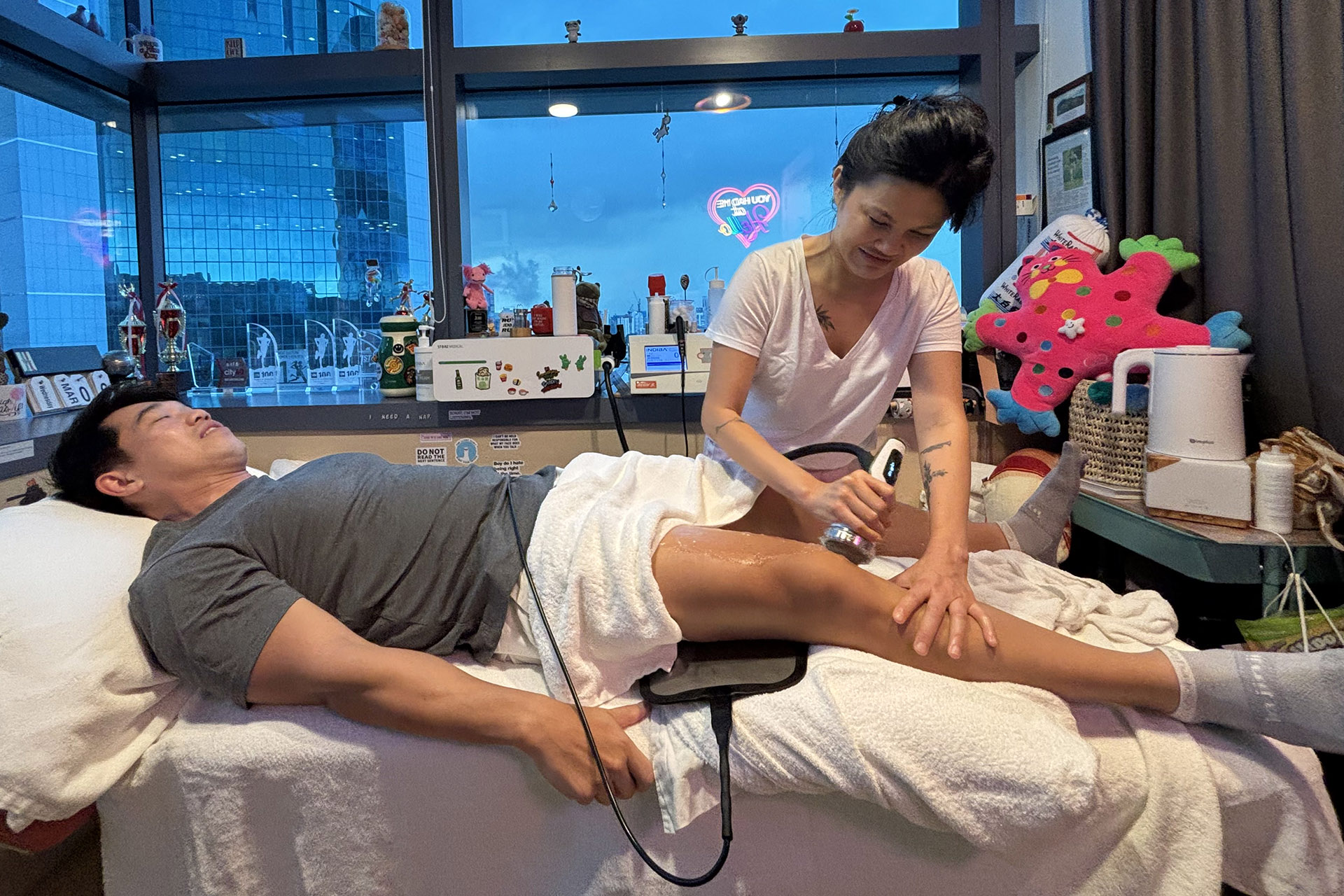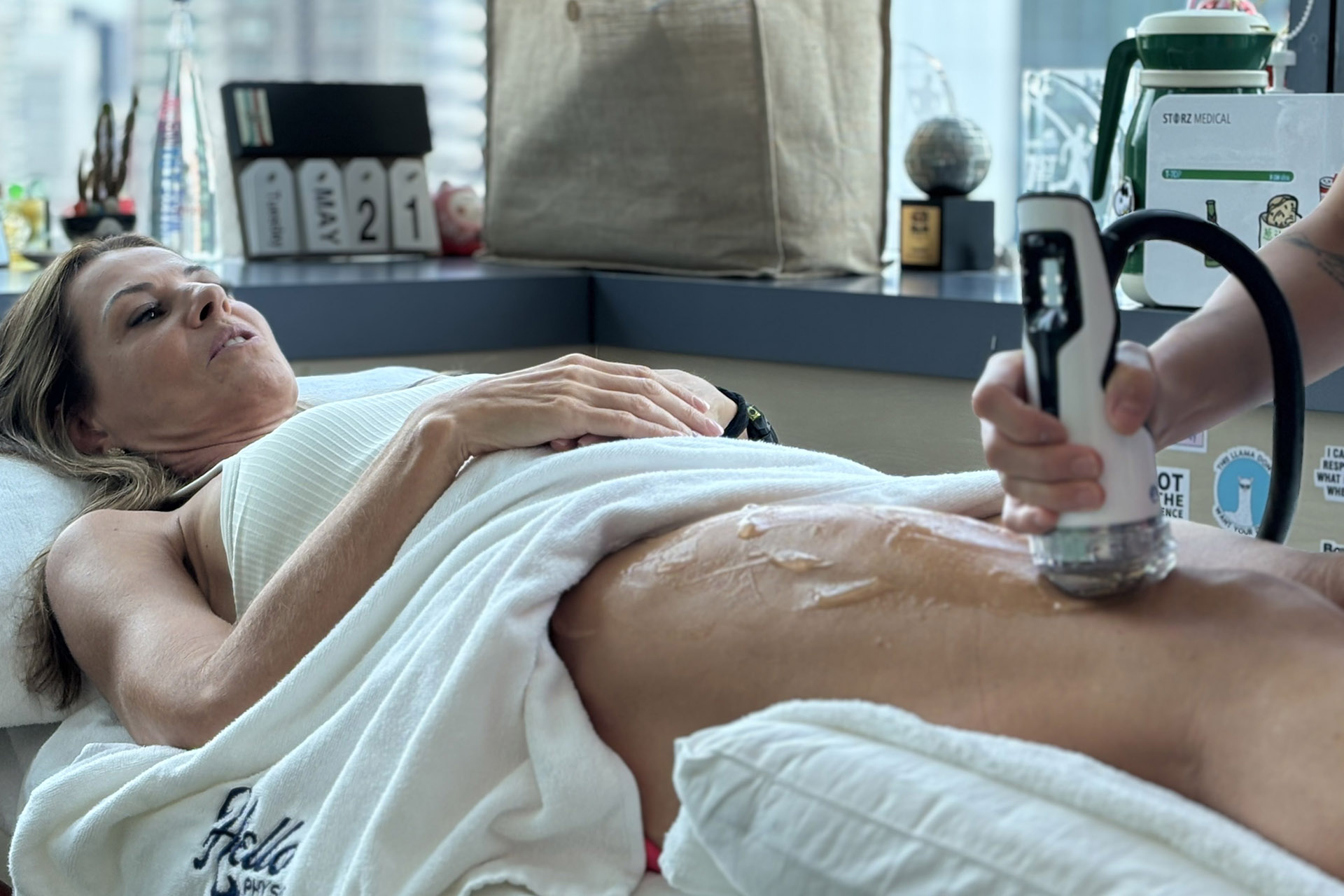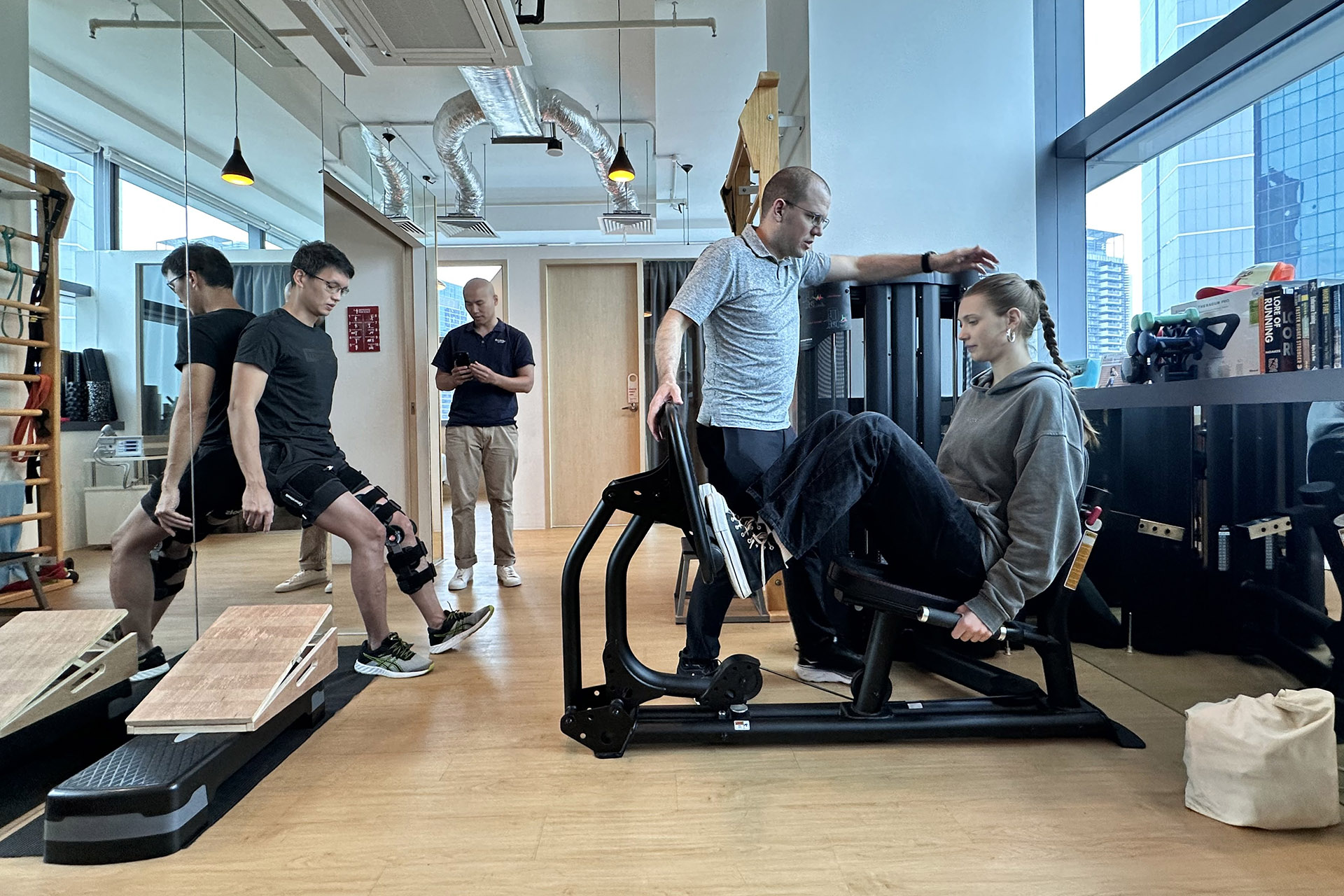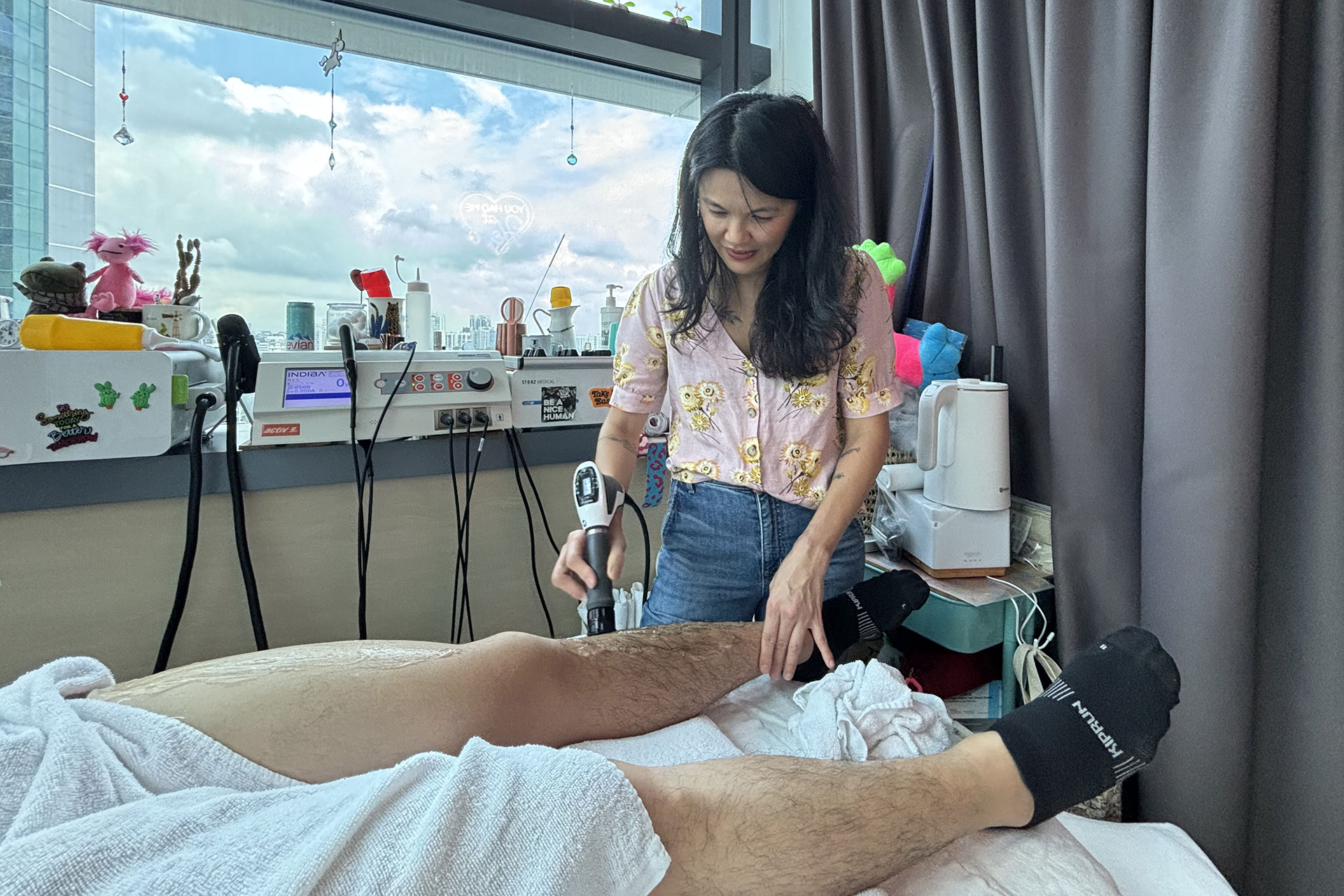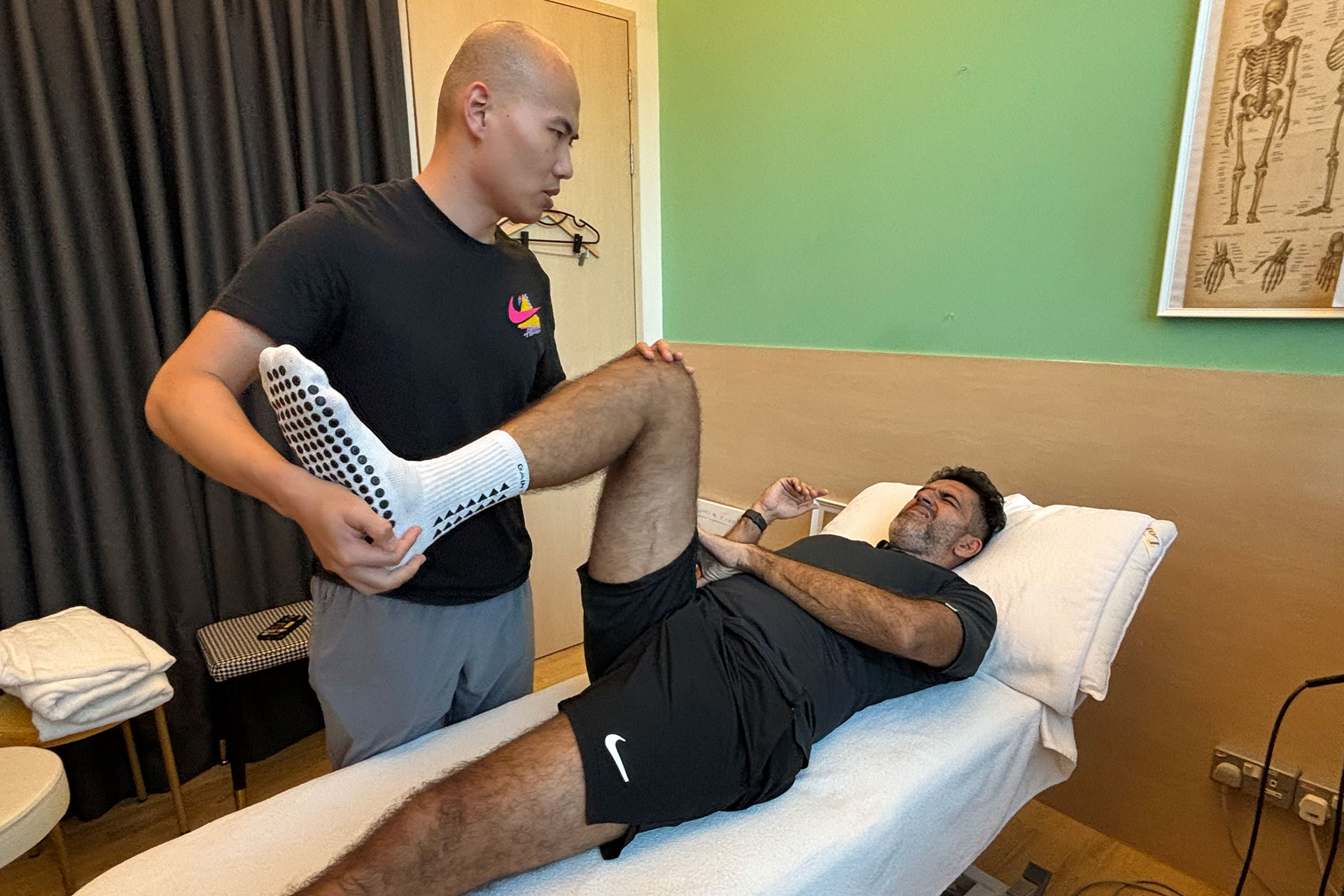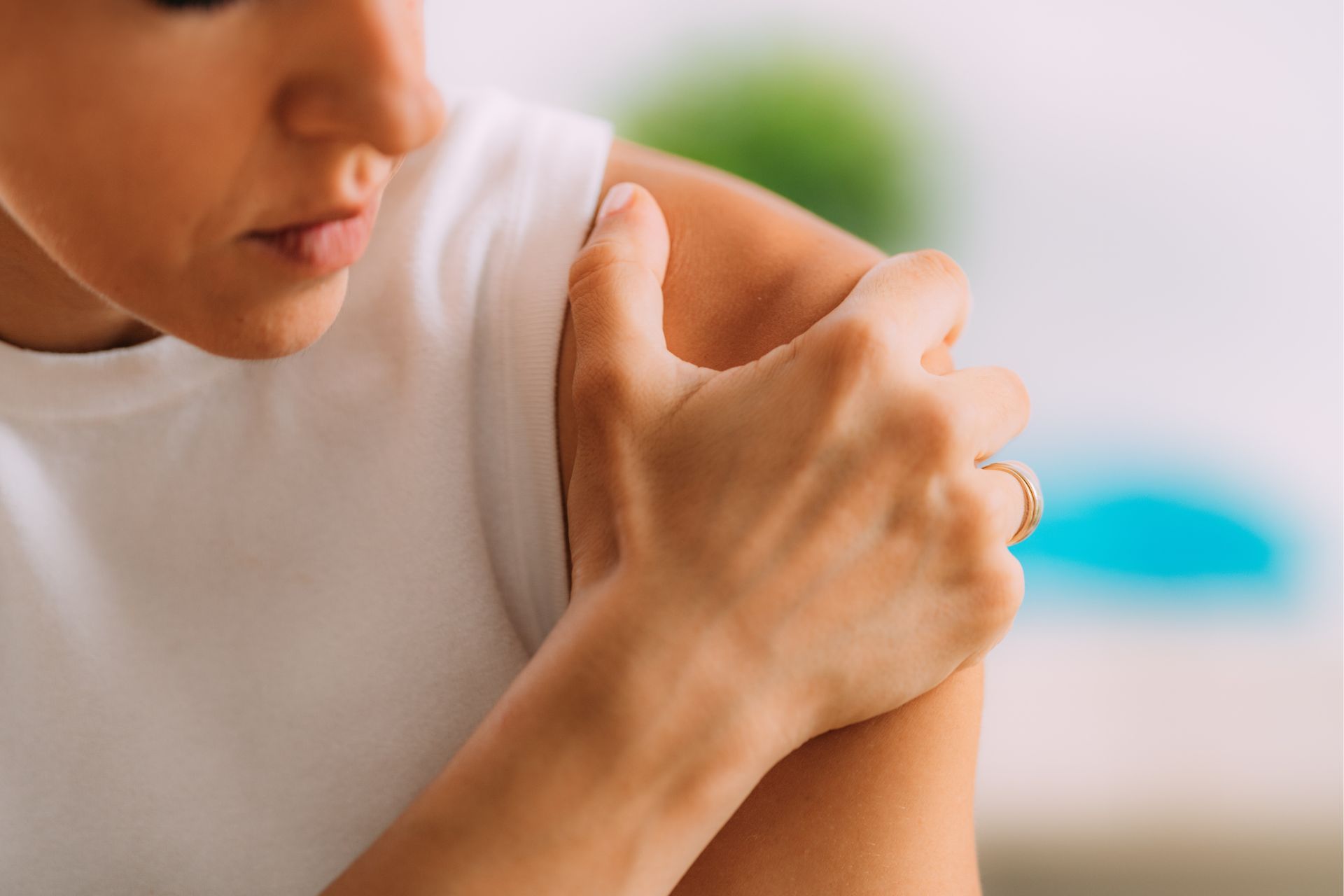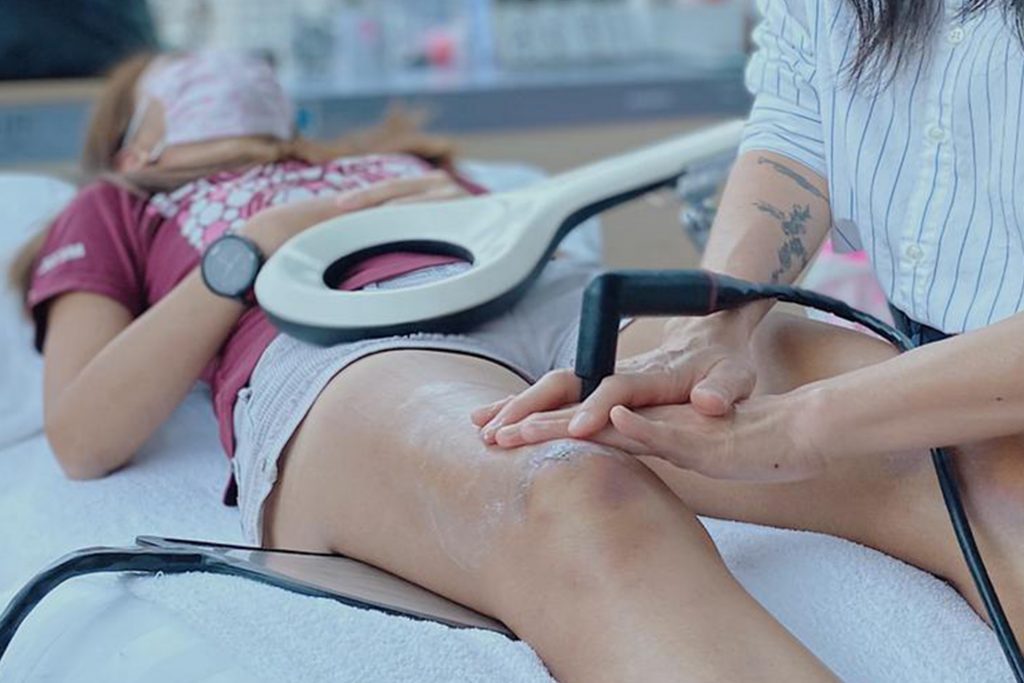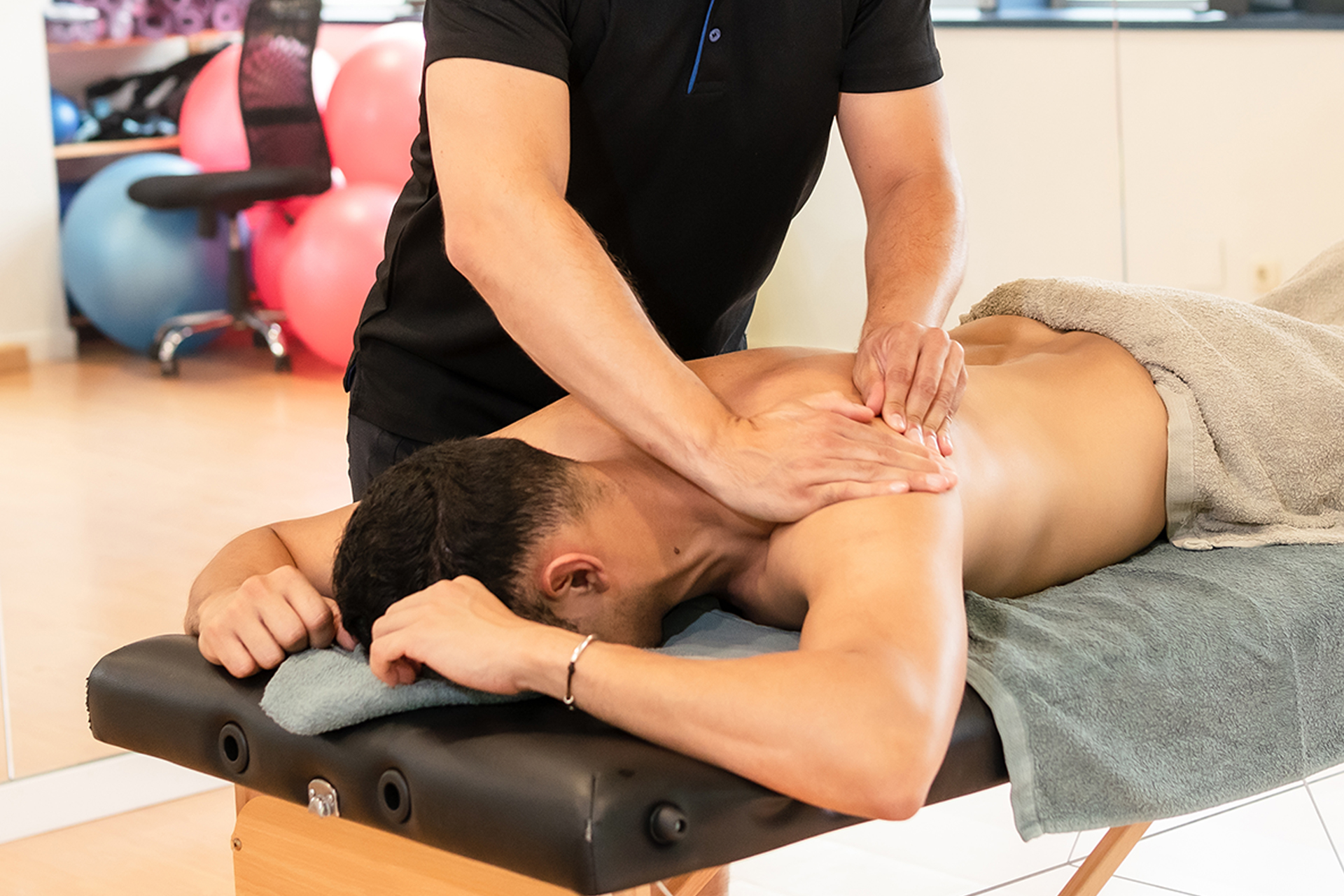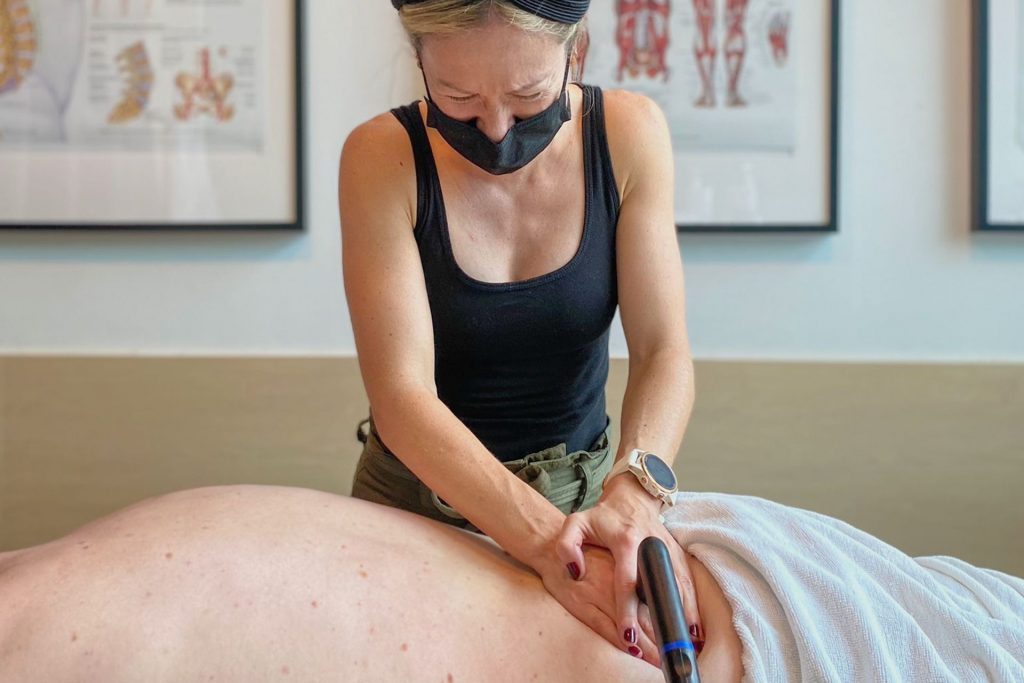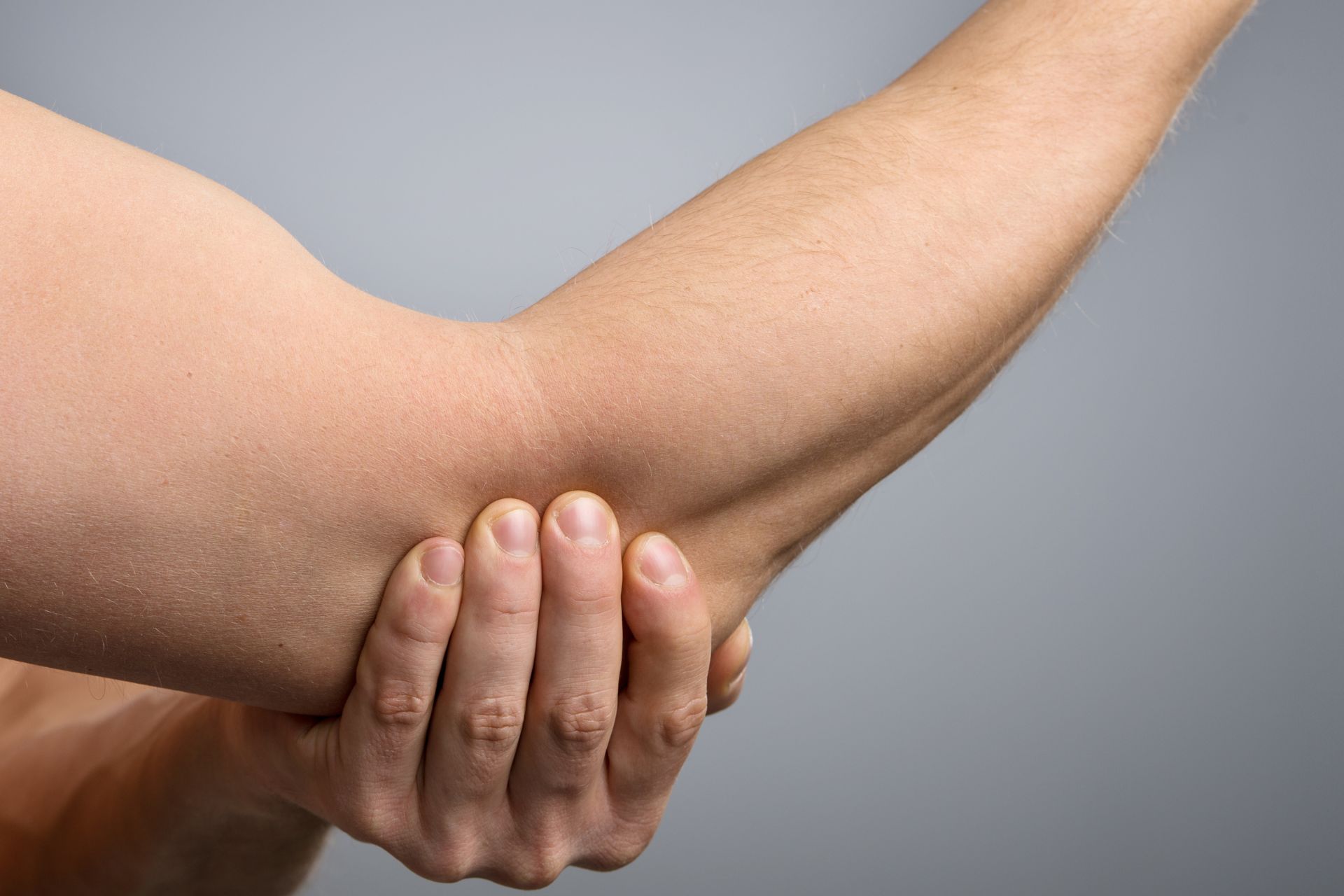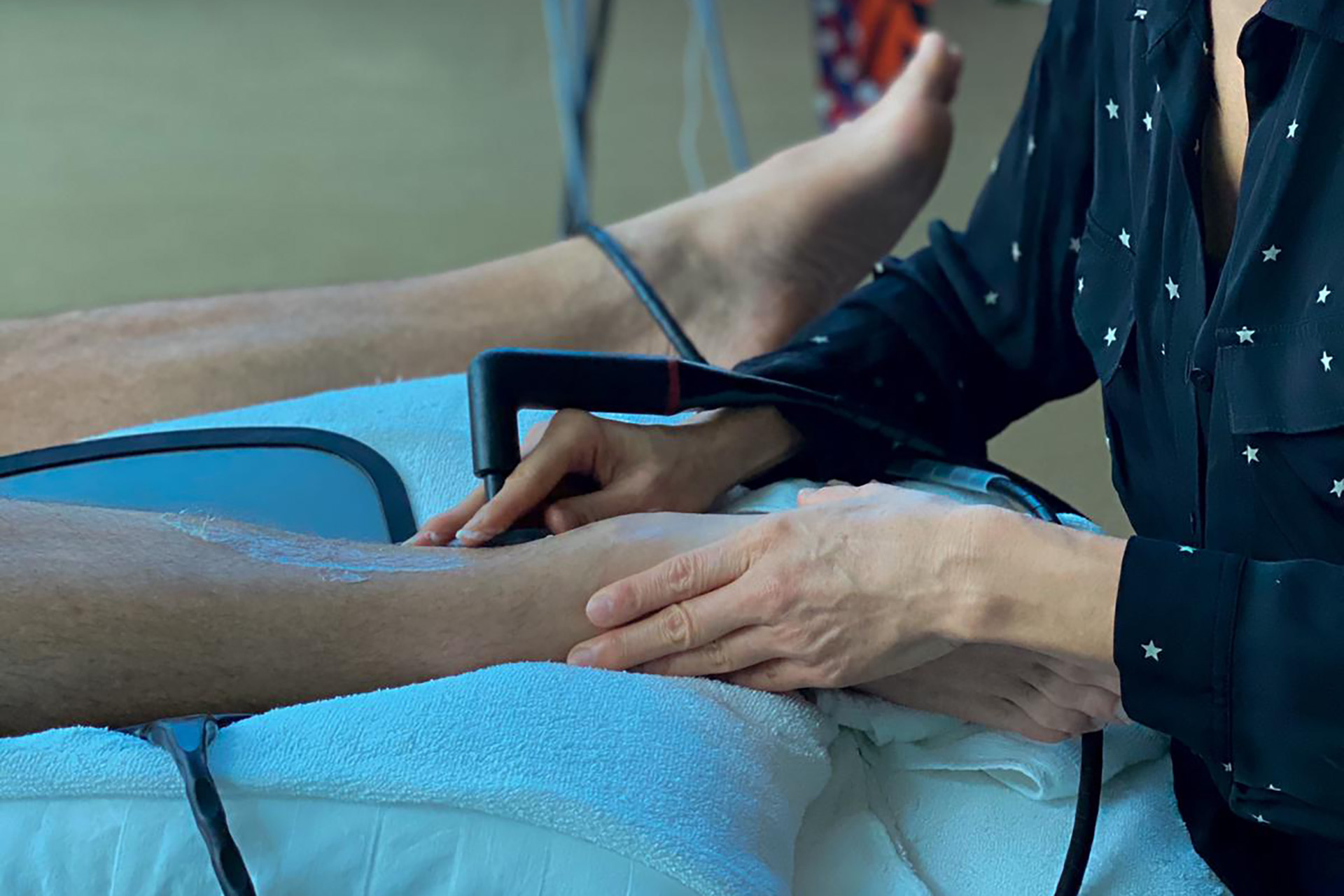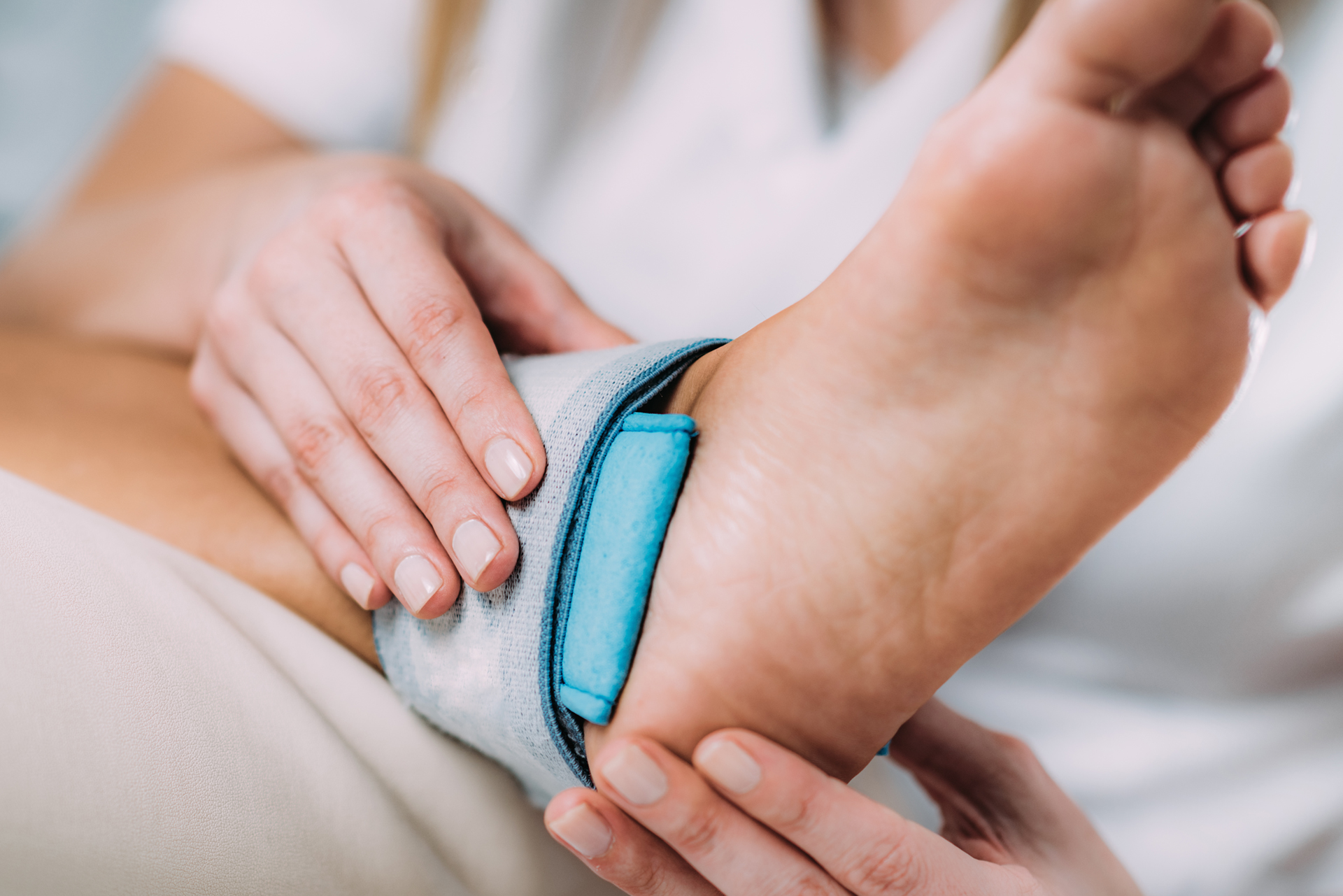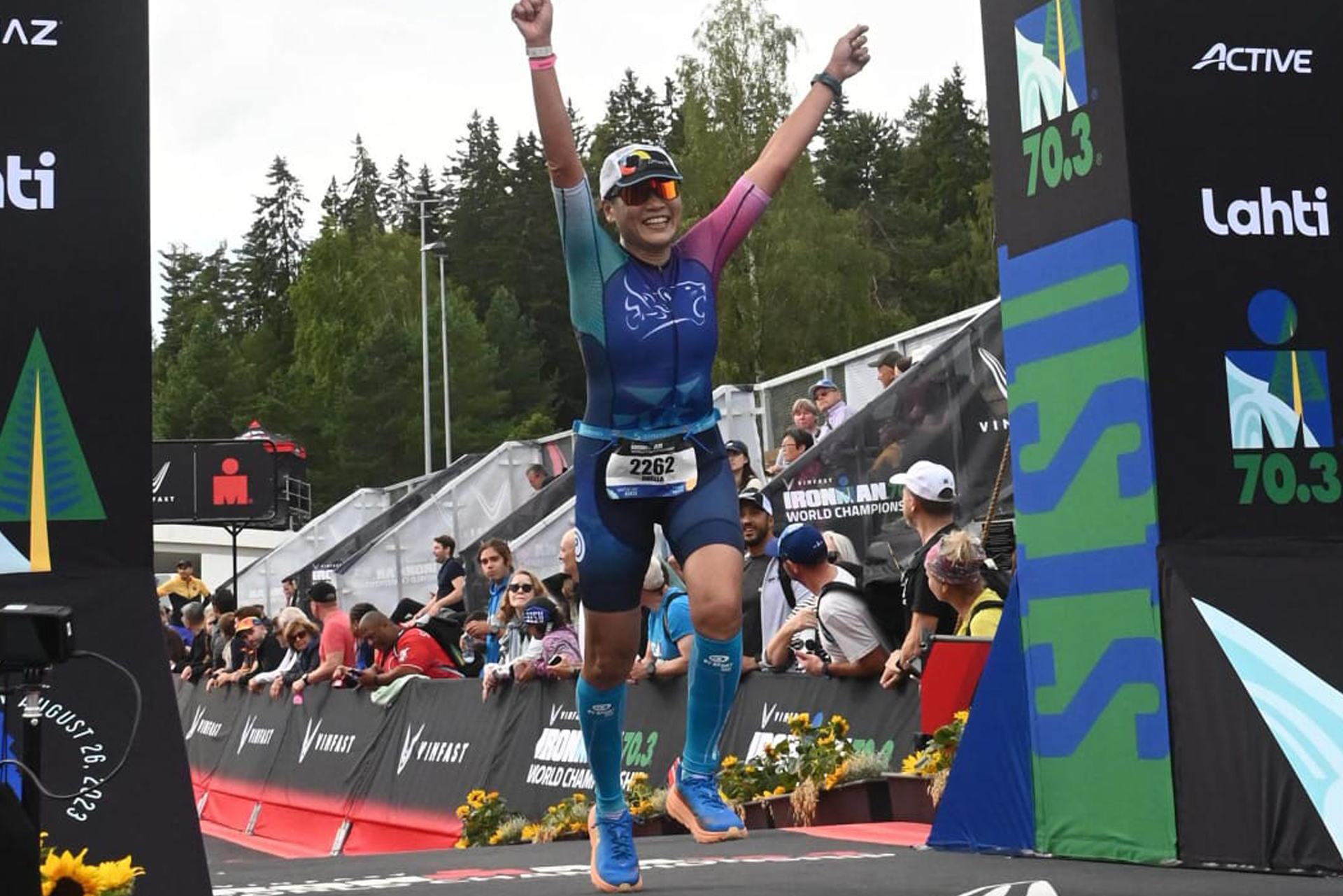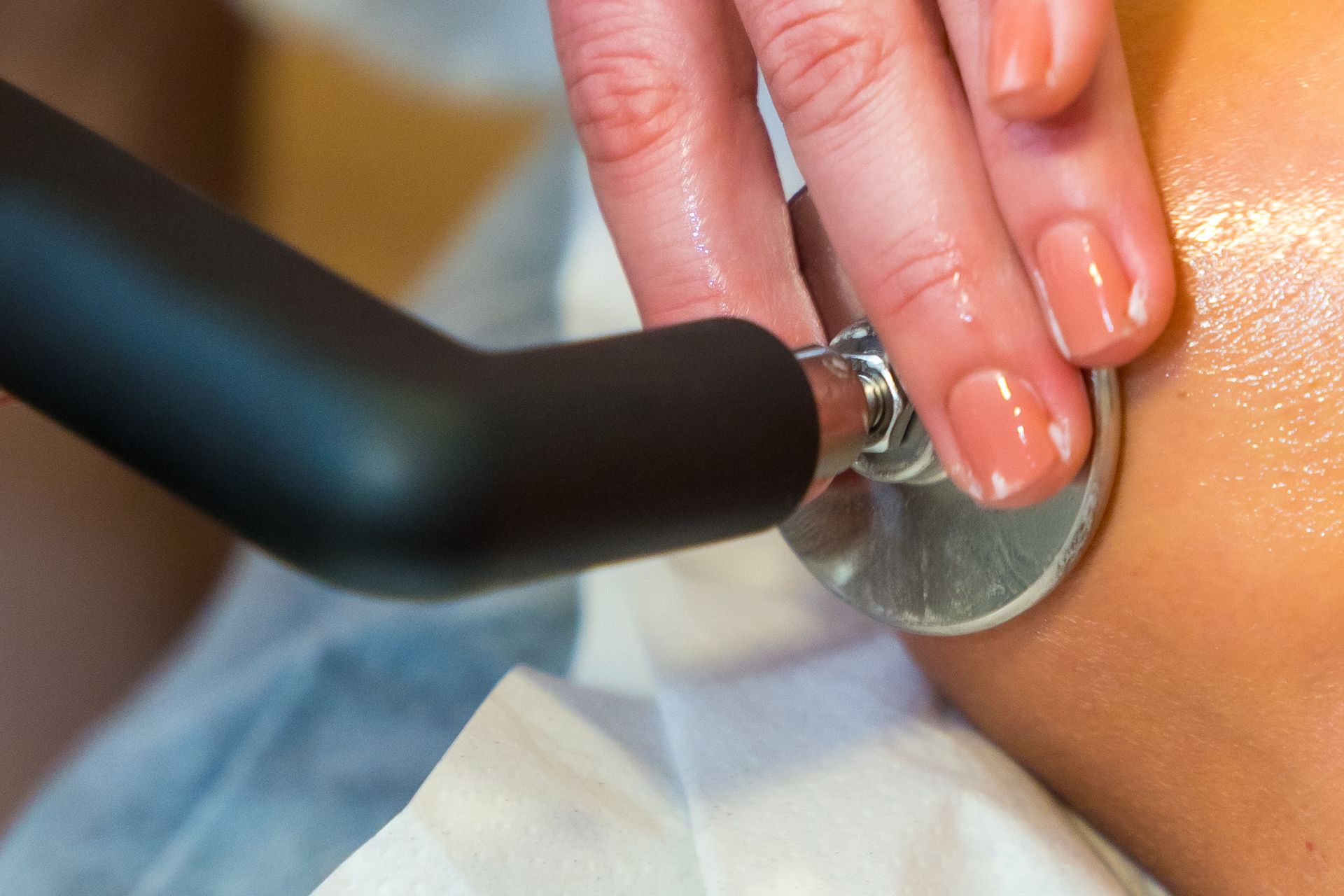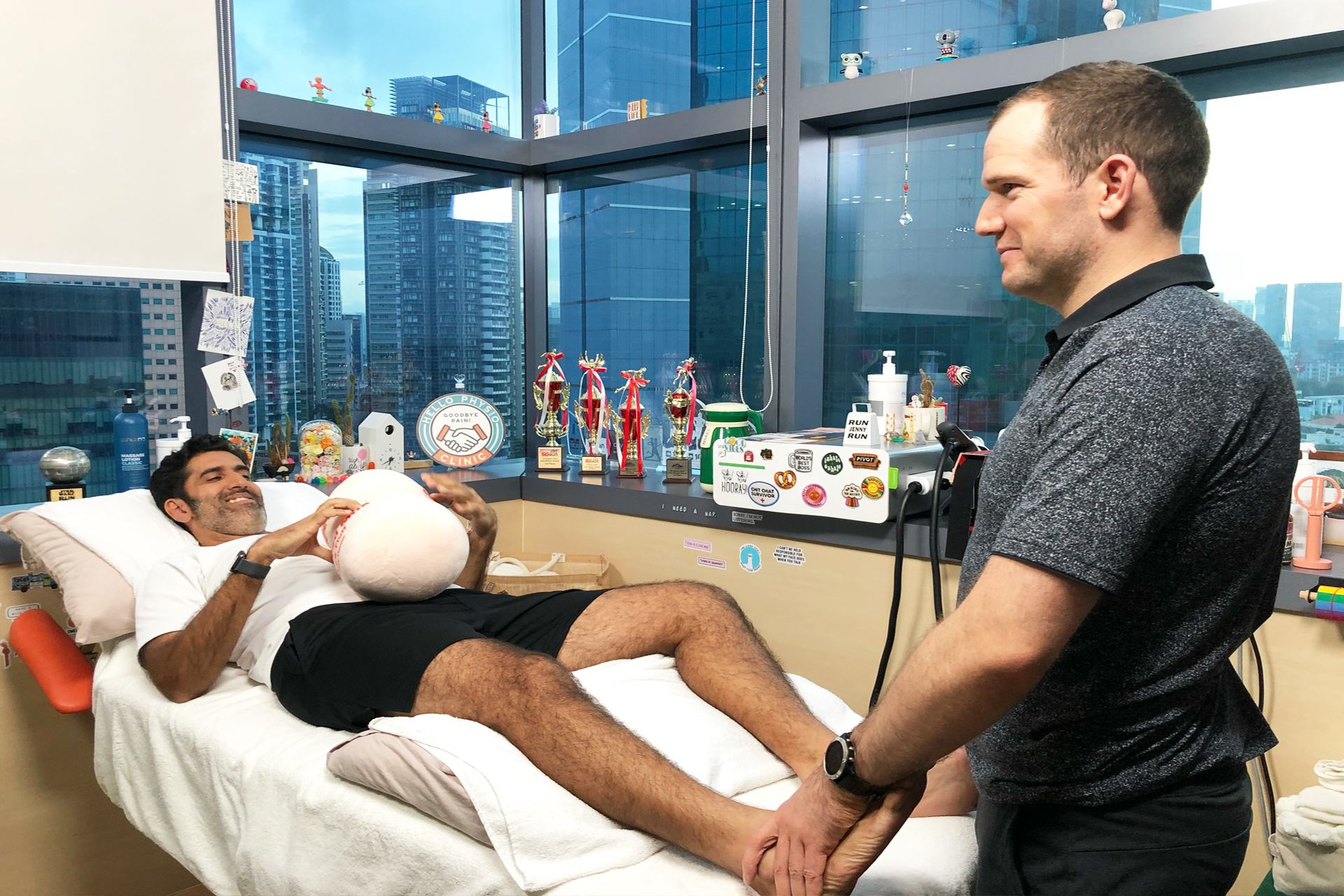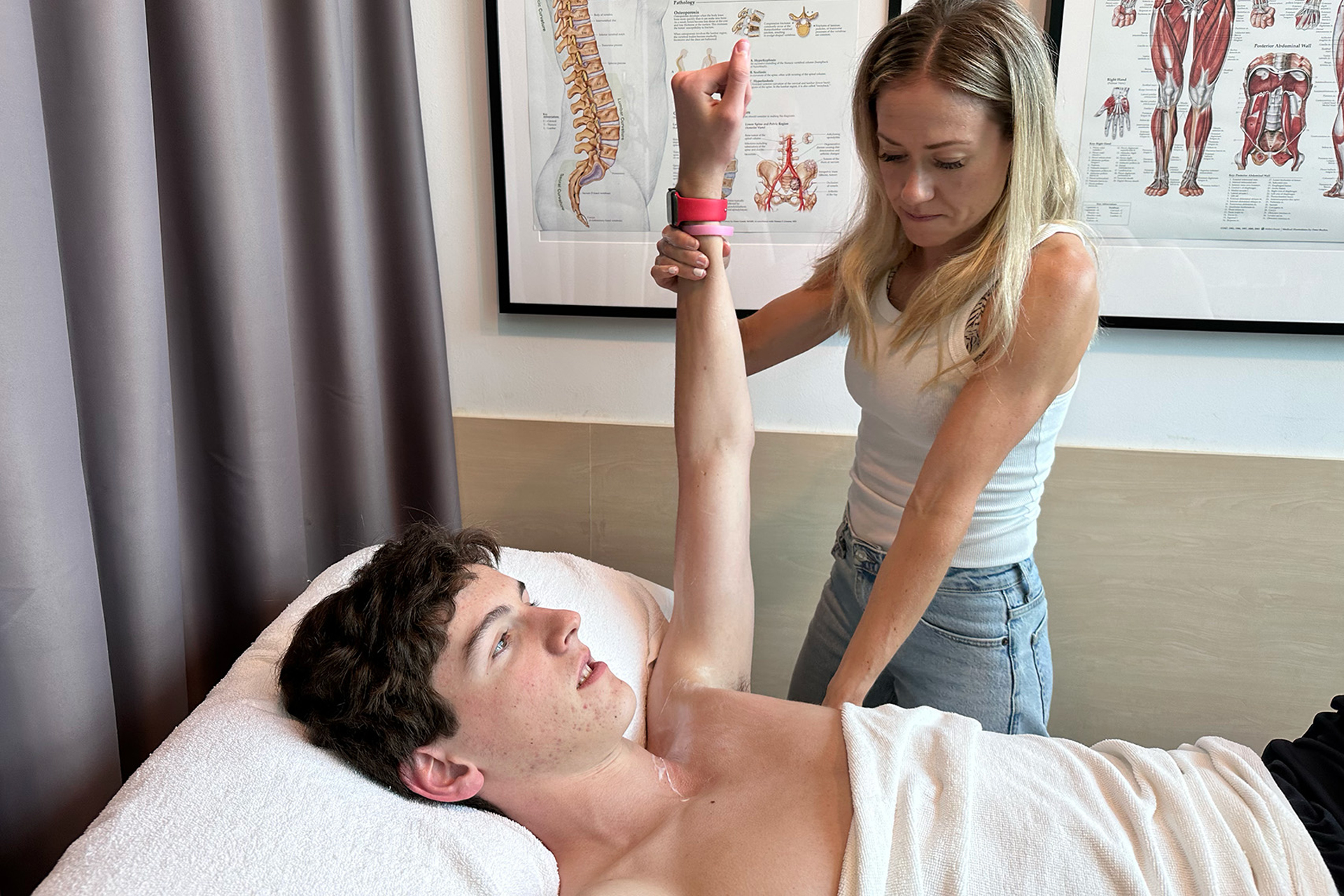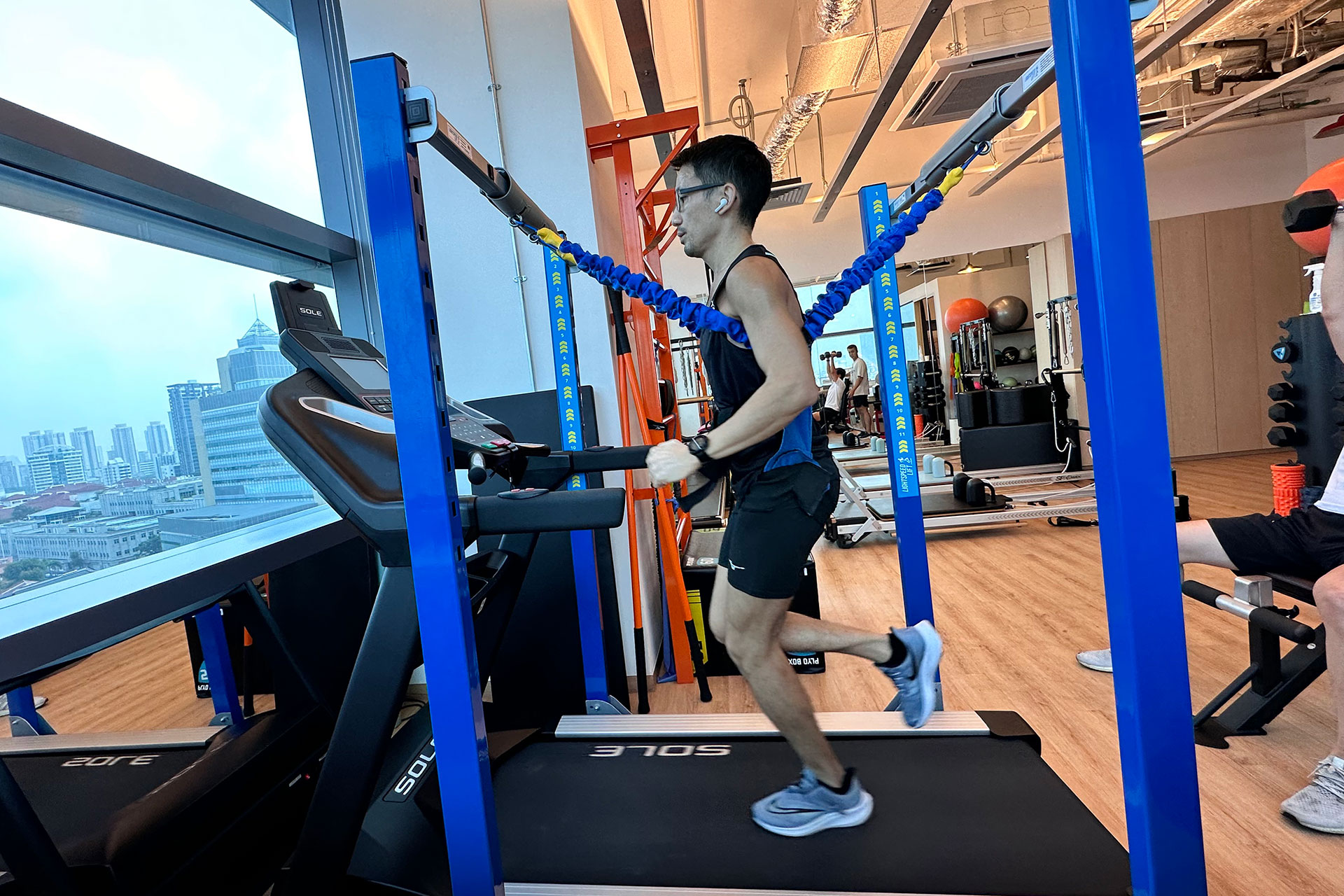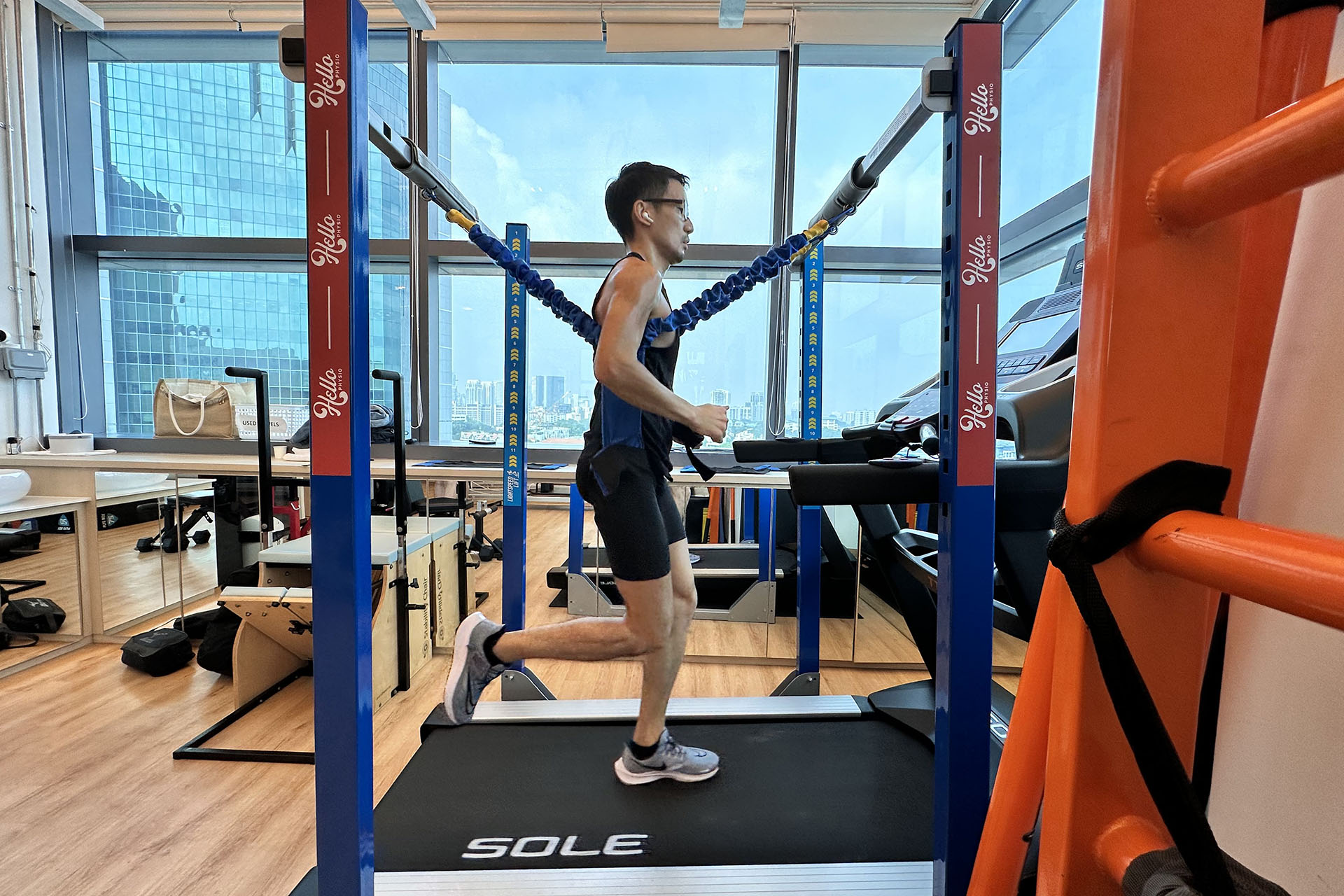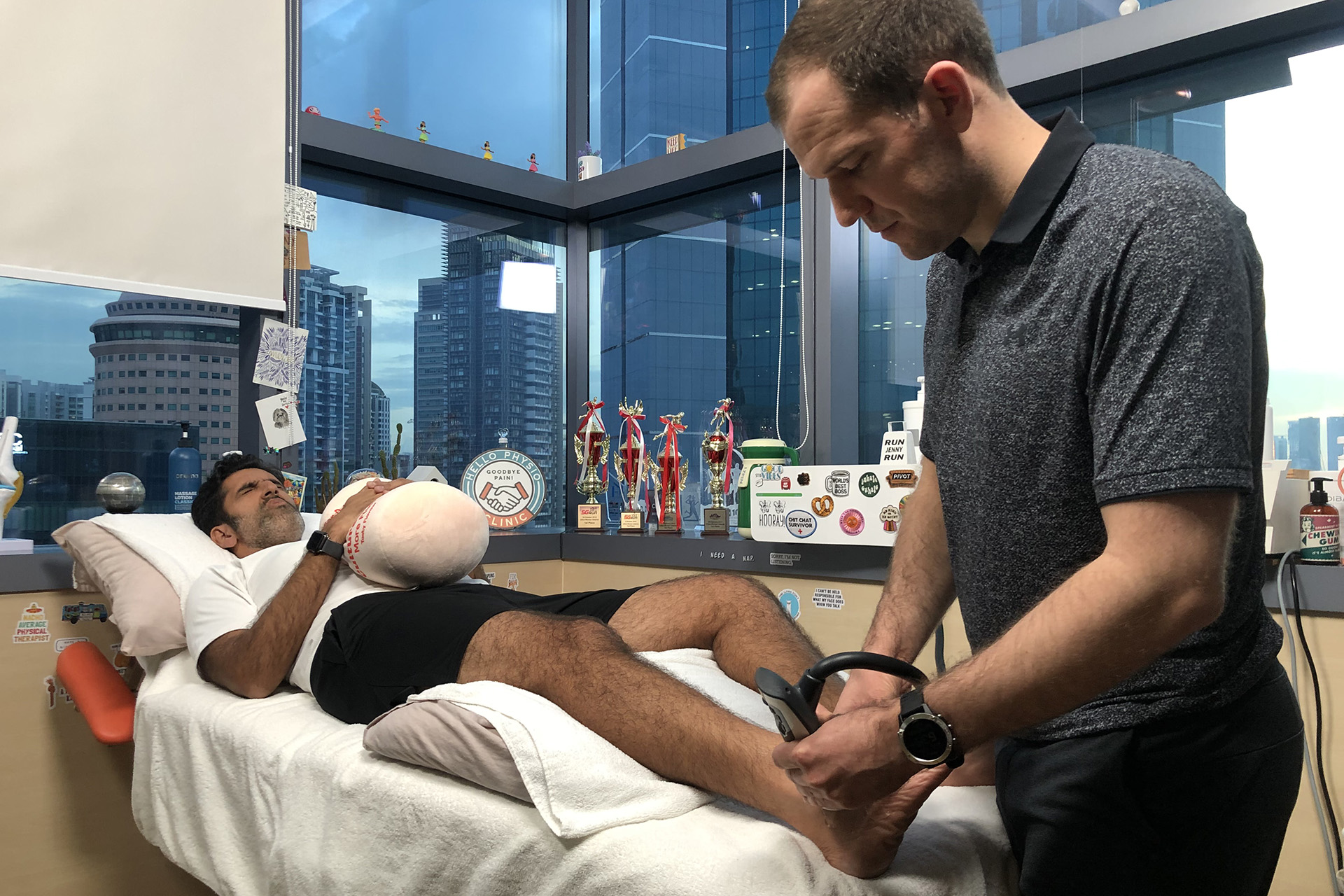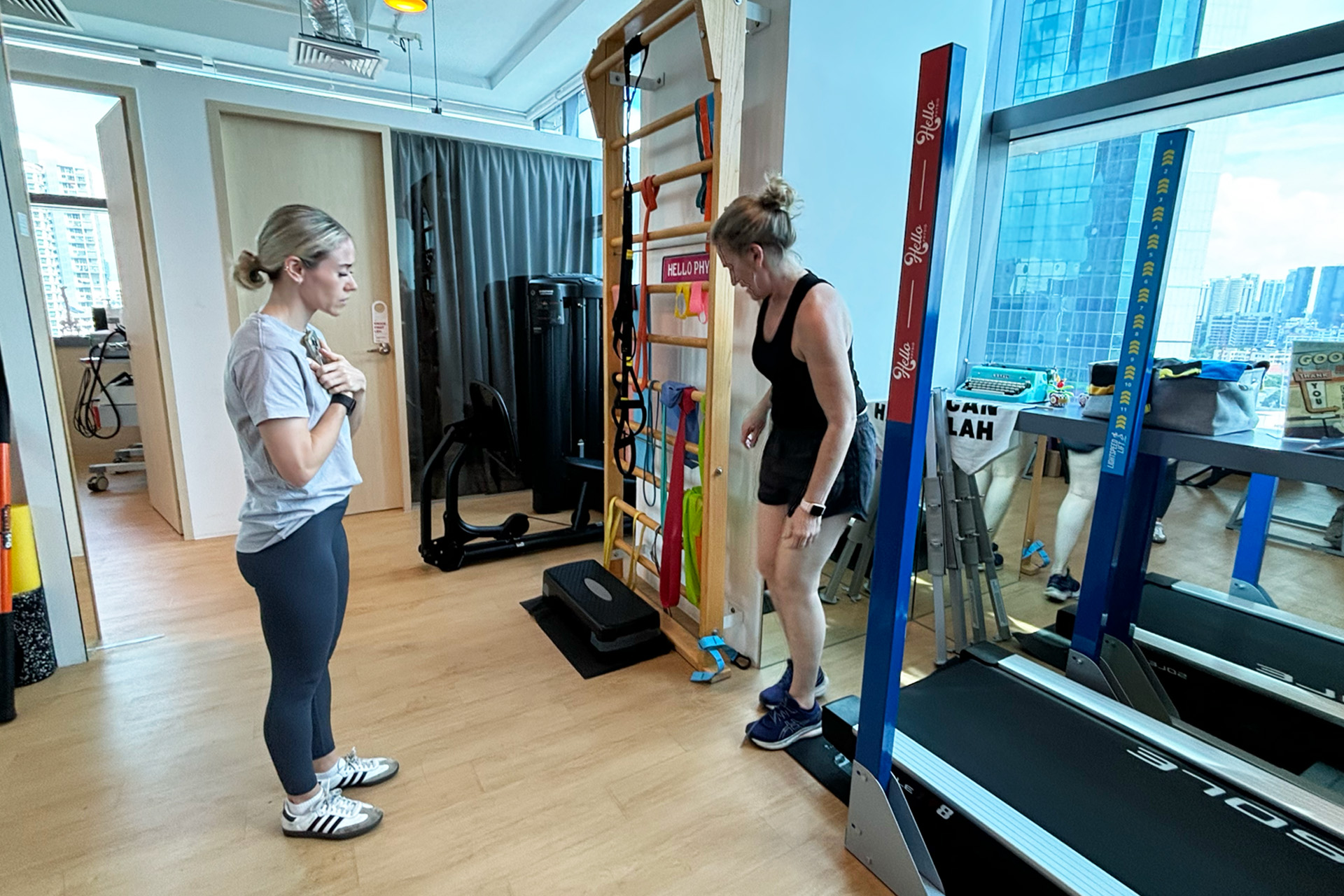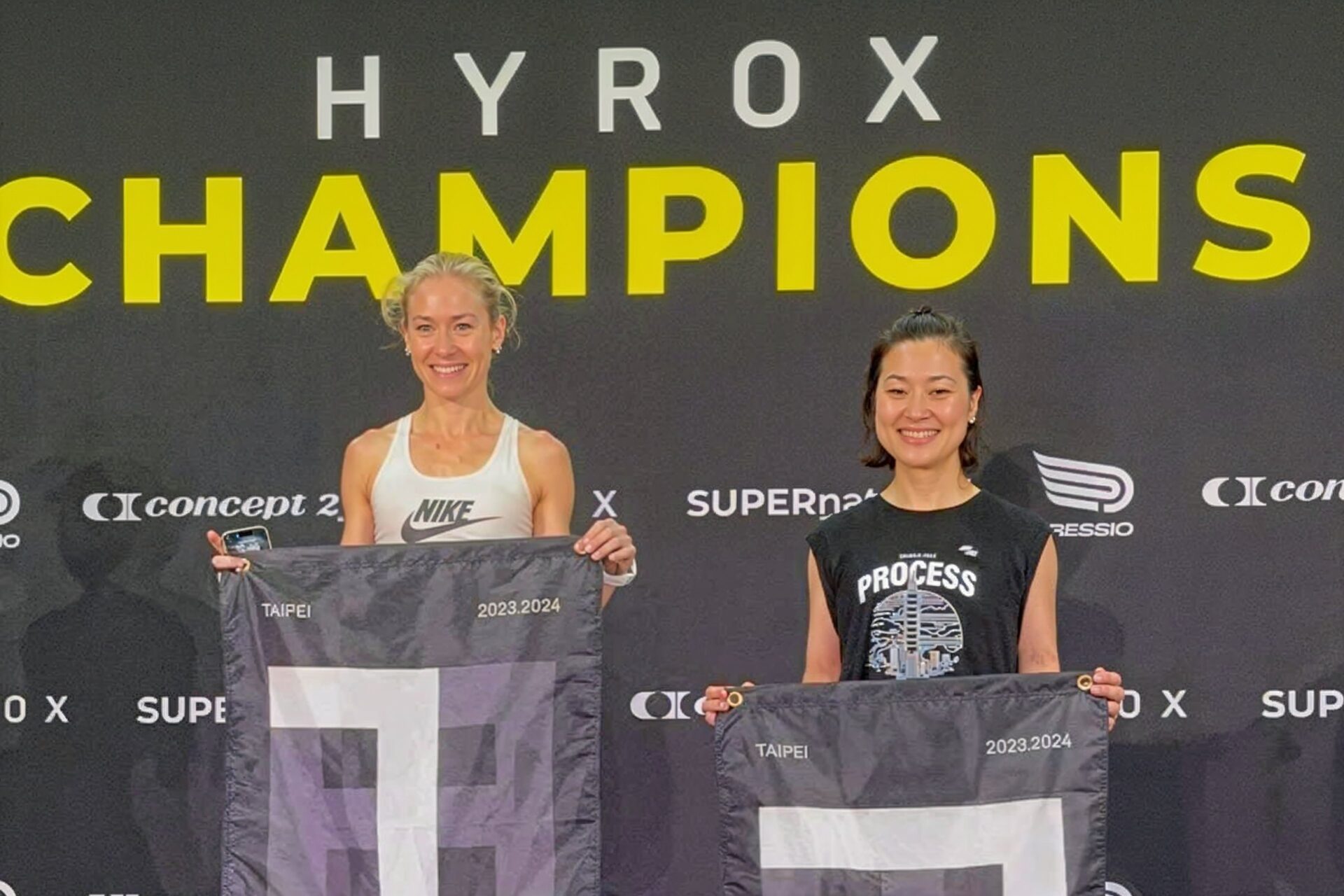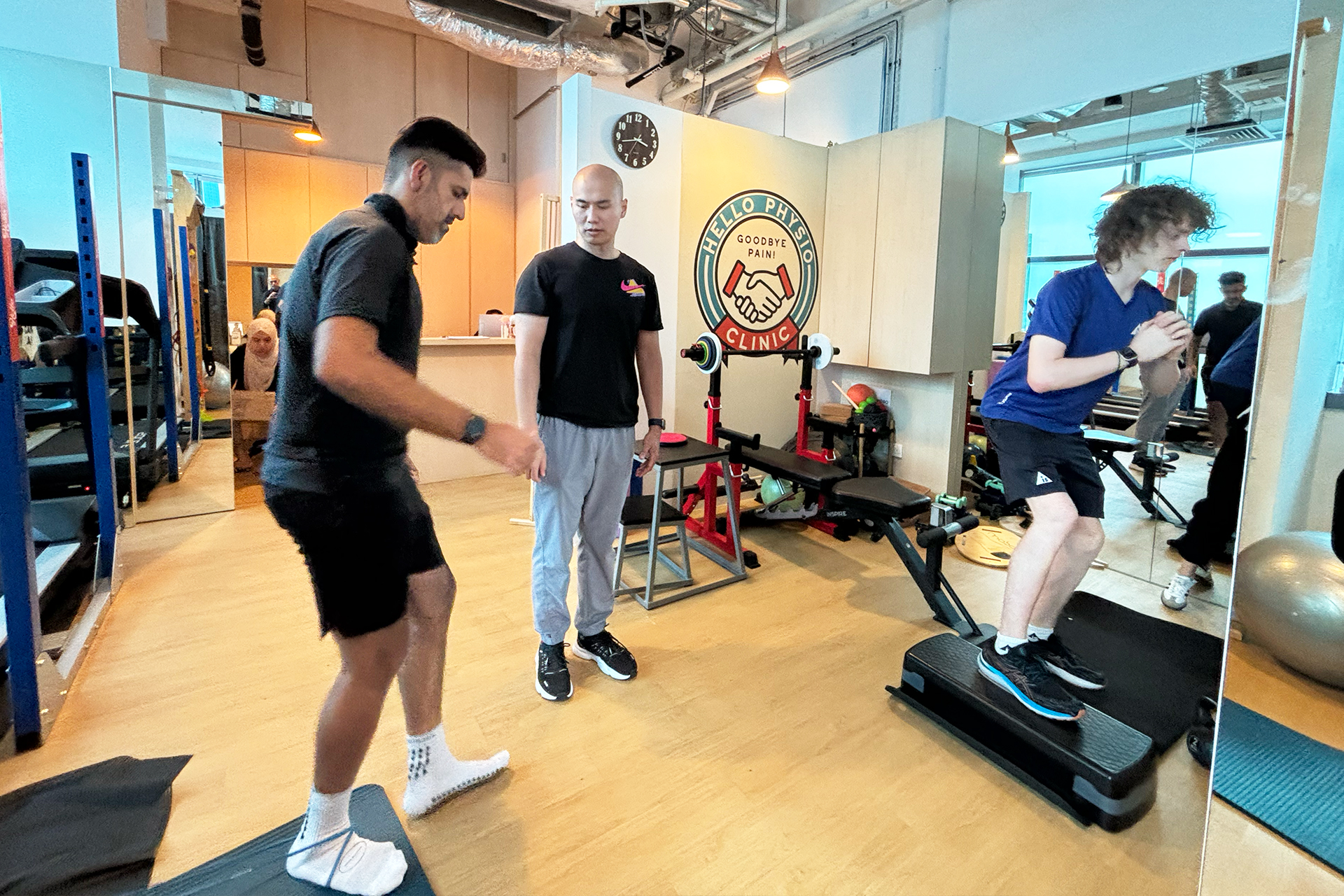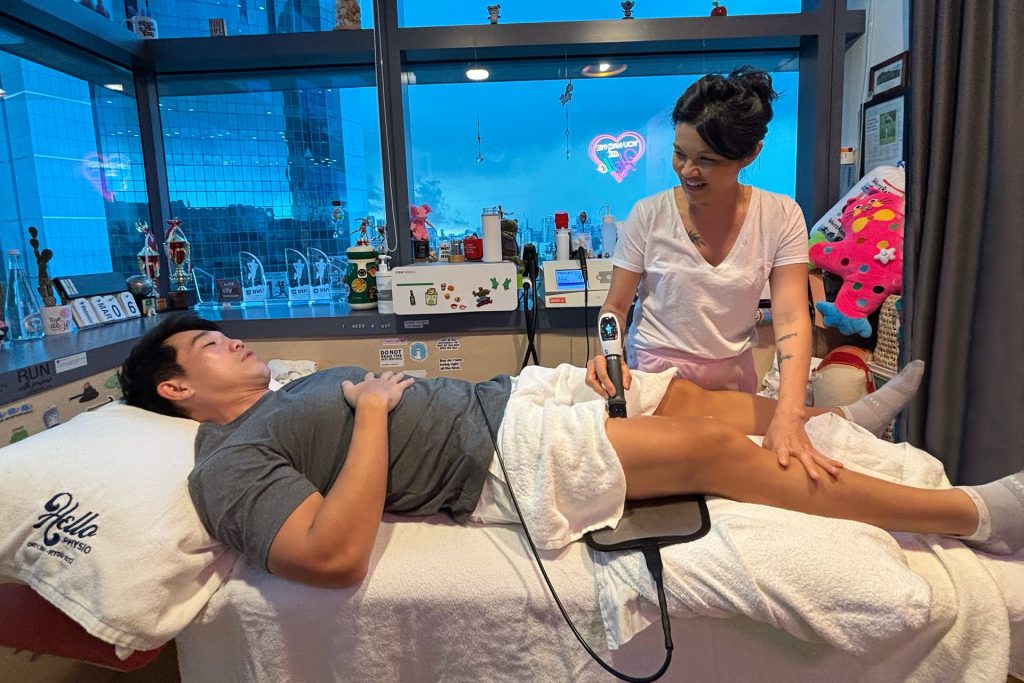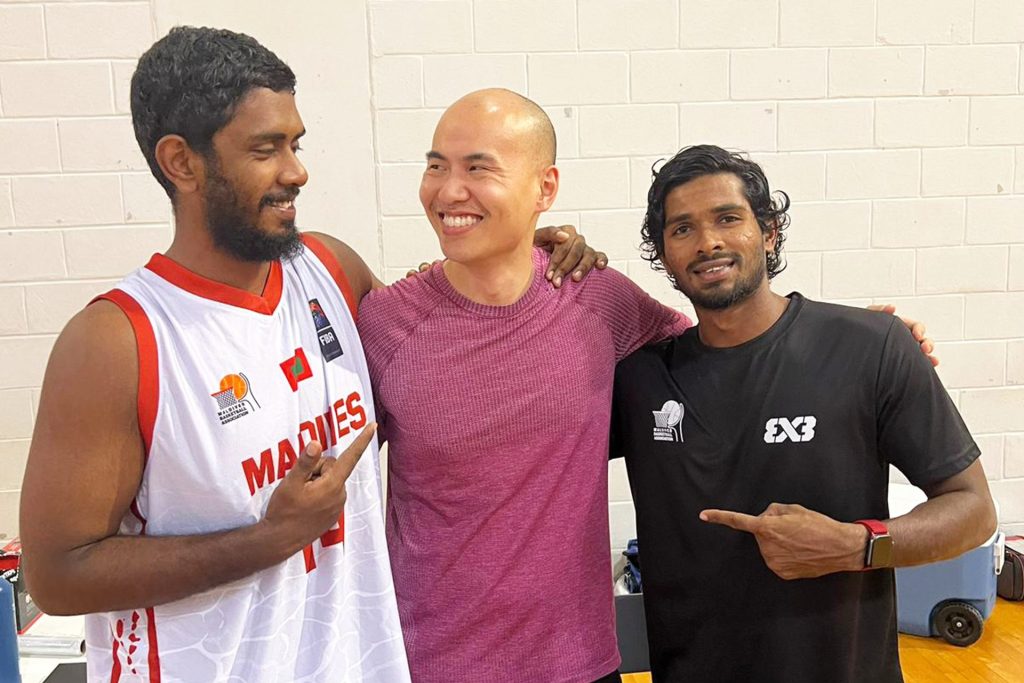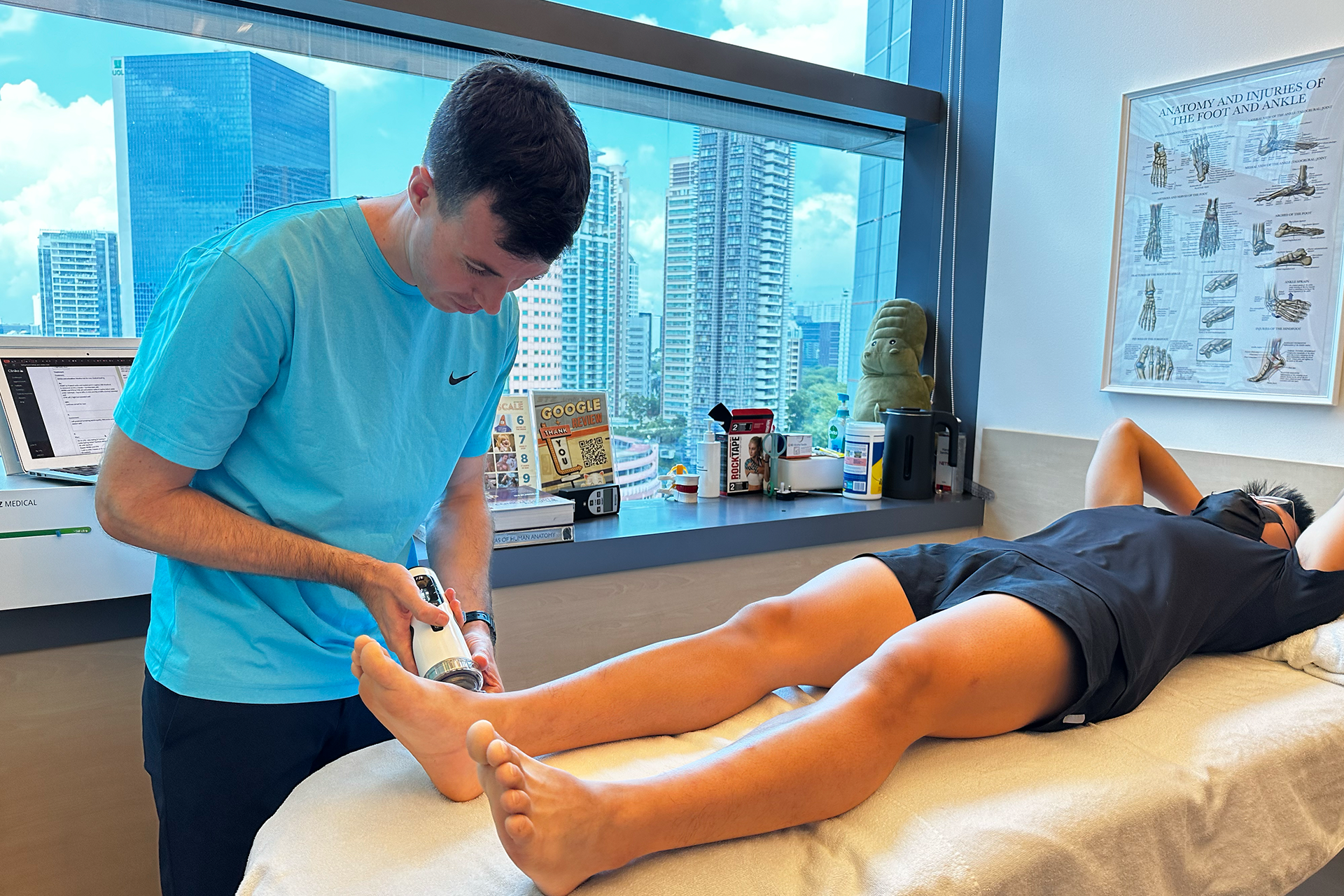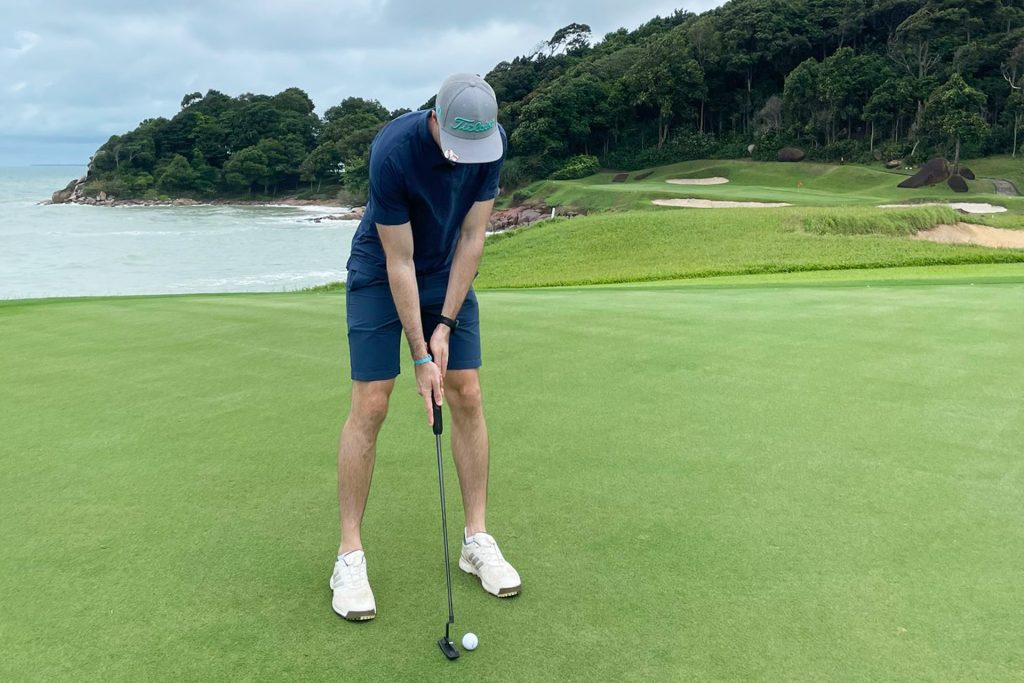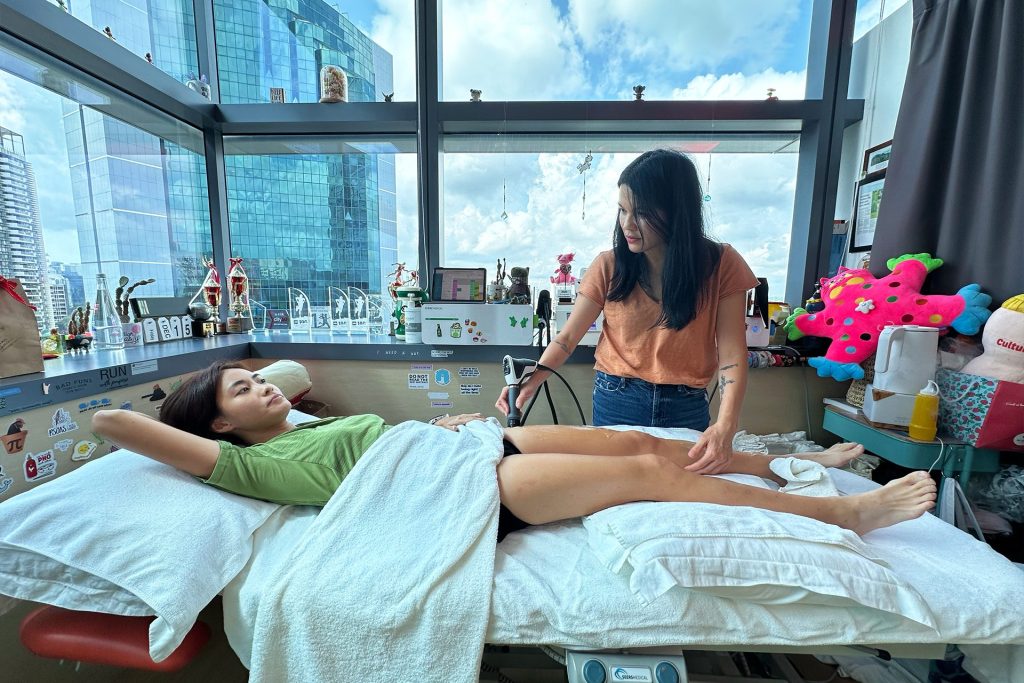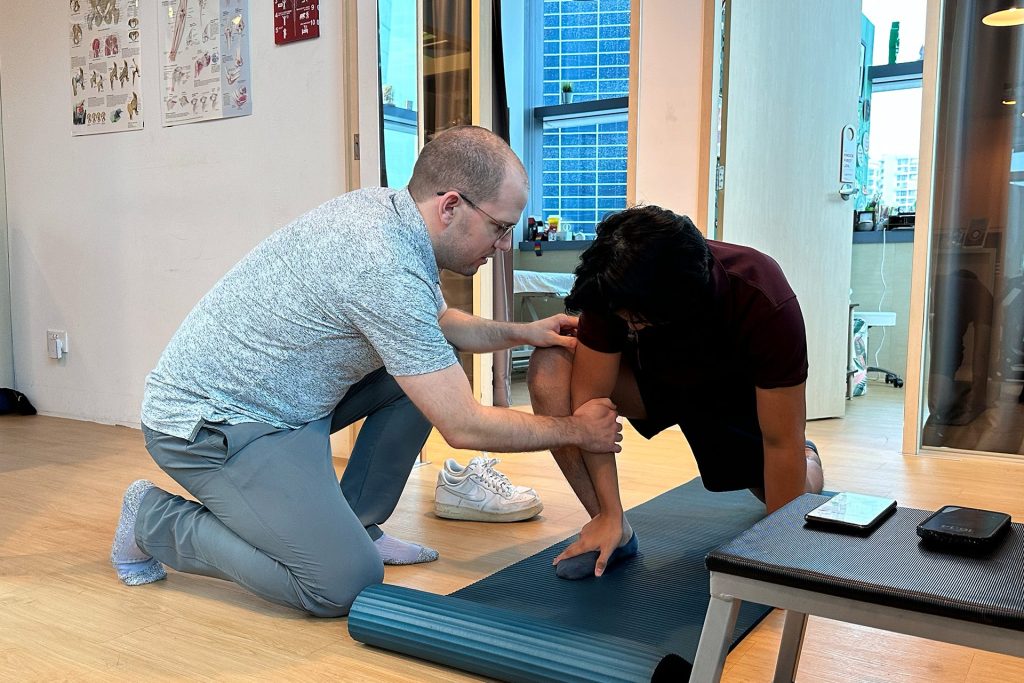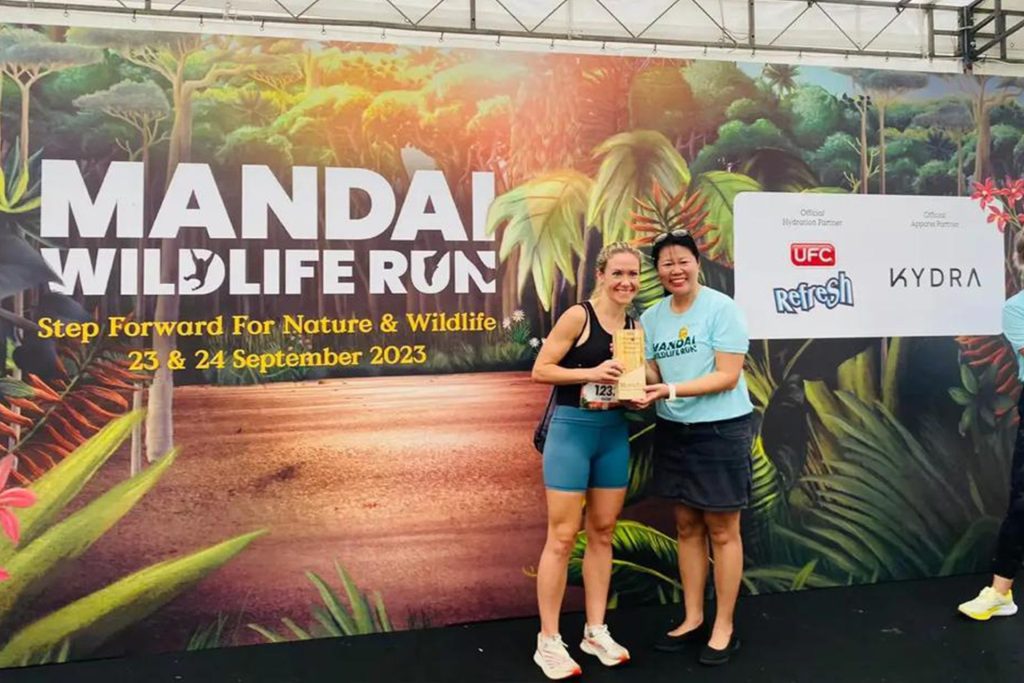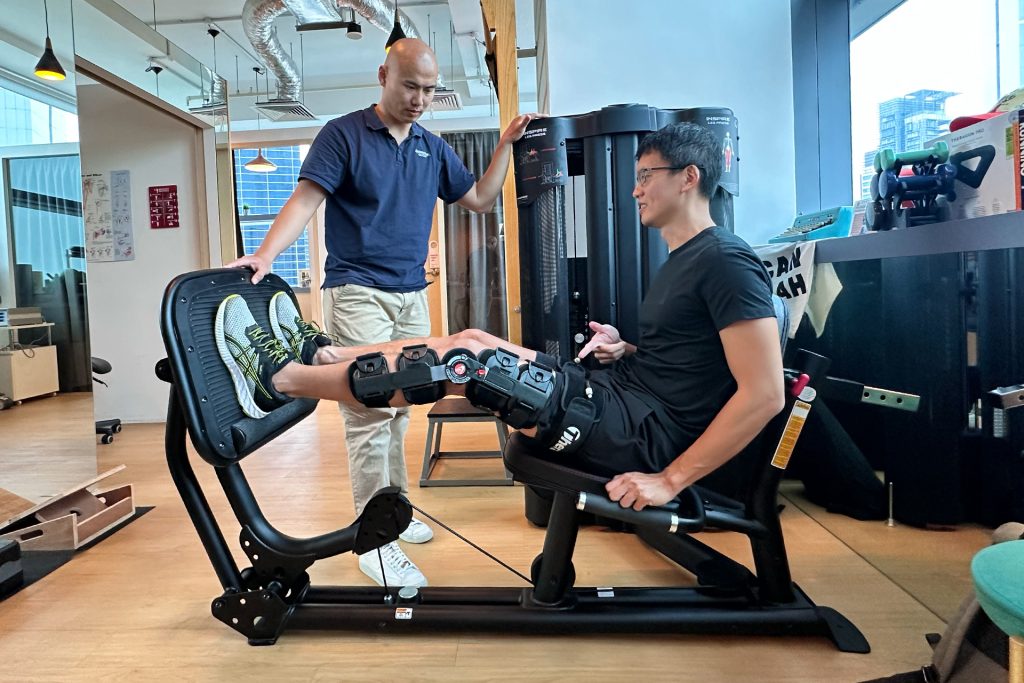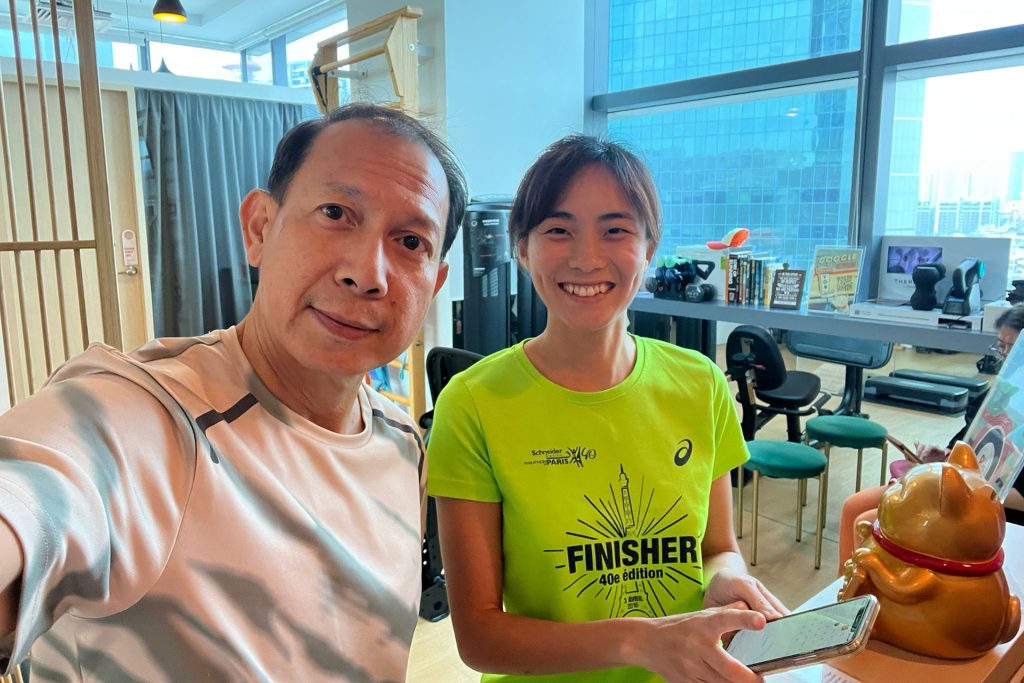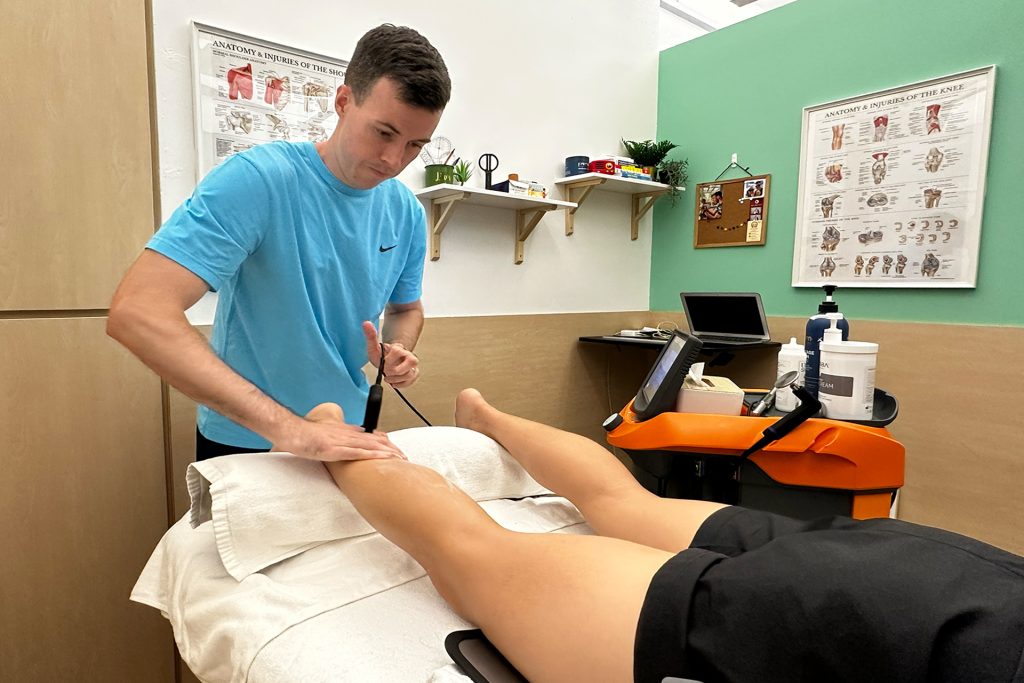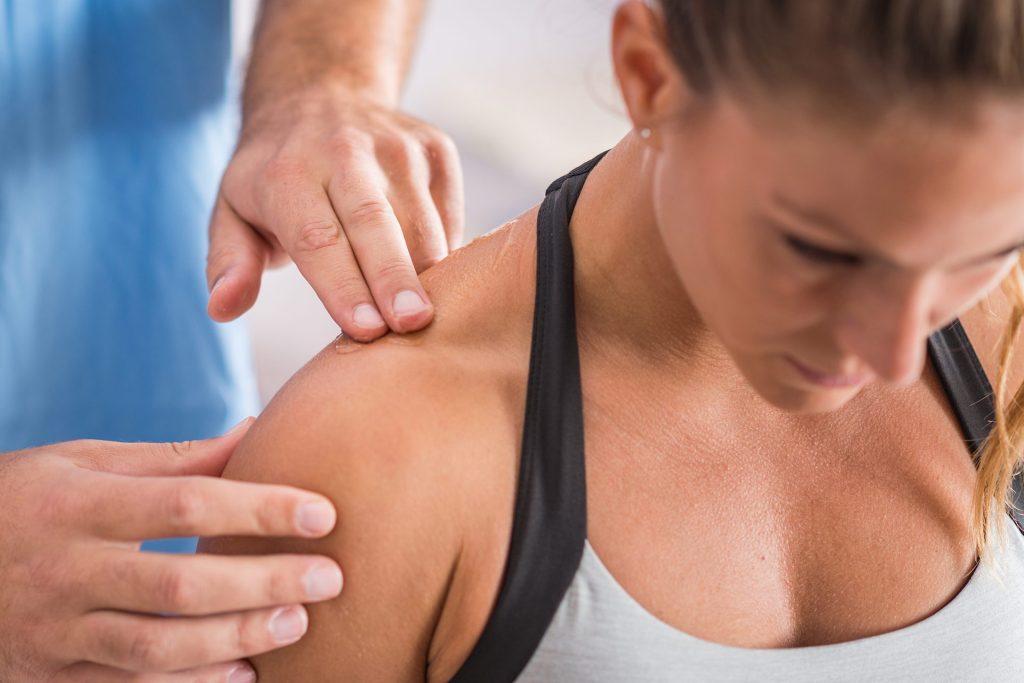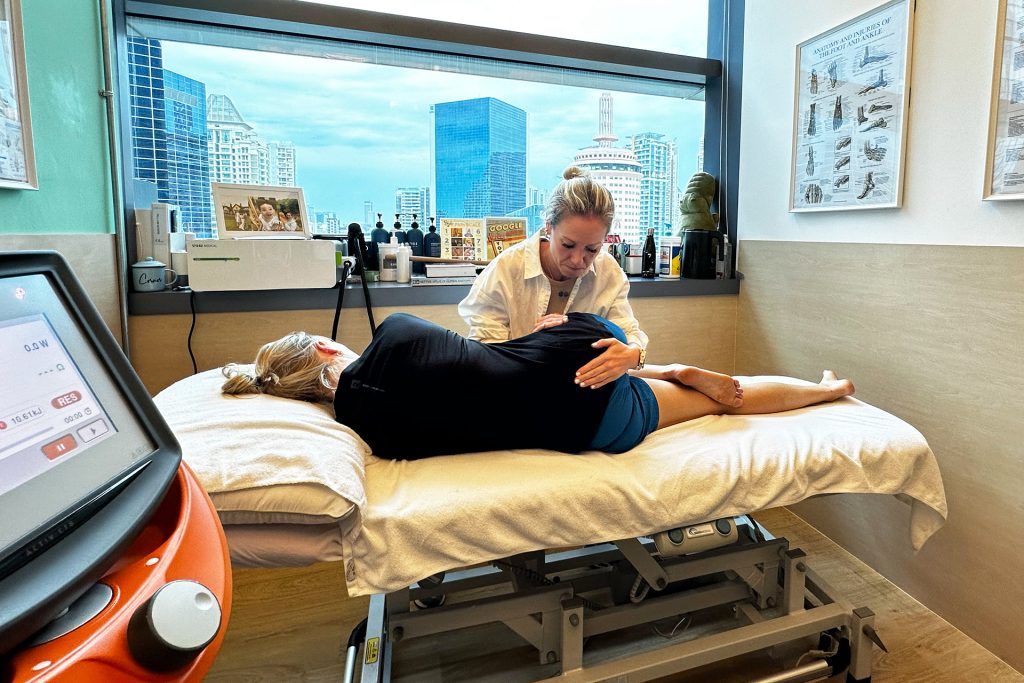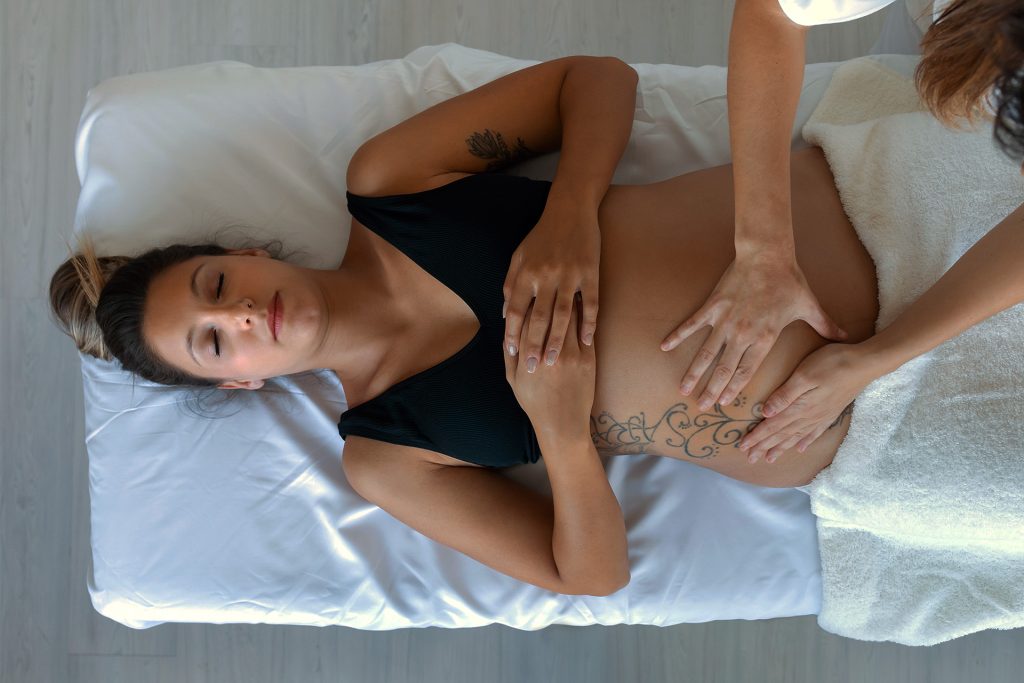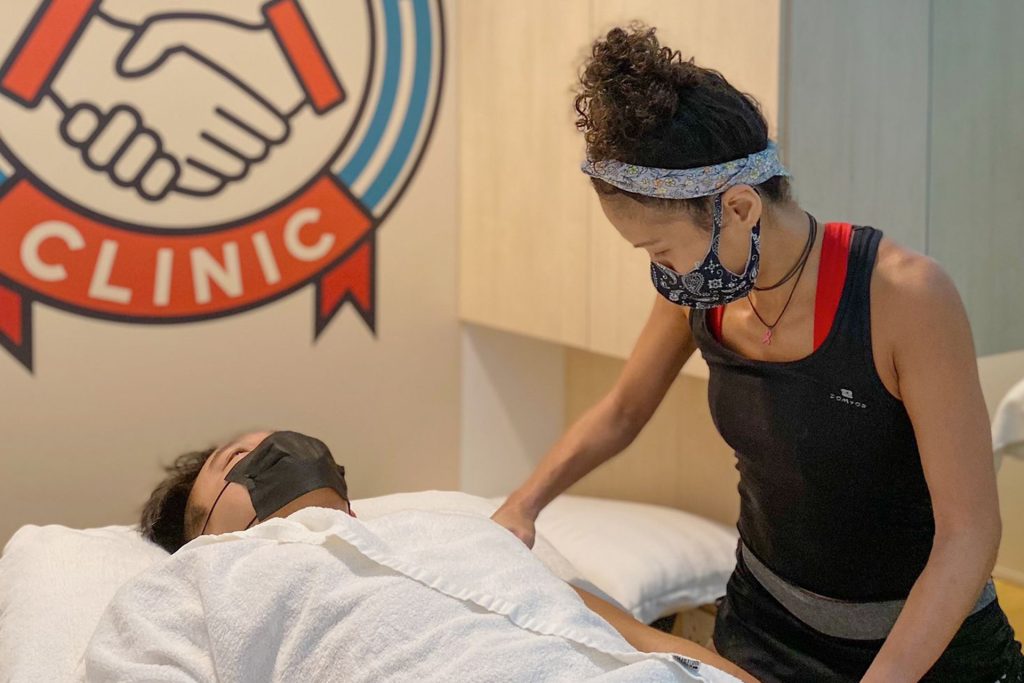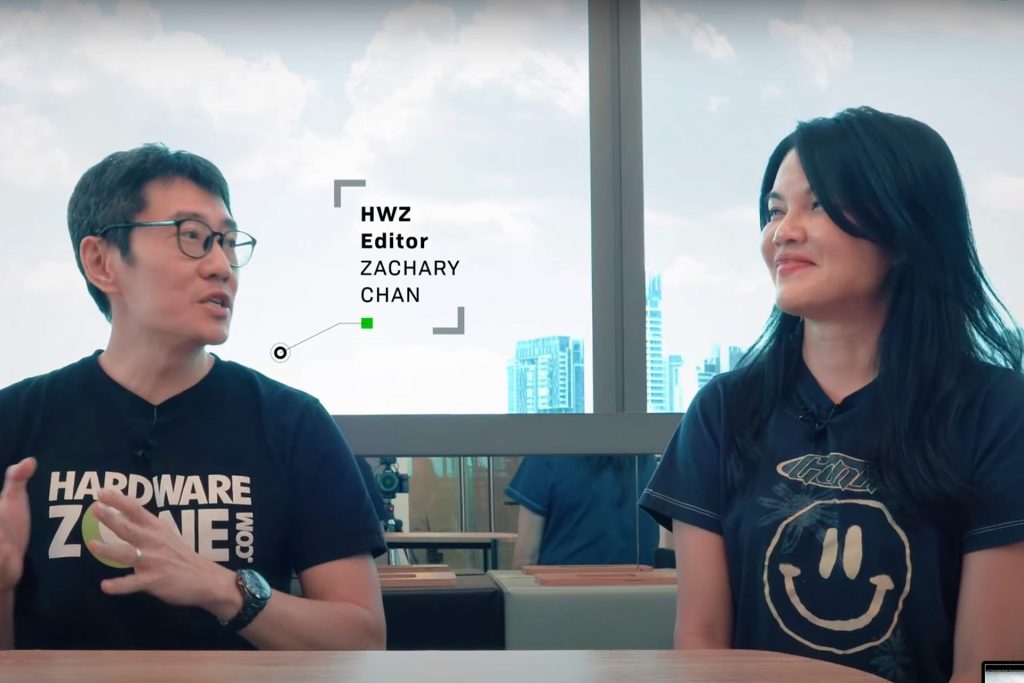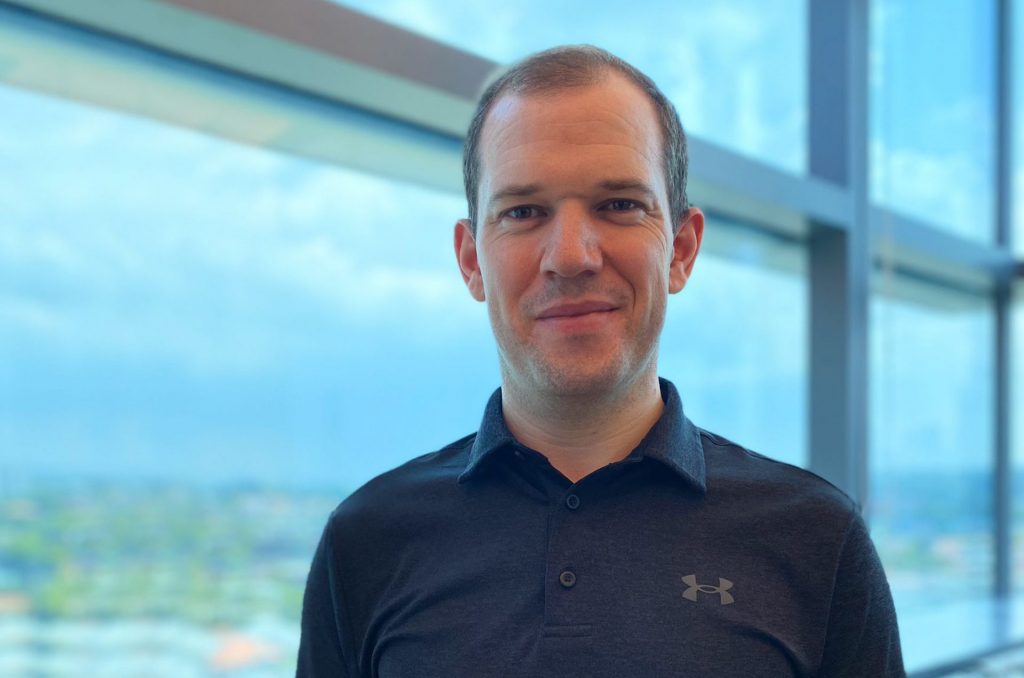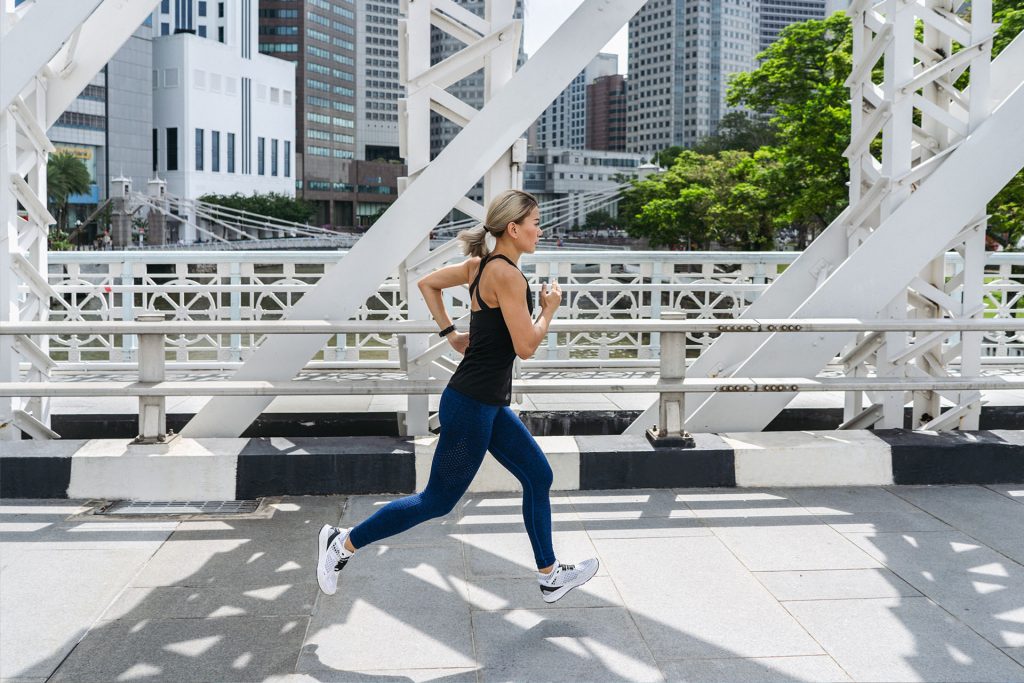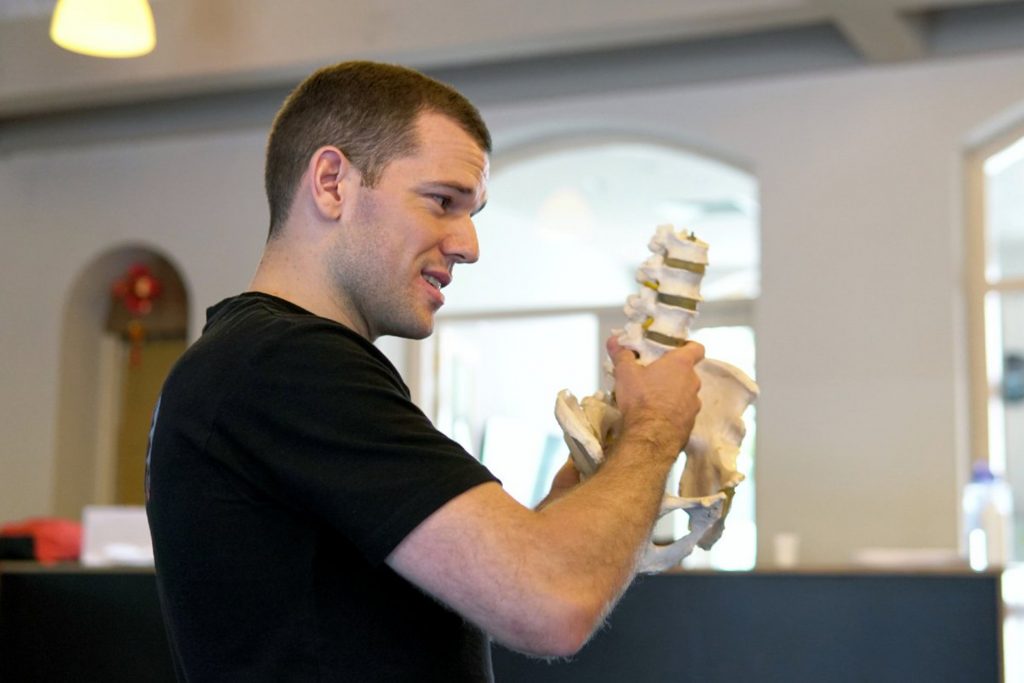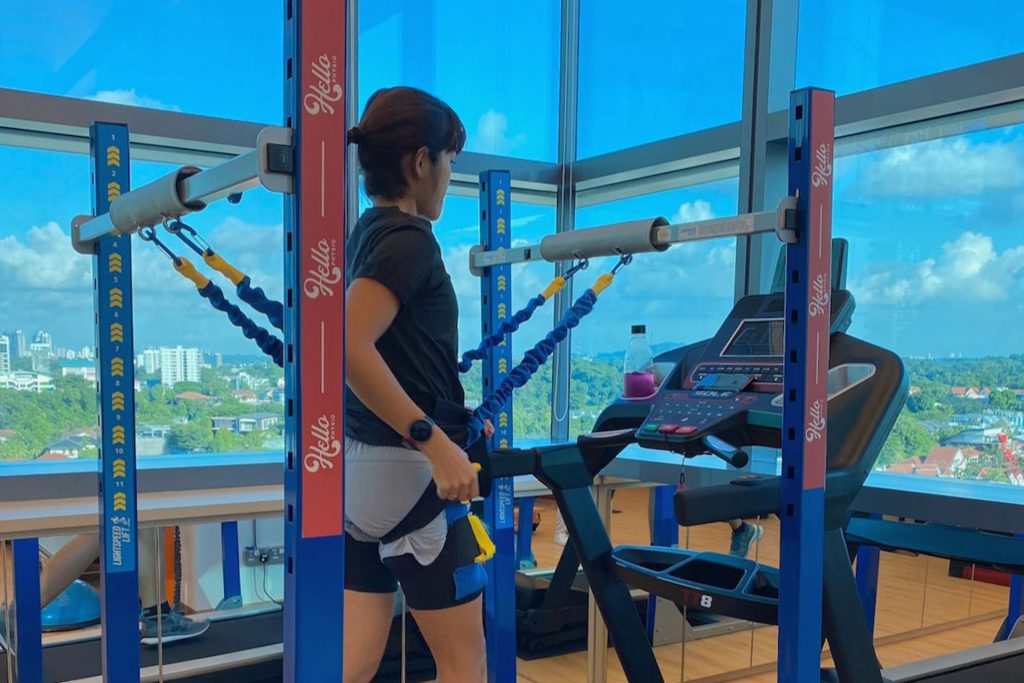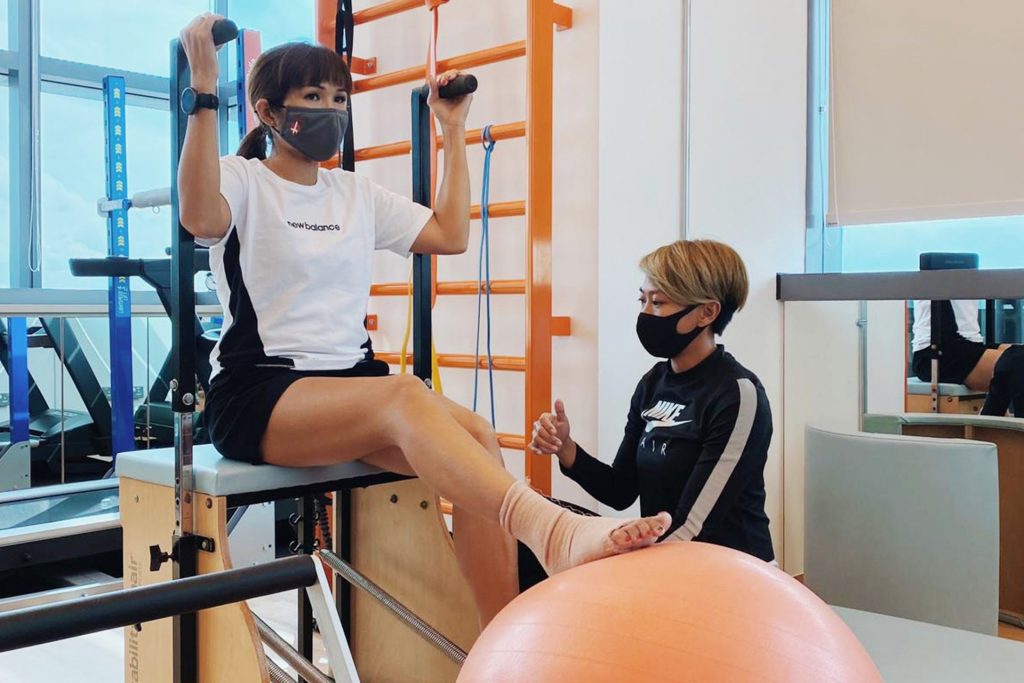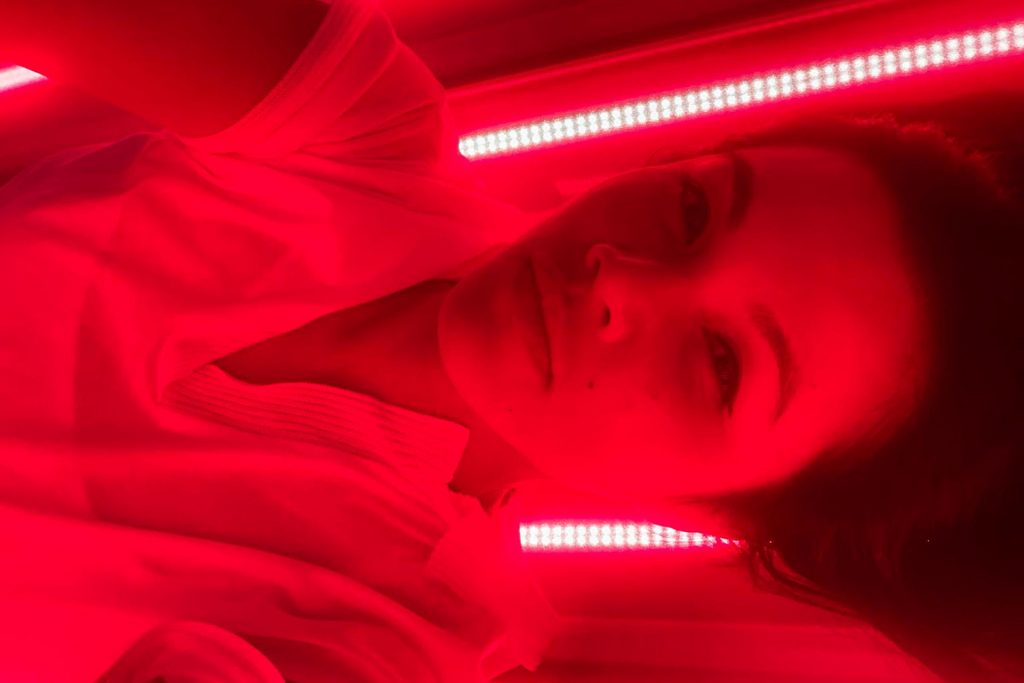There’s a collective heartbeat that every runner shares, a rhythm that unites us all. But what happens when that rhythm is interrupted by the abrupt sting of a Grade 2 ankle sprain, the biting pang of a stress fracture or the harrowing pain of an ACL tear?
Sprains, strains or contusions are the most common acute sports injuries that can affect your muscles and ligaments. Stress fractures, though subtle, whisper the urgent need for rest. Each moment of weight-bearing respite, each second spent alleviating pressure, is a stride towards healing. And then there’s the ACL tear — an unwanted pause when training for a marathon that requires immediate medical consultation.
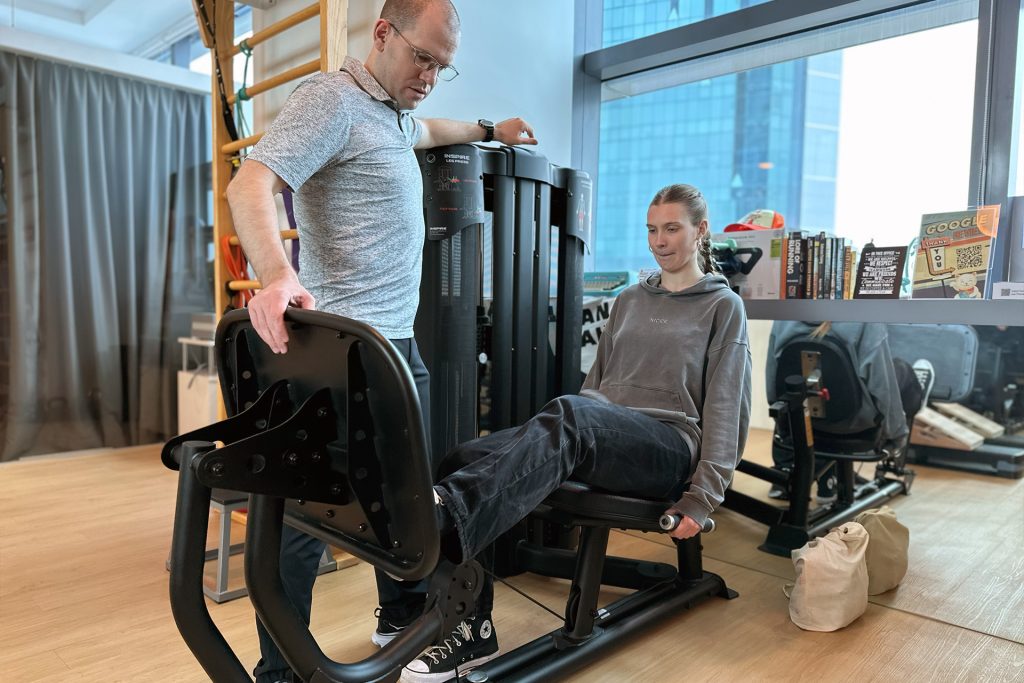
Whether it’s the twist of an ankle, the piercing pain through the bone or the dreaded pop in the knee, those initial moments are the thin line separating a swift recovery and prolonged injury. But with the deluge of online advice, have you ever wondered what sports physiotherapists (and athletes) recommend as the top protocols?
New LOVE & PEACE Protocols to Aid in Return to Sport
Where the rhythm of running shoes against the track is music, an injury can momentarily mute the melody. For years, RICE was the immediate remedy following that abrupt silence.
Today, we’re not just singing to the RICE or even PRICE tunes but echoing the harmonious notes of PEACE & LOVE. It’s a concept, a philosophy that goes beyond the immediacy of acute pain relief, exploring the subacute and chronic stages of injury.
Research has expanded its horizons. It’s no longer just about the ice pack’s touch or the elevation of a sprained ankle. It’s about optimal loading of motion and rest, activity and pause, echoing the balance that defines the sport of running.
PEACE & LOVE is a new protocol from pain relief to holistic healing, immediate treatment to comprehensive recovery, patient education and mental wellness.
RETURN TO SPORTS TIP 1
“People often fall victim to ‘the terrible toos’—running too frequently, too quickly, and for too long, without adequate rest,” notes senior physiotherapist Liam McGinley.
PEACE Immediate Home Remedy
PEACE can become your go-to home remedy, turning the immediate aftermath of an acute sports injury into a time of comfort and relief.
- Protect. Limit your movement immediately after an injury to minimize bleeding, typically within the first 1 to 3 days. Unload pressure to prevent tissue from swelling or further aggravating the injury. As prolonged rest can lead to tissue degradation and strength loss, it is essential to minimize the rest period. The pain you experience should be directly proportional to the amount of rest to protect your injury.
- Elevate. Position the affected limb high above the heart. This will reduce fluid build-up and encourage microcirculation. Raising your injured limb above your heart aids in the flow between blood and lymphatic systems that transport essential proteins throughout the body.
- Avoid anti-inflammatory medications. Inflammation is part of the body’s natural healing process to repair damaged tissue. Taking medicines that slow the inflammatory process may affect long-term tissue healing. A new perspective suggests that icing injuries can impair the immune cell response for tissue damage repair.
- Compression. Bandages or tape may be used to reduce swelling.
- Education. We place patient education at the forefront of our treatment philosophy. When patients are better informed about their musculoskeletal condition and acute injury treatment plan, overtreatment is less likely. Healing response also often improves. As part of an active approach towards injury rehabilitation, our physiotherapy team will work with you on the best physiotherapy treatment options for your specific case.
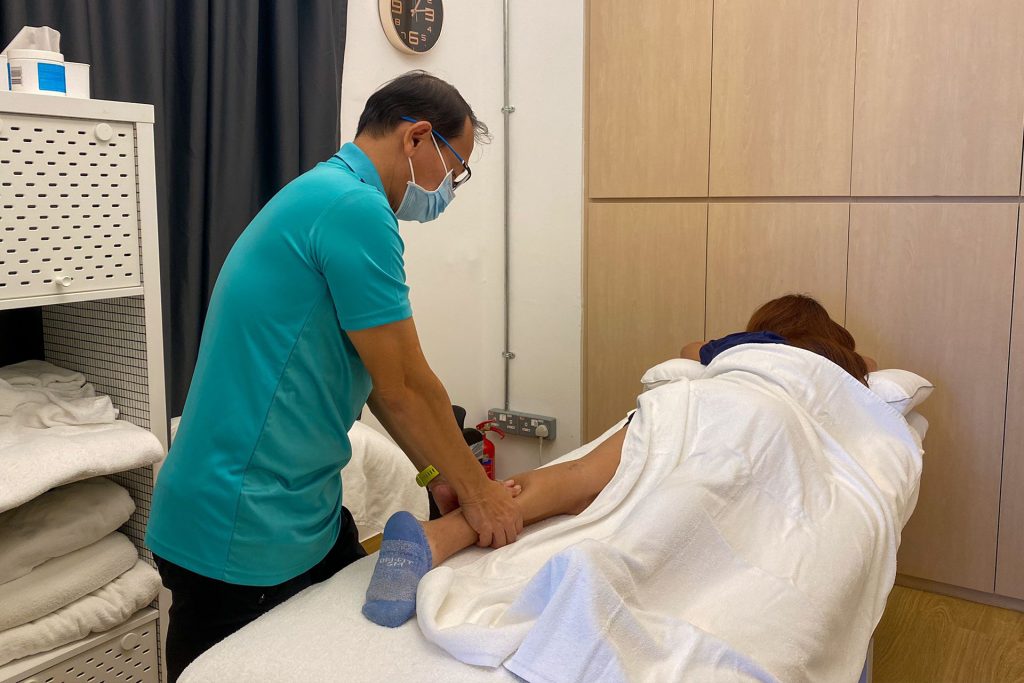
Give Some LOVE A Few Days after an Injury
As the initial shock of a sprain, strain, or tendinitis begins to wane, the tender touch of LOVE steps in to help you return to sports safely.
- Load. Optimal load benefits patients with musculoskeletal injuries as it helps muscle stem cells to activate. Return to regular activity and exercise as soon as your symptoms improve, as muscles regenerate around 7 to 10 days following an injury. This is essential to rebuild and heal tissue structures like tendons, ligaments, and muscles.
- Optimism. A positive outlook can make a difference in your recovery process. Psychological factors rooted in fear or catastrophizing results can negatively impact your recovery and set a negative mental tone in your recovery process.
- Vascularization. Exercise and movement are essential for pain management after musculoskeletal injuries and the therapeutic effects of heat. Cardiovascular activity increases blood flow and circulation to the injured area. Heat results also increase blood flow to an area, increase lymph flow, reduce swelling and relax muscles.
- Exercise. There is evidence to support using exercise to treat sprained ankles or other recurrent injuries. Physical activity can build strength, improve mobility and restore balance. You can ensure maximum recovery during the subacute phase of your recovery by gradually increasing the intensity of your exercise program.
RETURN TO SPORTS TIP 2
“A phased return, so going back with less mileage, under your threshold, to build confidence and guarantee a full return. Rather than going back in too much too soon, having a flare-up, and having to stop/start running again,” says senior physiotherapist Máire Nic Amhlaoibh.
Recovery Time for Knee Conditions
The pavement misses the rhythmic tap of your feet, and you, in return, miss the liberating embrace of the wind against your face. Yet, in the quietude post-surgery, it’s time for healing, growth and resurgence.
Whether it’s the intricate rehabilitation to help you return to sports after a meniscectomy, the nurturing recovery of the medial patellofemoral ligament, or the attentive care required for Osgood-Schlatter and osteochondritis dissecans – each patient’s journey, though distinct, is united by the love of our sport.
When we look at a medial patellofemoral ligament (MPFL) reconstruction, basic movement and decreased pain can typically be seen within 6-8 weeks post-surgery. Returning to sport and normal function can take approximately 6-9 months, contingent upon individual progress and rehab adherence.
RETURN TO SPORTS TIP 3
“Aim to be fitter or stronger than you were pre-injury. The longer you’ve had away from your sport, the longer you should take to build back to the amount you were doing,” says senior physiotherapist Joe Zhang.
Adults with a history of Osgood-Schlatter can still lead an active lifestyle and participate in sports with a careful and considered approach. Being attuned to the body’s responses, seeking professional guidance, and adopting appropriate preventive and management strategies are crucial to mitigating the risk of exacerbating OSD-related issues and ensuring a safe and enjoyable return to sports for patients with Osgood-Schlatter.
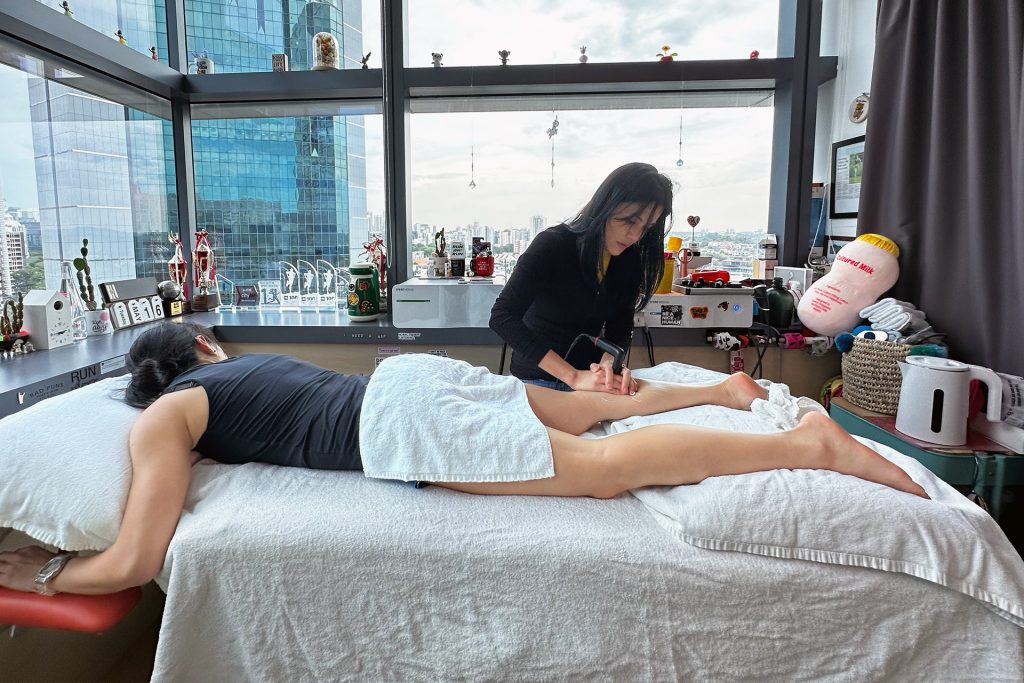
In non-surgical cases of osteochondritis dissecans, recovery with rest and physiotherapy can take a few months, with a focus on symptom relief. Post-surgical patients may take a few months, but it may be 6-12 months before a total return to previous activity levels, depending on the severity and location of the lesions.
These are general timelines, and individual recovery can vary widely depending on the severity of the condition, the individual’s overall health, the effectiveness of the surgery (if applicable), and a patient’s adherence to the physiotherapy plan.
ACL Return To Sports Timeline
An anterior cruciate ligament (ACL) injury is one of the most dreaded injuries for athletes. As part of the comprehensive post-injury management and rehabilitation, using an ACL return to sports brace often becomes an integral step in returning to the playing field. These braces provide knee stability, protection, and support, allowing athletes to regain confidence in their movement patterns.
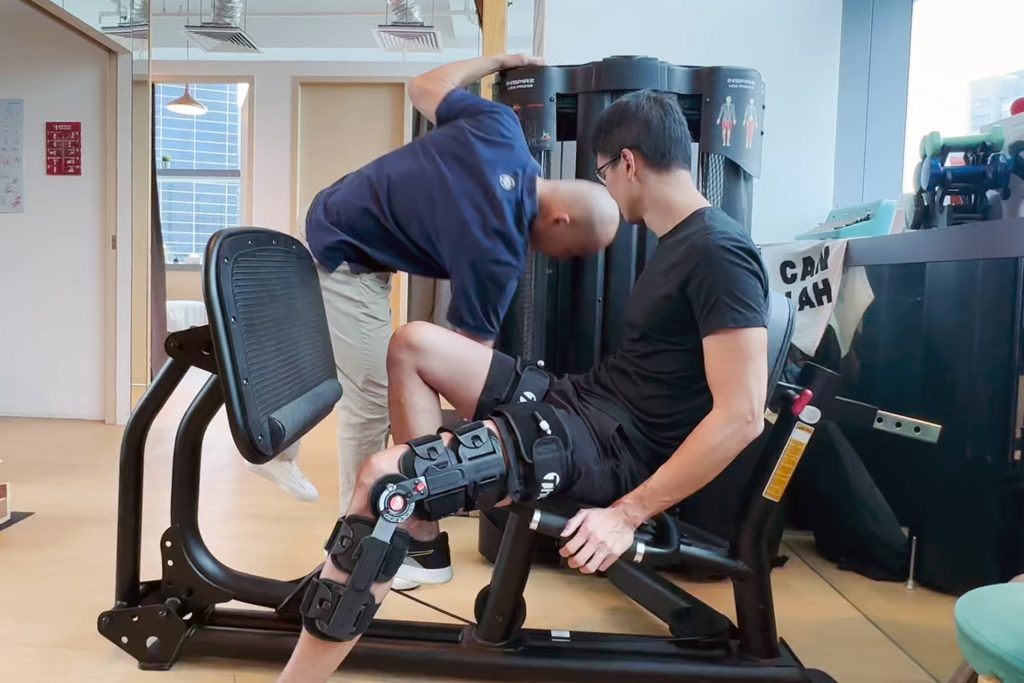
Especially during the initial stages of returning to physical activities, an ACL brace can safeguard against further injuries by preventing undue strain on the healing ligament. This doesn’t just provide a physical safeguard but also offers a psychological boost.
Knowing that there’s a supportive mechanism can encourage athletes to push their boundaries gradually, aiding in a smoother transition back to full-fledged sporting activities. However, it’s crucial to note that while ACL braces are valuable, they should complement a physiotherapy and strength training program, not replace it.
Returning to sport after an ACL injury is not just a matter of willpower; it’s a treatment timeline coordinated by your healthcare team from orthopaedic surgeons, physical therapists and rebab therapists. Generally, post-ACL reconstruction, a return to complete sports activities typically spans a period of 9 to 12 months.
However, at HelloPhysio, our leading treatment approaches using the latest technologies — from MAGNETOLITH, INDIBA® Activ, Shockwave Therapy, LightStim MultiWave® Light Therapy and LightStim Lift — may help athletes return to sport within 6 months following ACL reconstruction surgery. However, this timeline can vary depending on the individual, the injury’s extent, the surgical intervention’s success, and the rigor of rehabilitation.
The initial few months post-surgery typically focus on restoring joint mobility, reducing inflammation and light strength training exercises. As the months progress, the focus shifts to sport-specific drills, agility training, and enhancing neuromuscular control.
RETURN TO SPORTS TIP 4
“Start with a gentle run-walk routine if you’re not in too much pain. Keep your muscles pliable using dynamic, not static, stretches. Get your running gait checked by a professional, and use your watch data to avoid injuries,” advises founding physiotherapist Jenny Huang.
Throughout this timeline, regular assessments by physiotherapists and orthopedic specialists are crucial to gauge readiness for the next phase. It’s also worth noting that the decision to return to sport isn’t solely based on physical readiness; psychological readiness, including confidence in the injured knee and absence of fear of re-injury, plays a significant role in determining the right time to step back onto the field.
Return To Sports Faster at HelloPhysio
As a leading Singapore physiotherapy clinic, HelloPhysio’s team educates patients on understanding and treating injuries using evidence-based therapies. We give patients the information they need to prevent recurrent or repetitive motion injuries and avoid unnecessary treatment. Our patients are encouraged to be involved at every stage of their injury recovery.
If you’re interested in how to make sports injuries heal faster, contact our physio clinic. We’ll happily help you with the best physiotherapy treatment and management for your soft tissue and acute sports injury.

